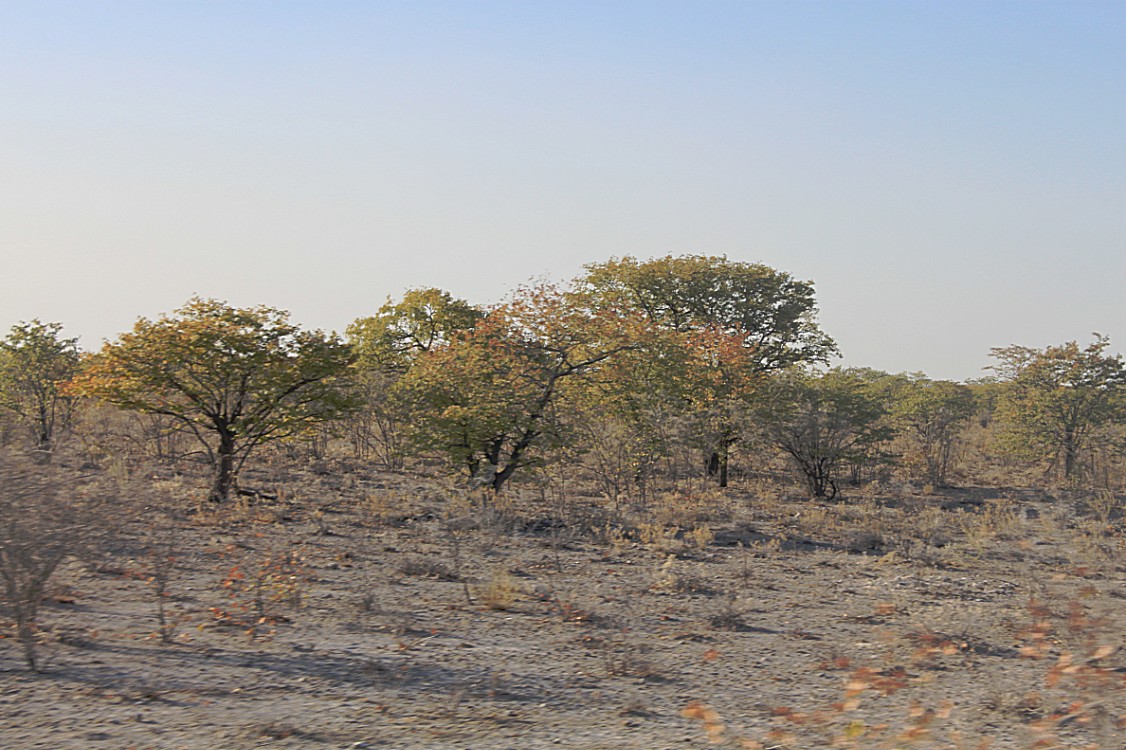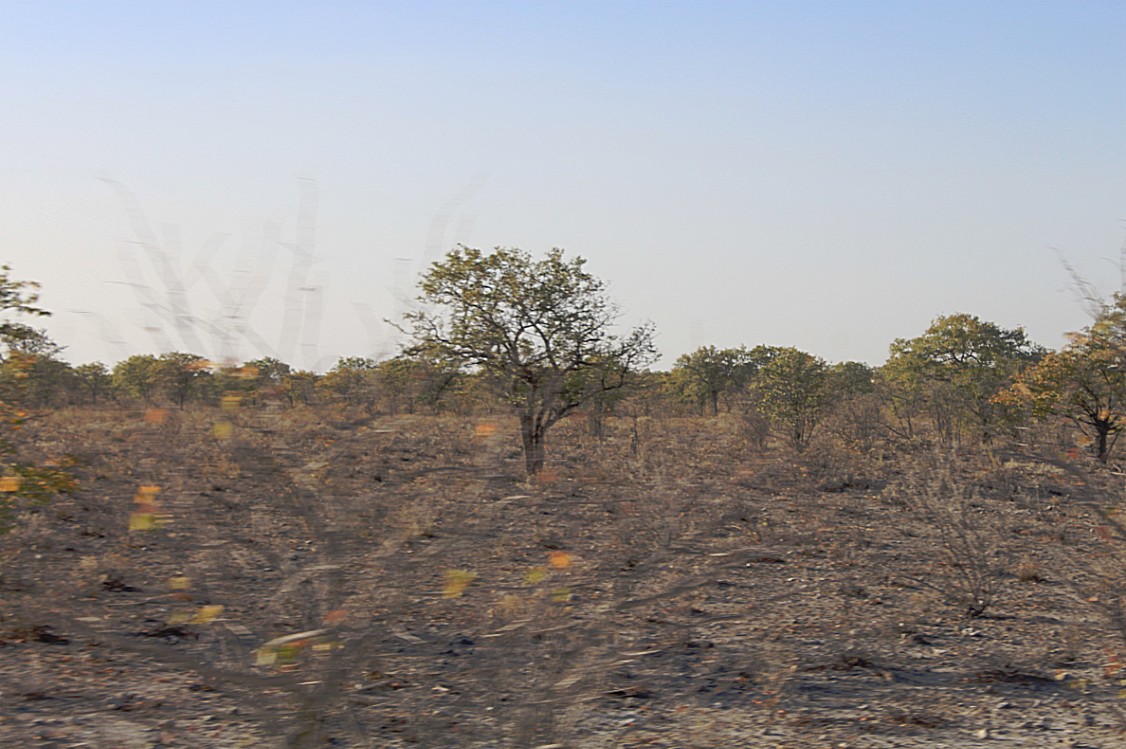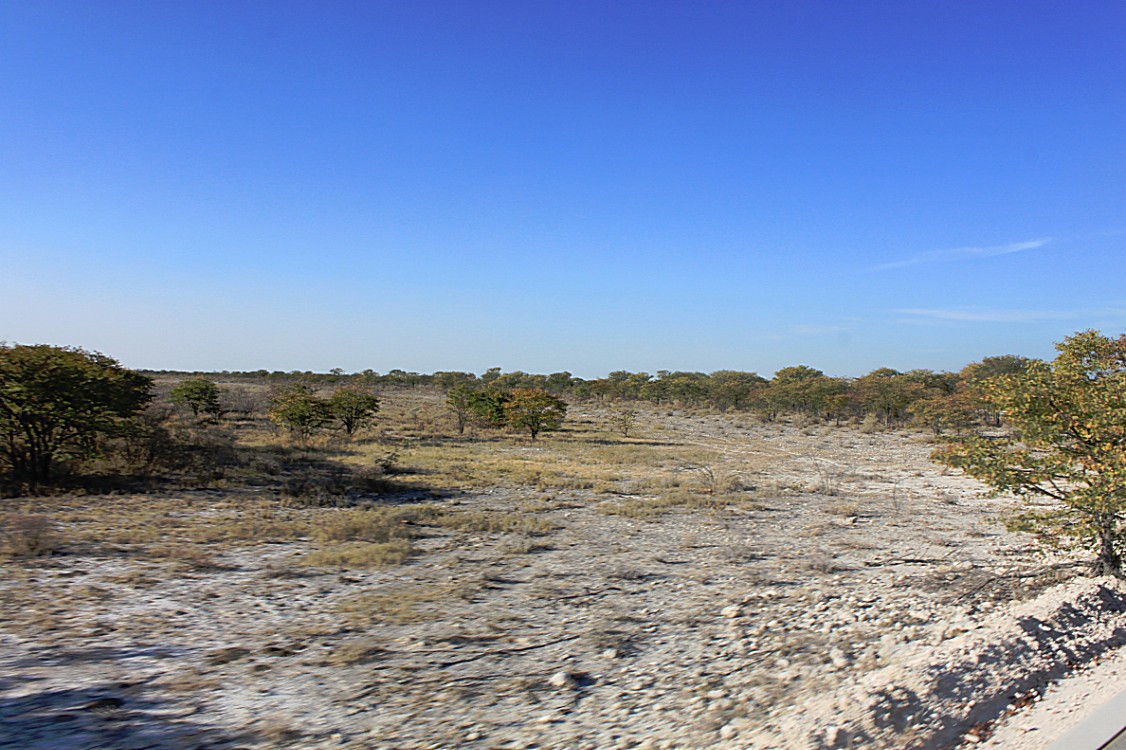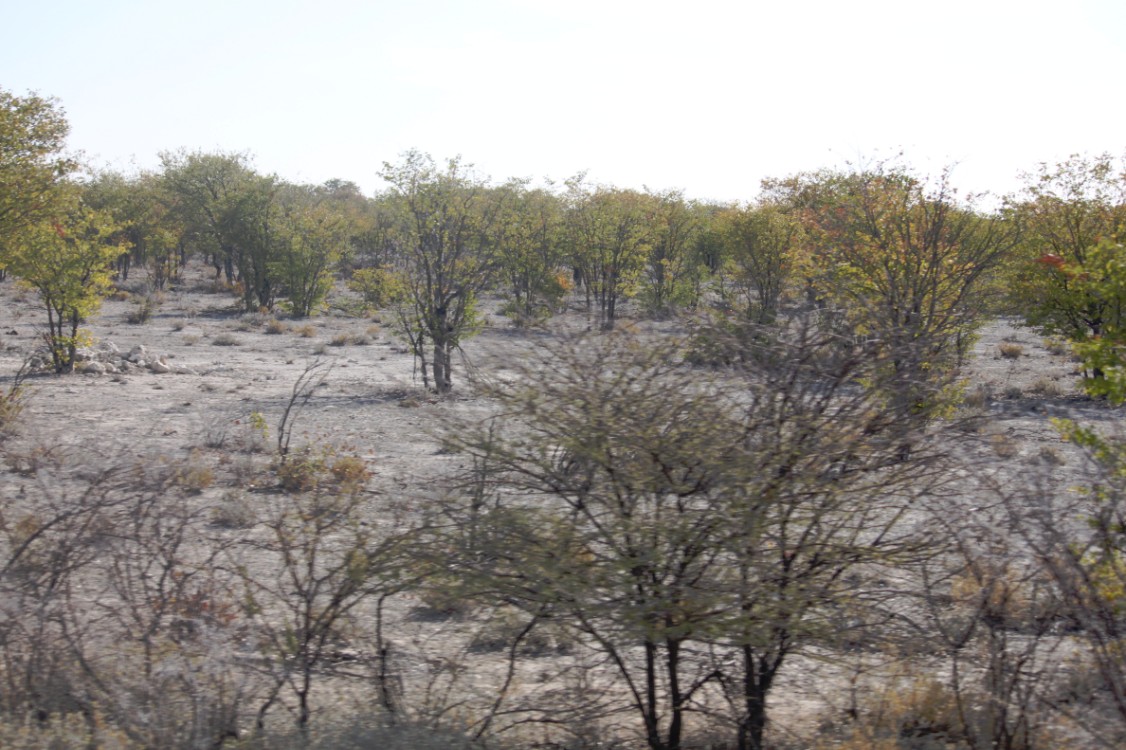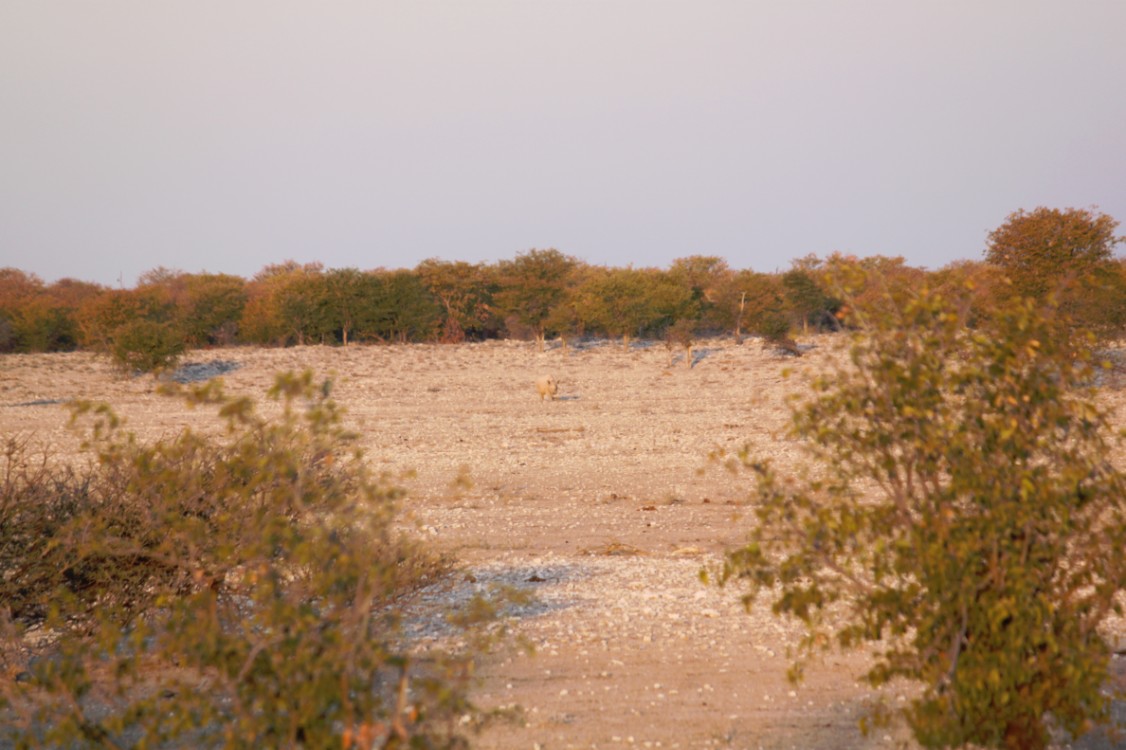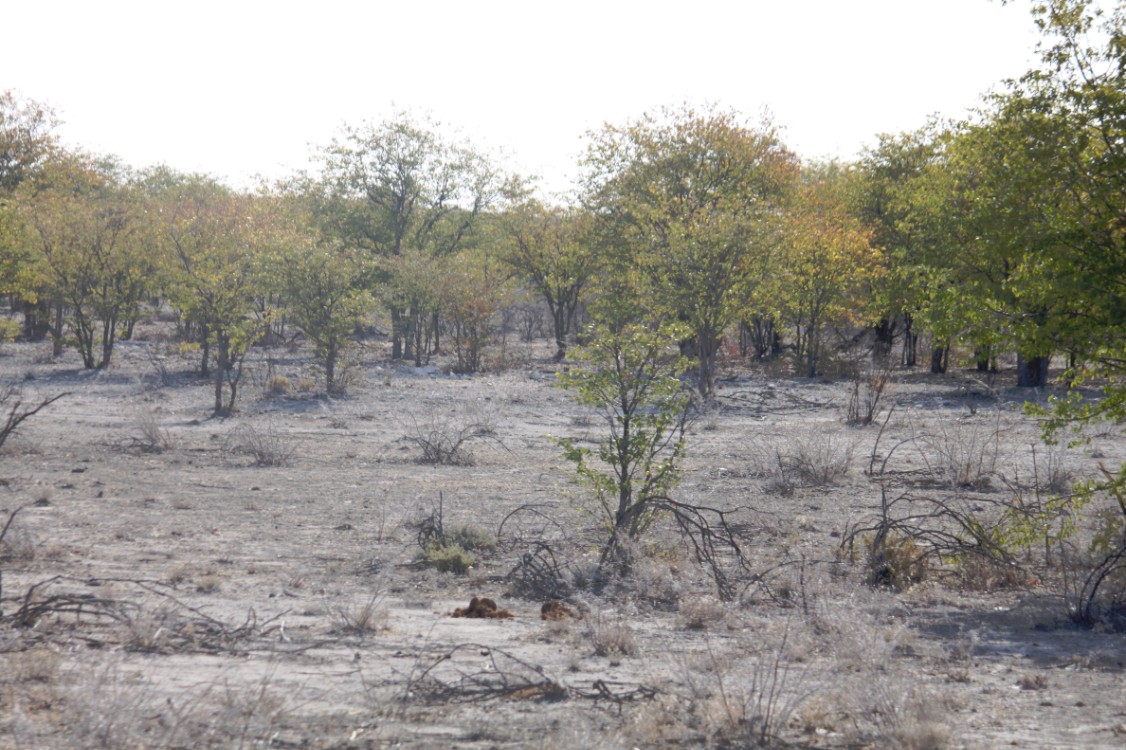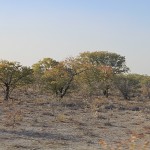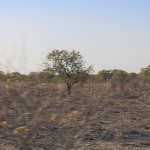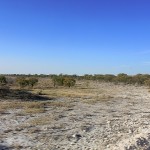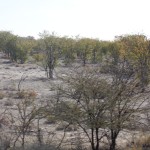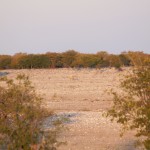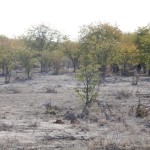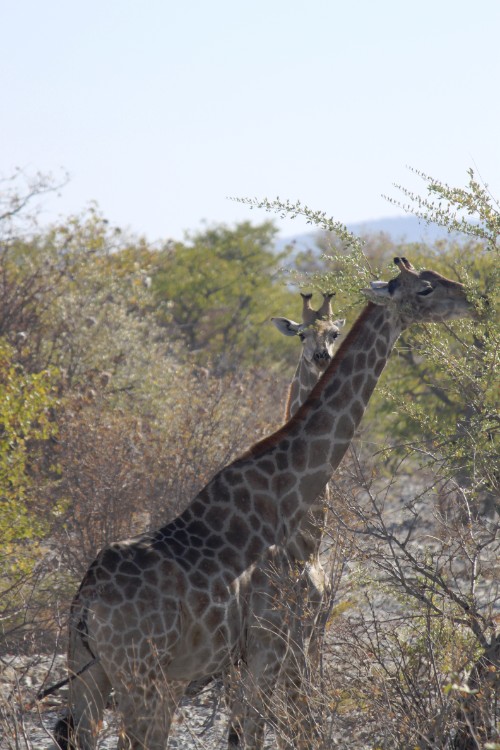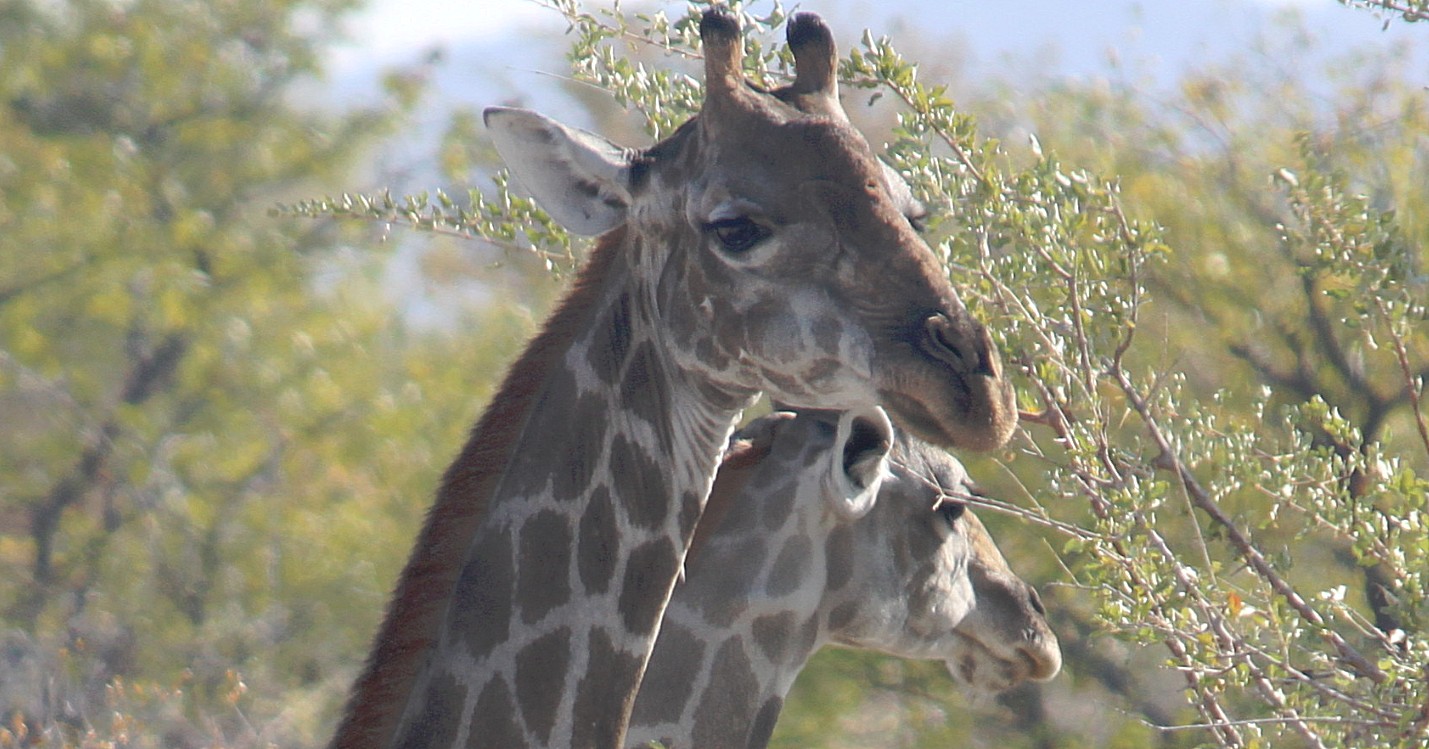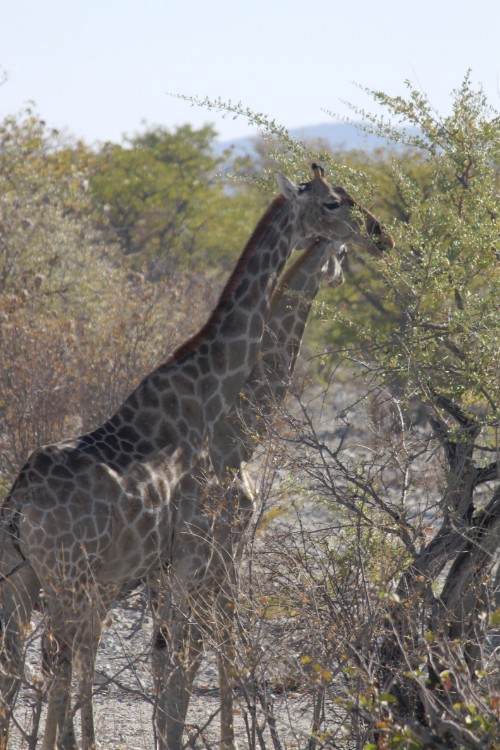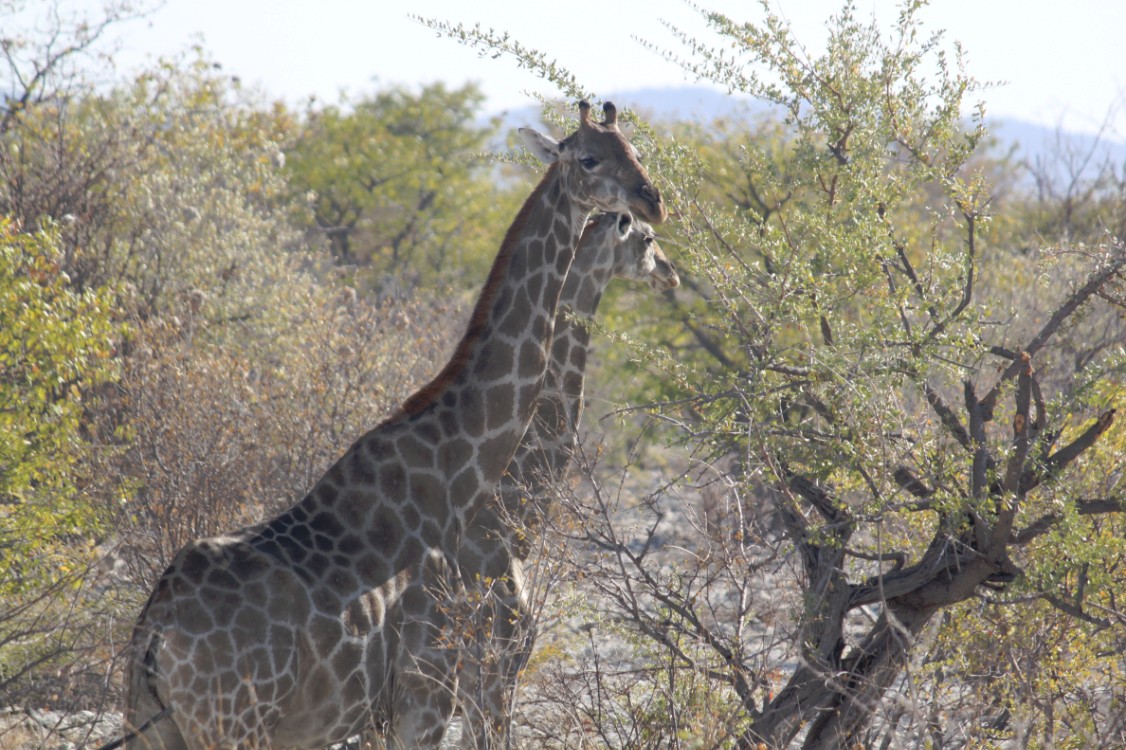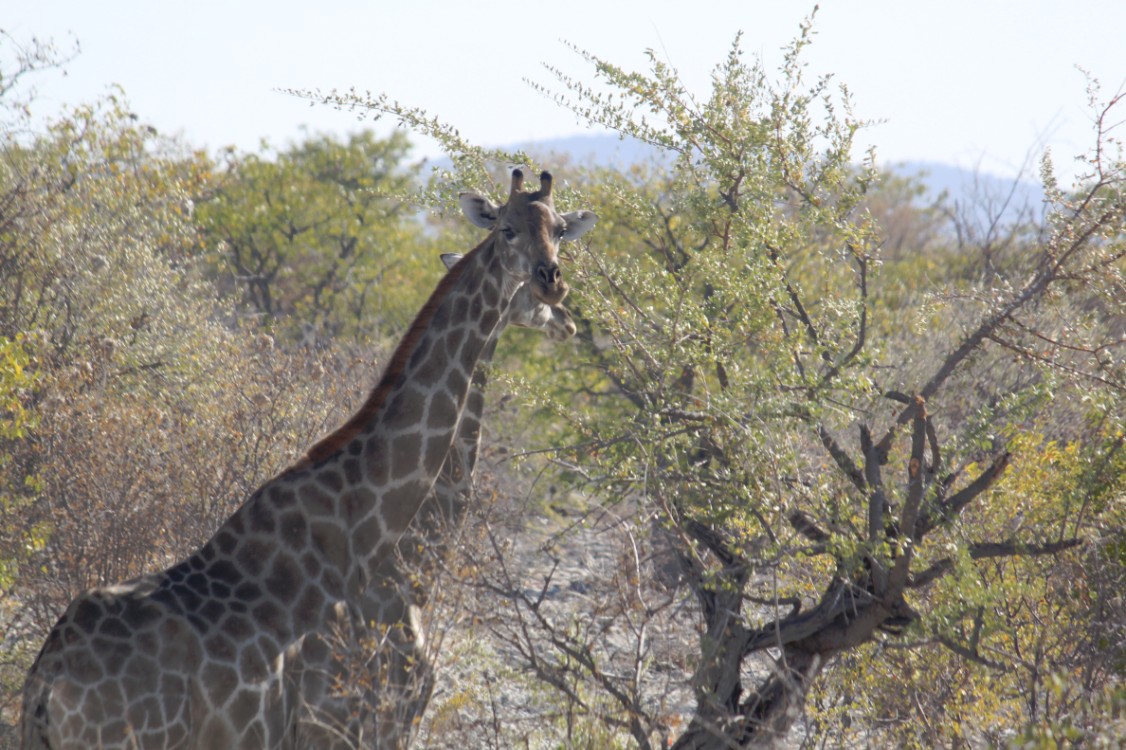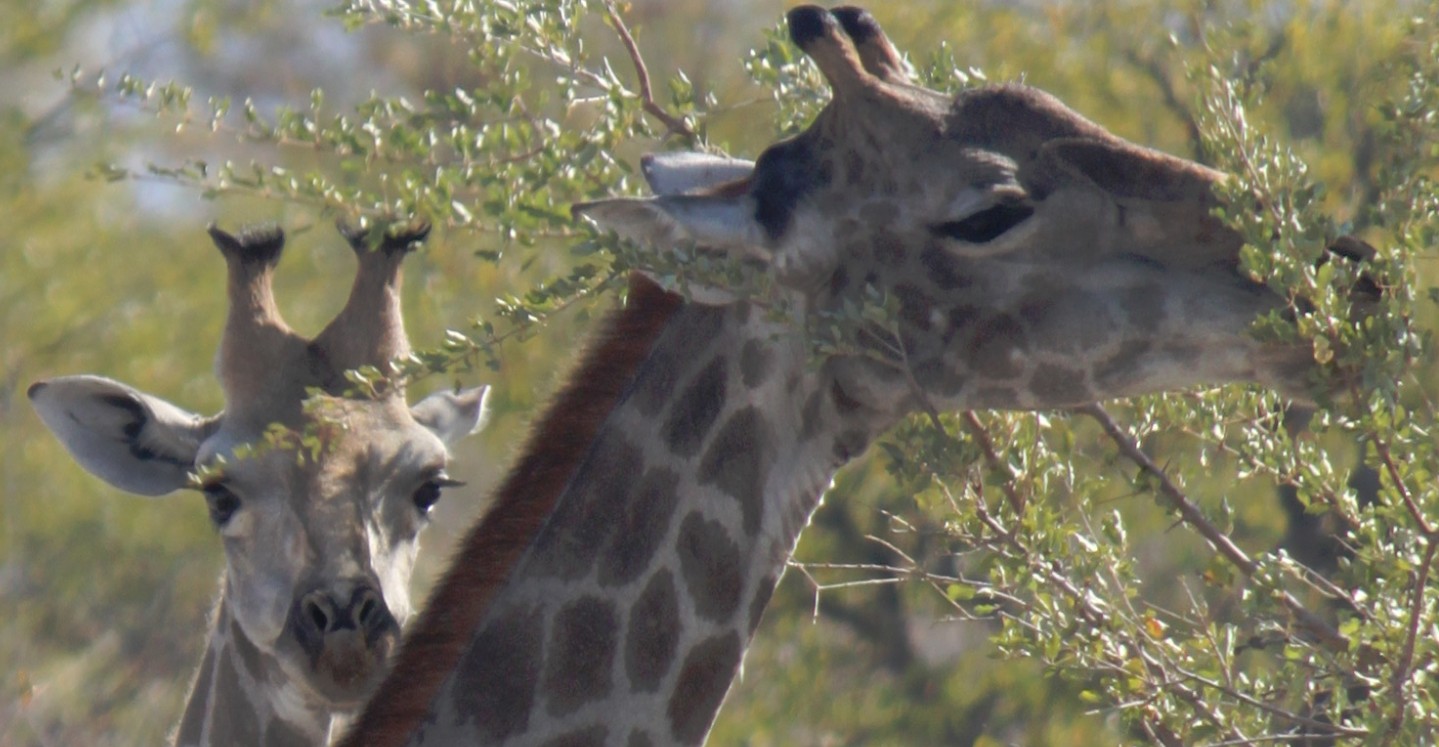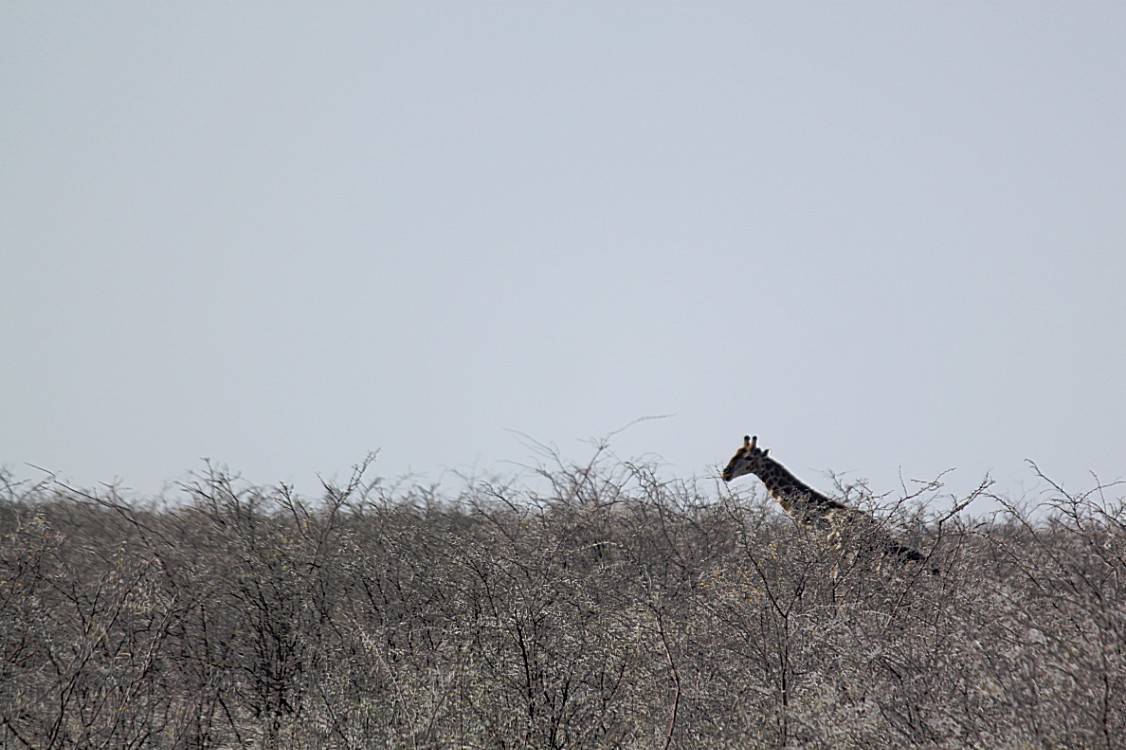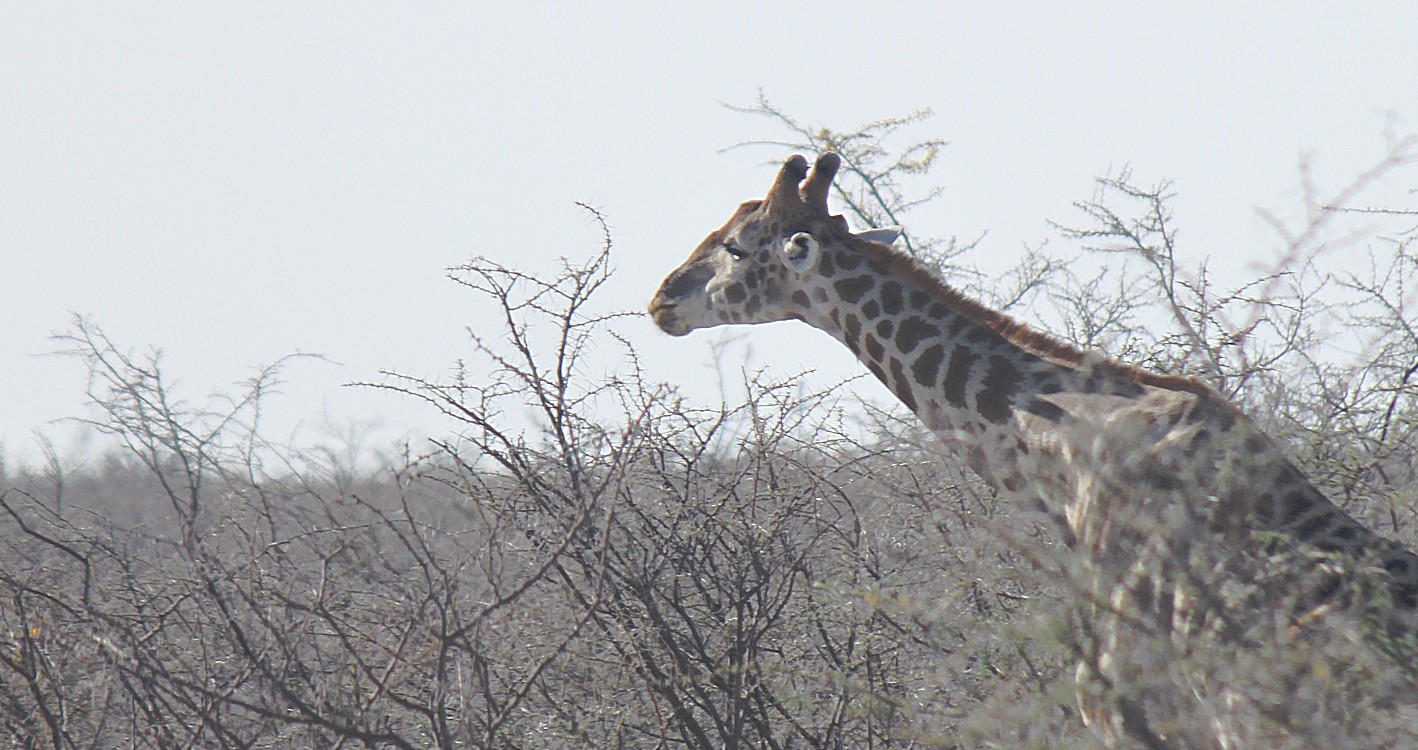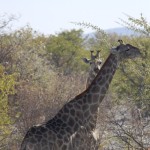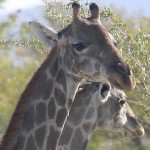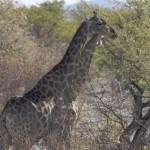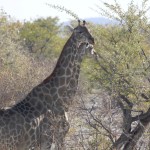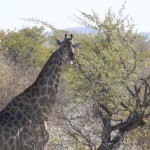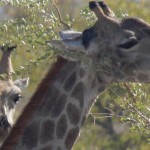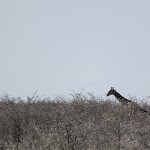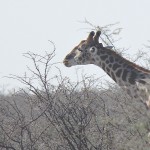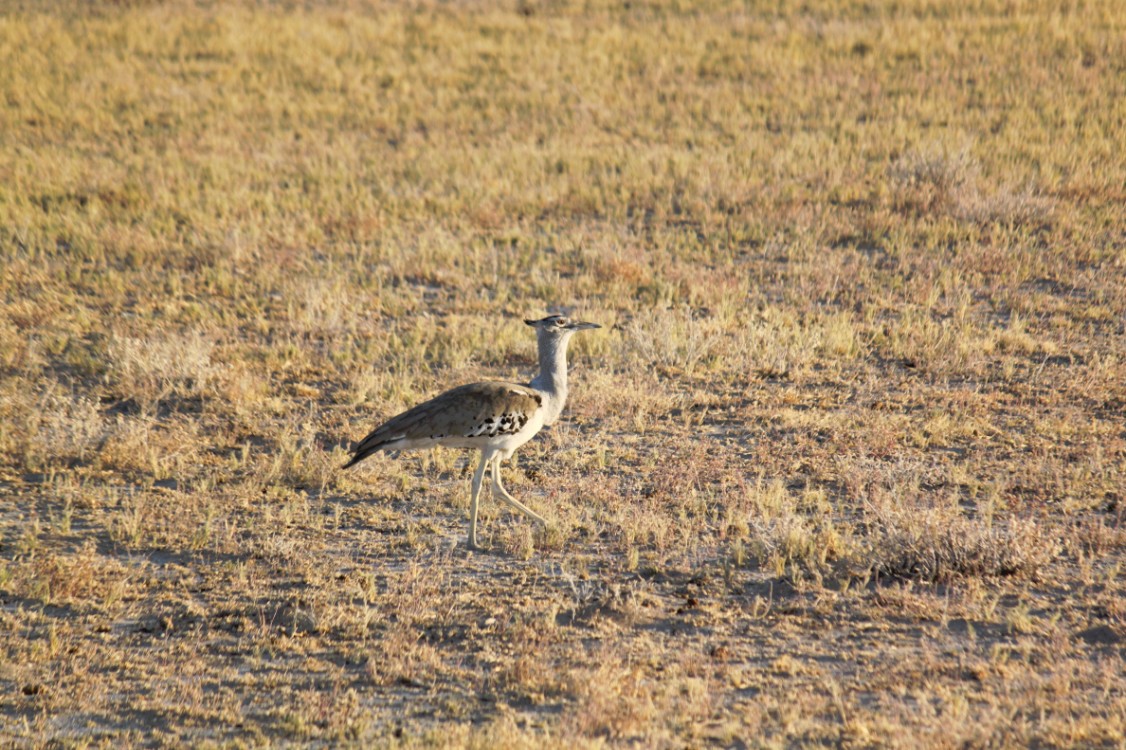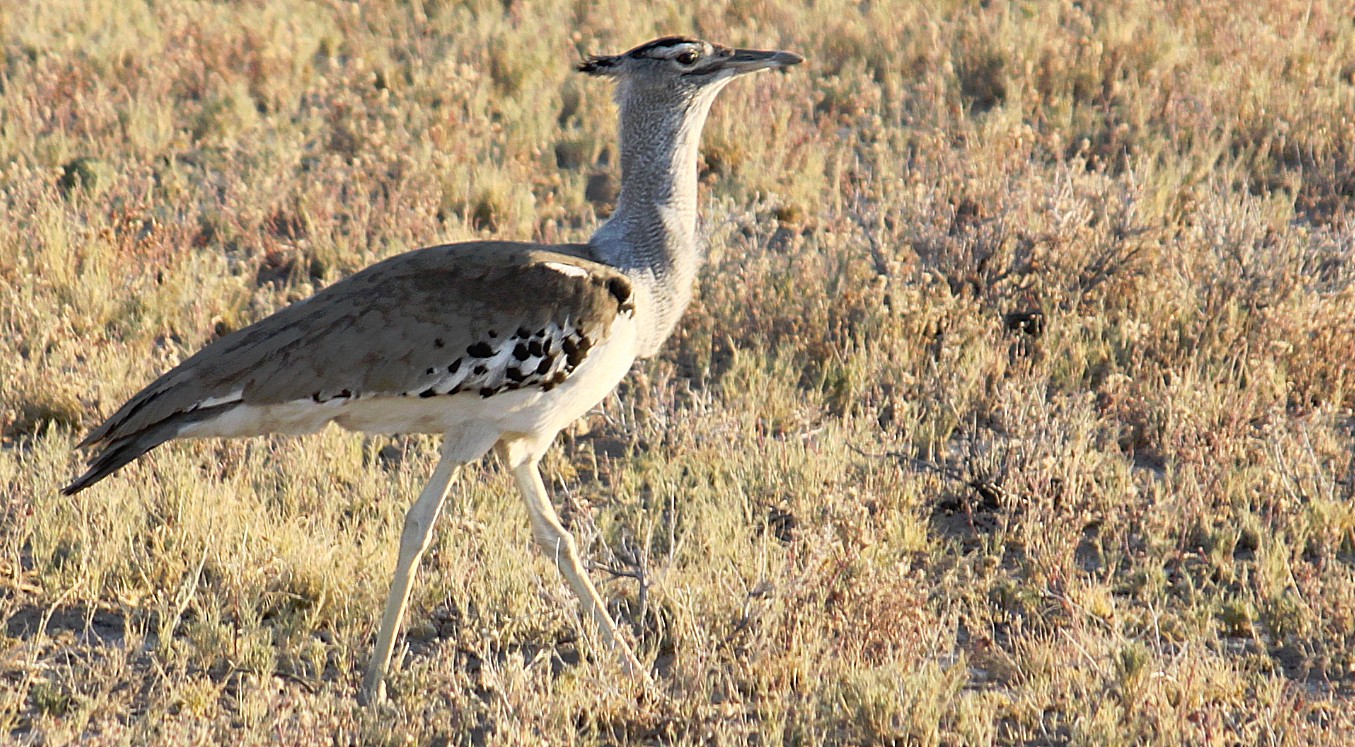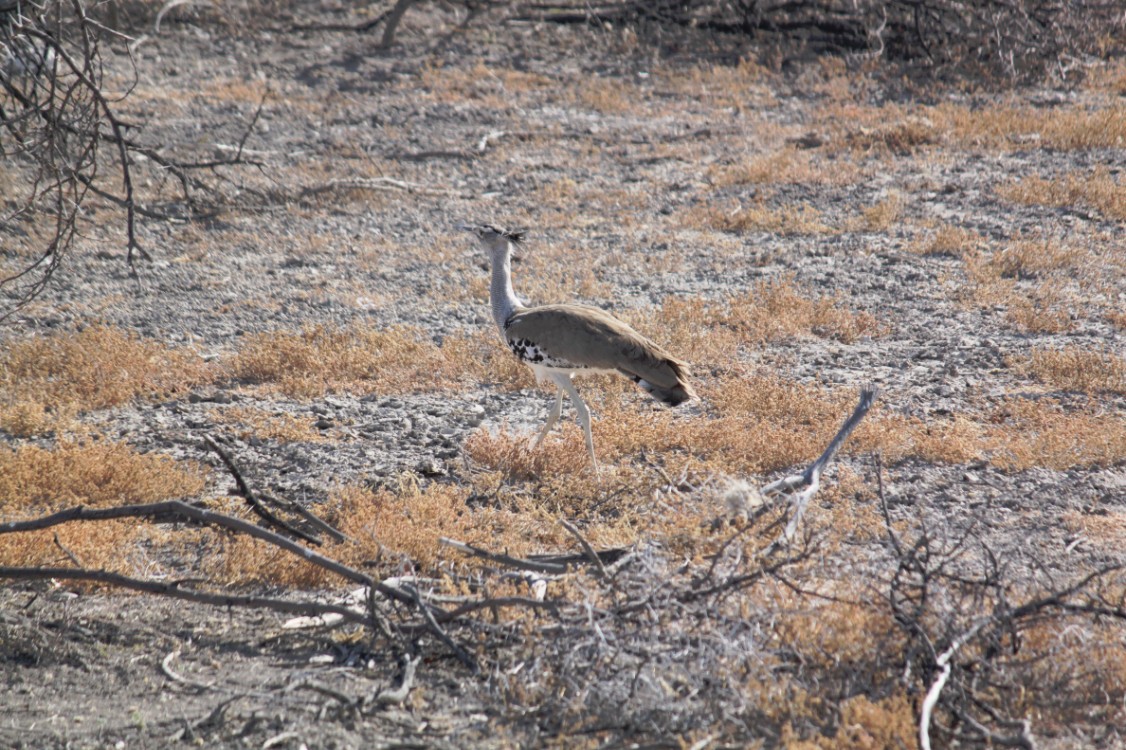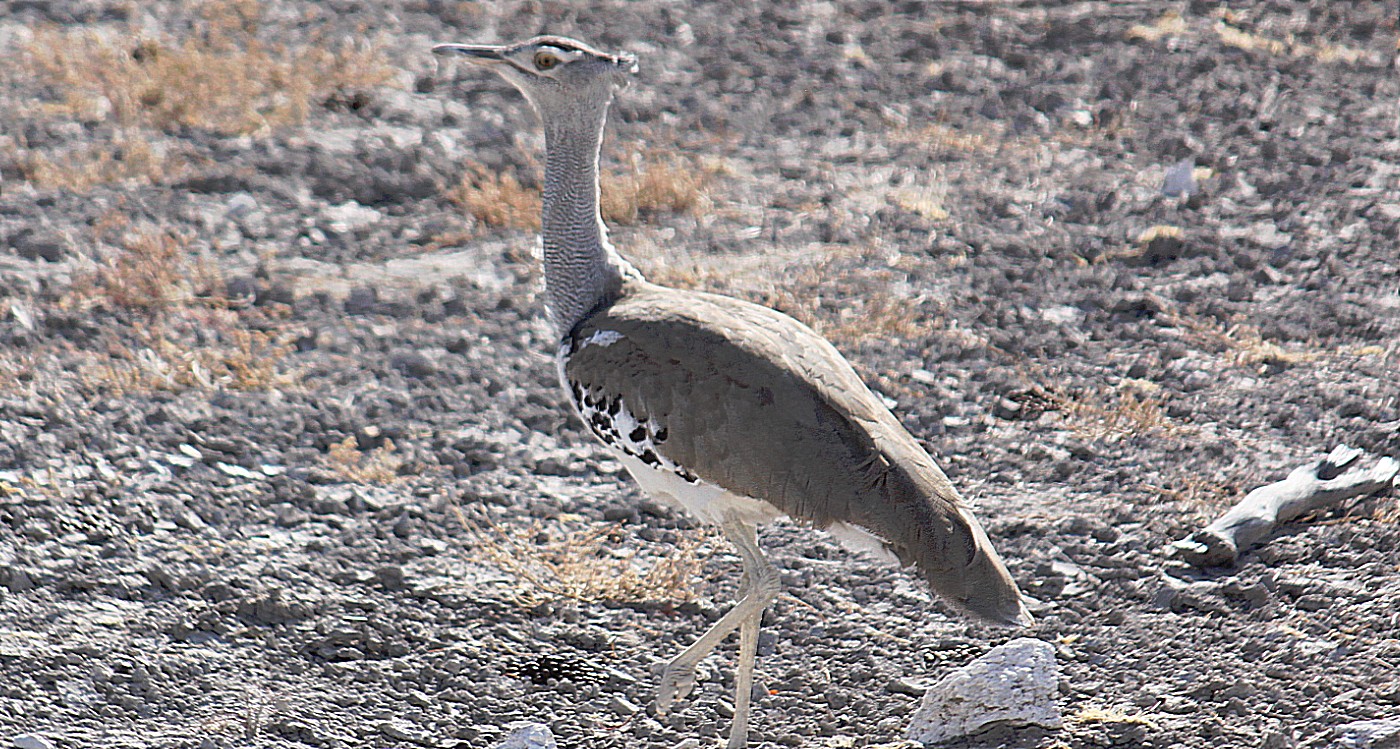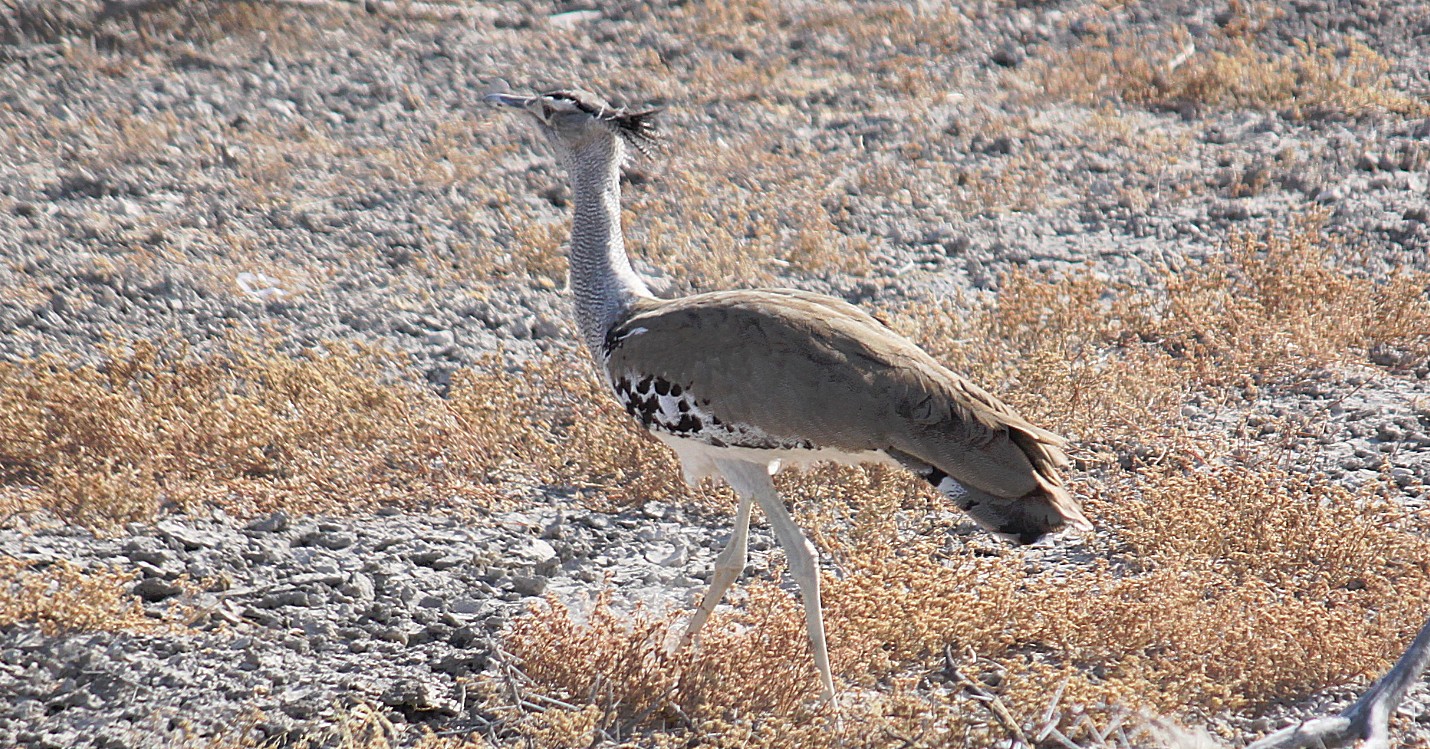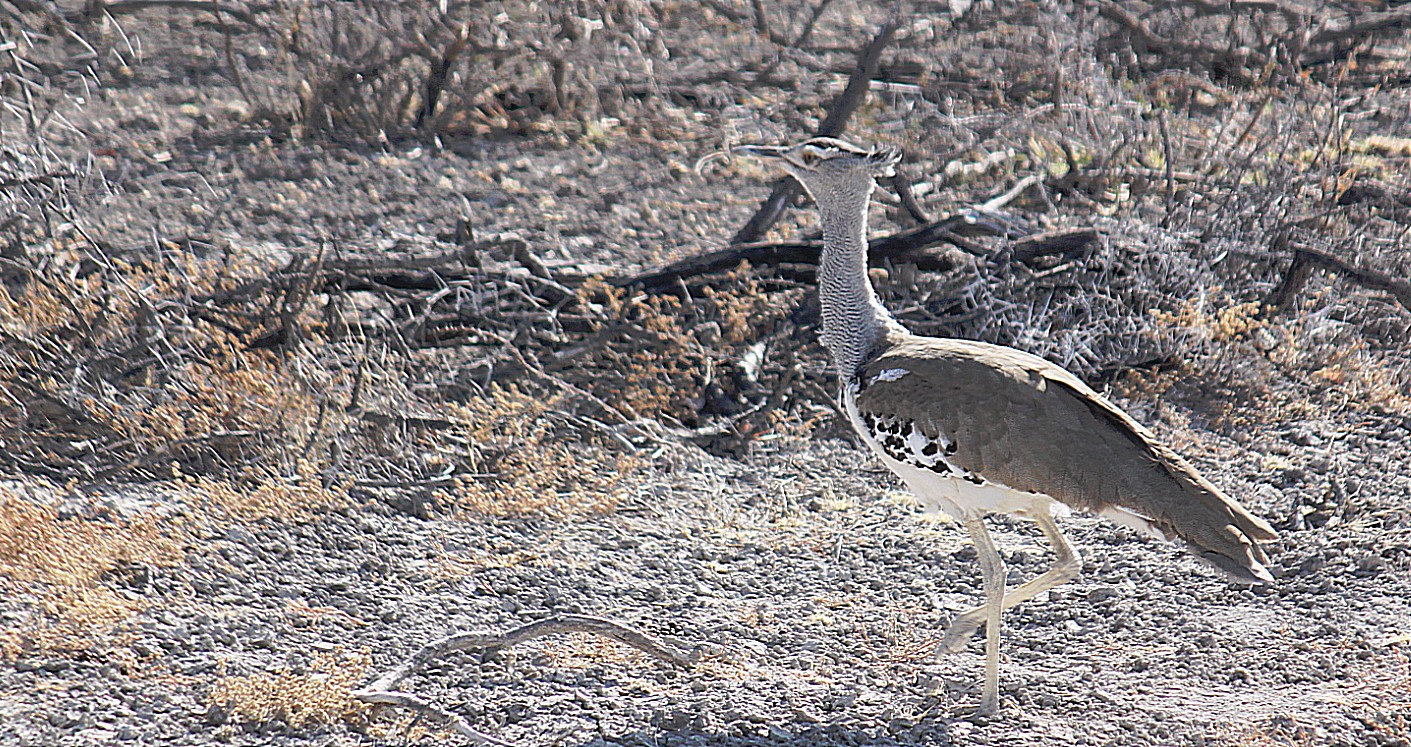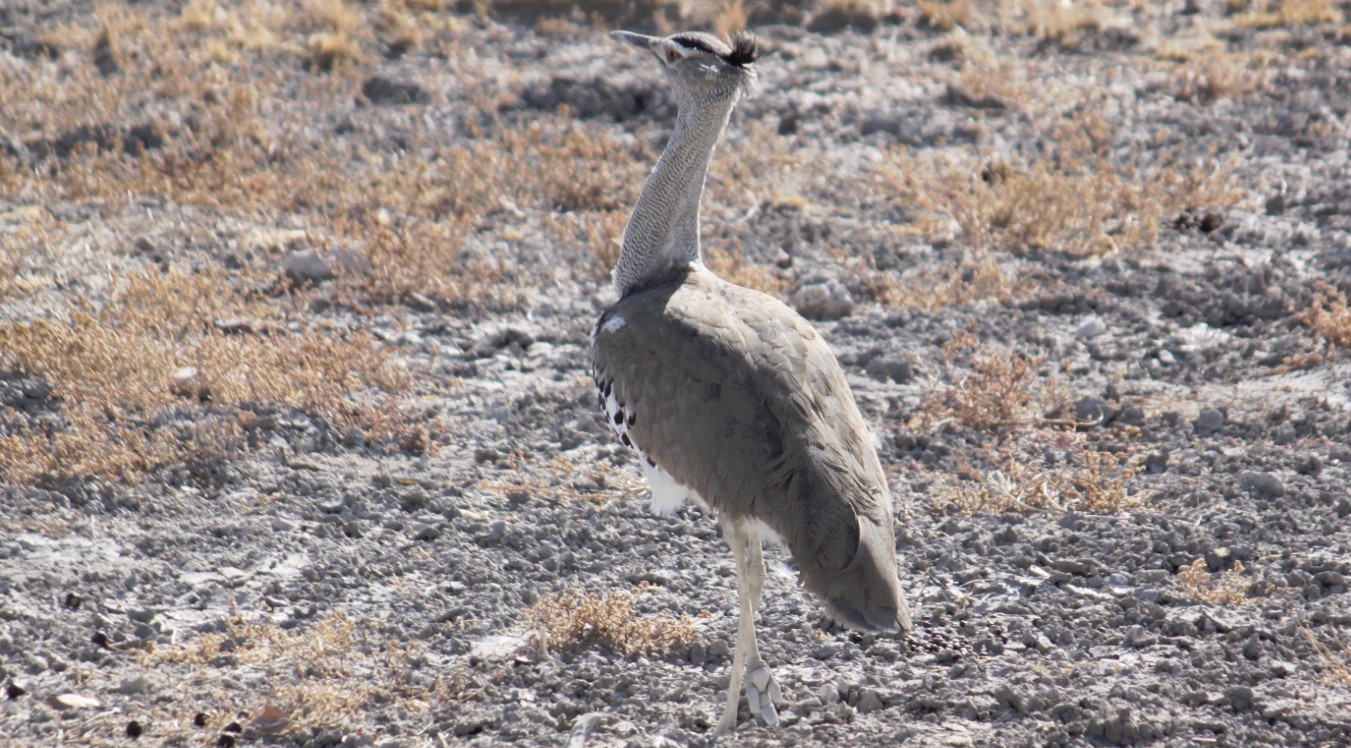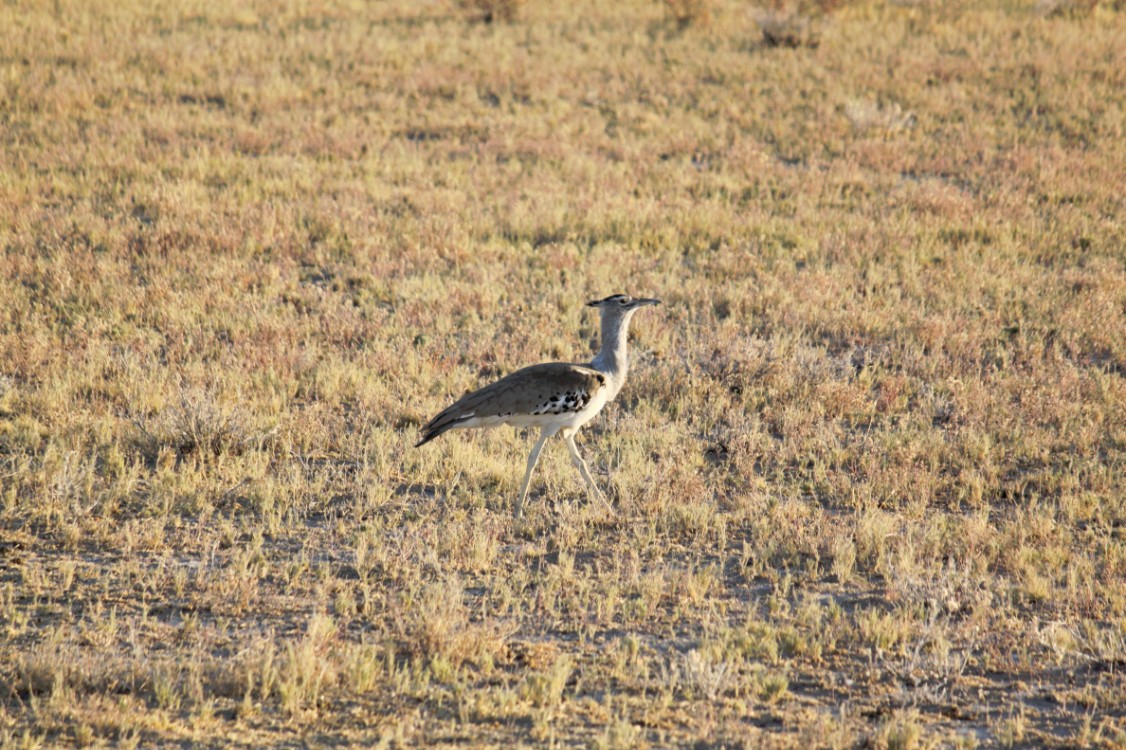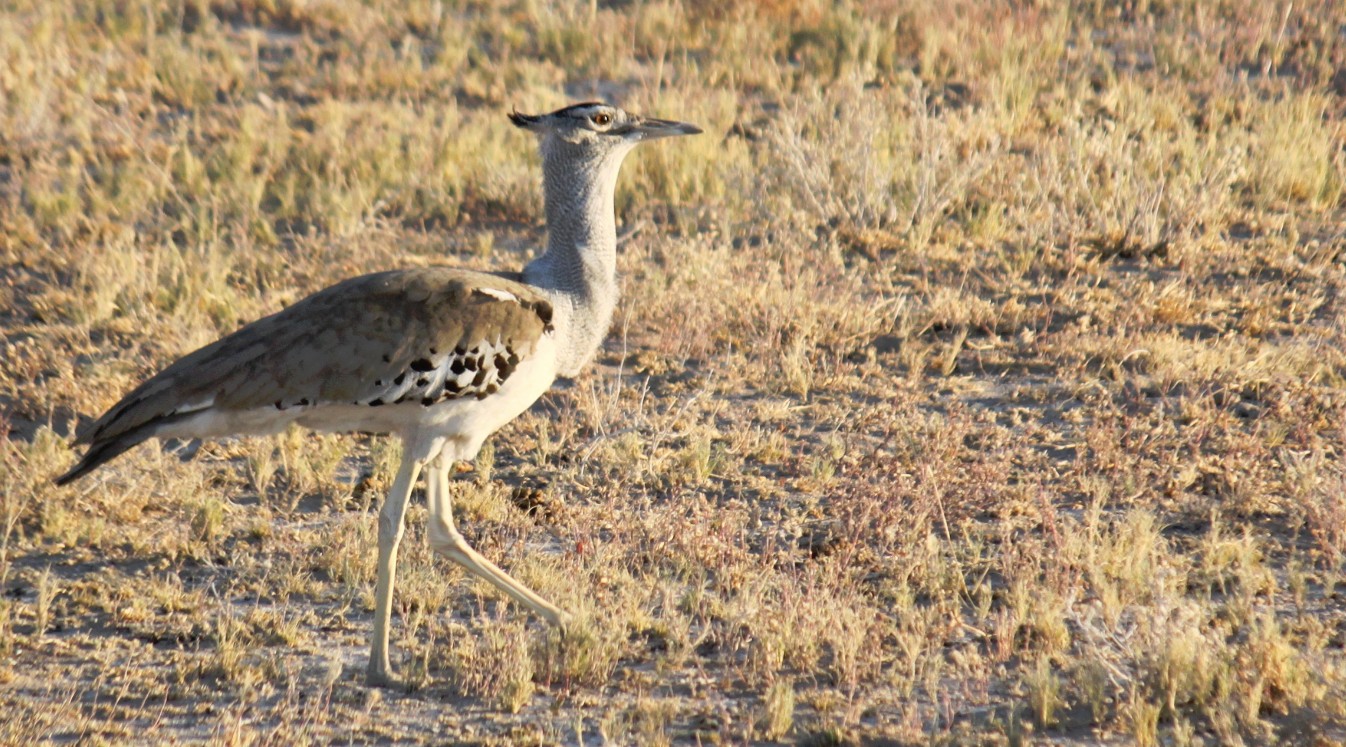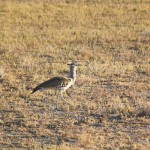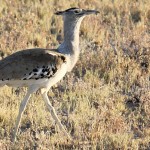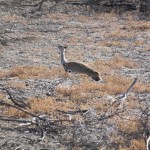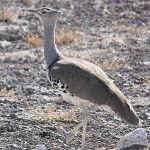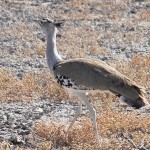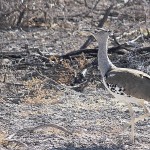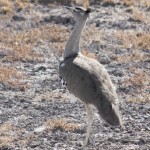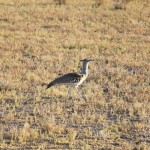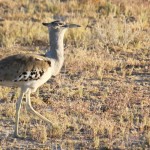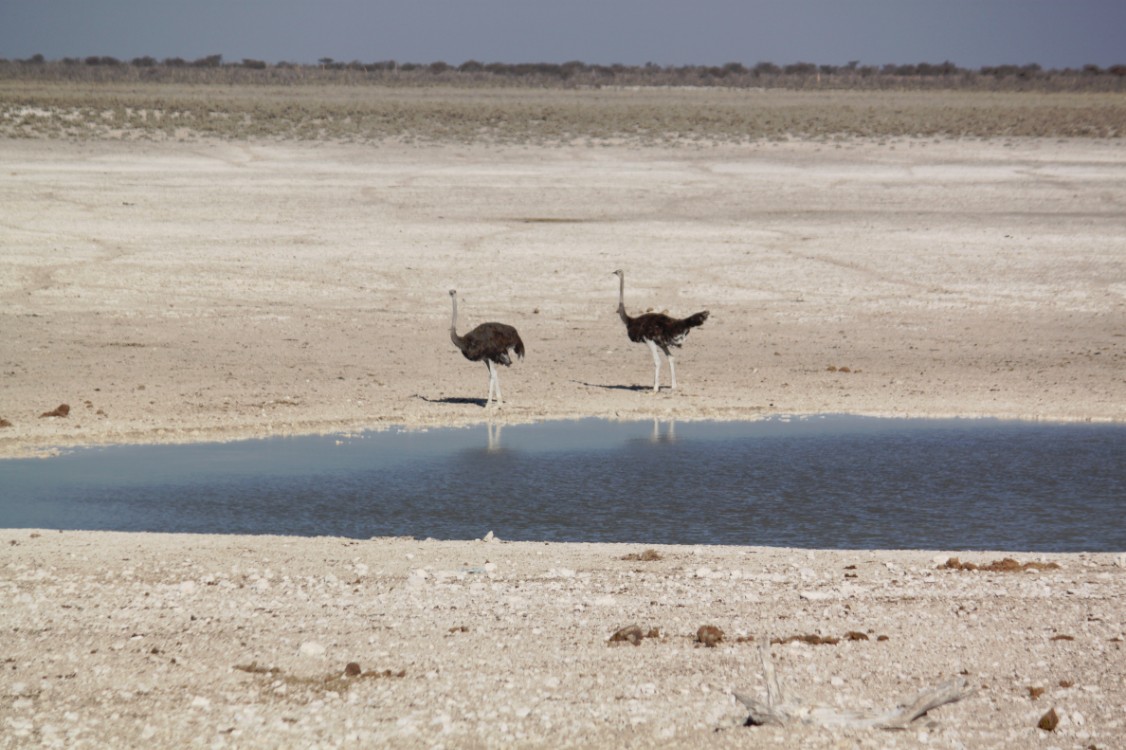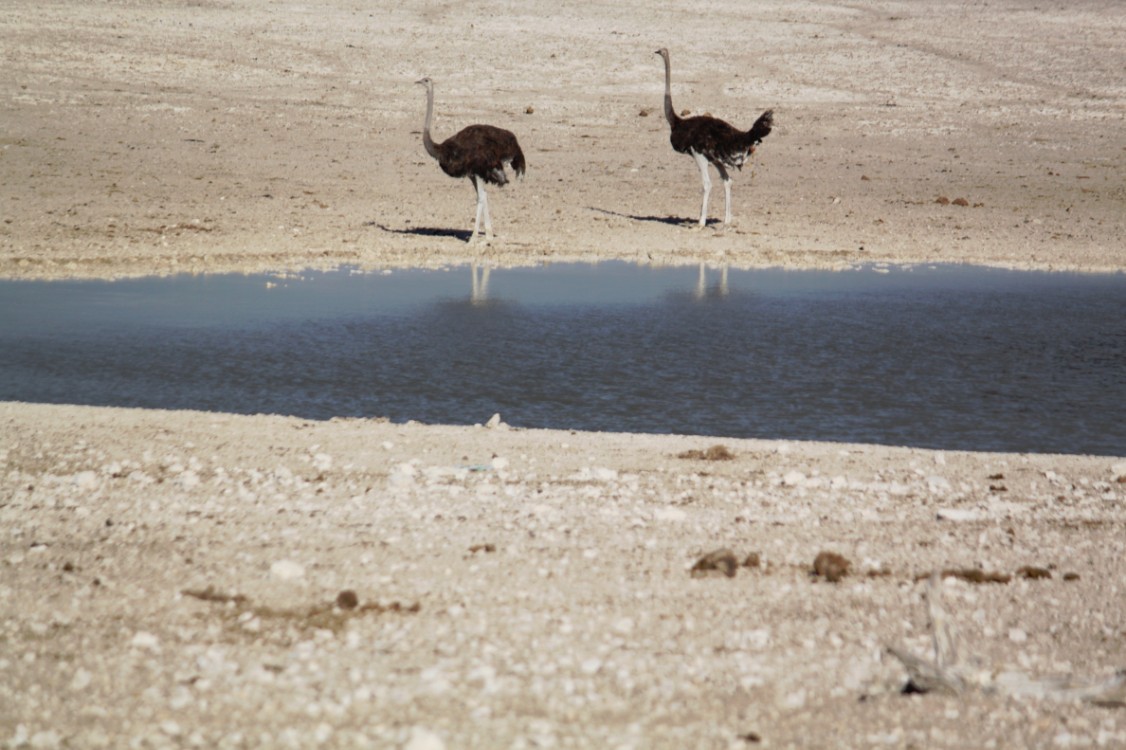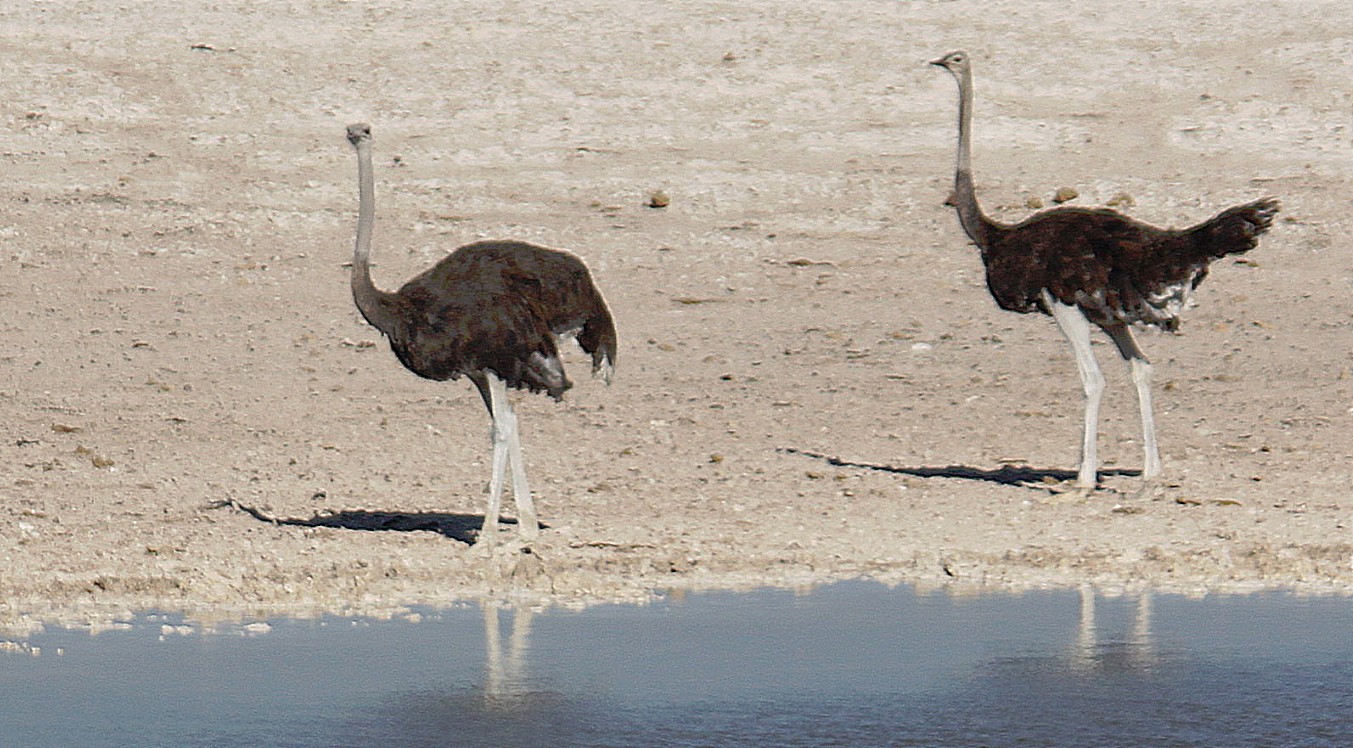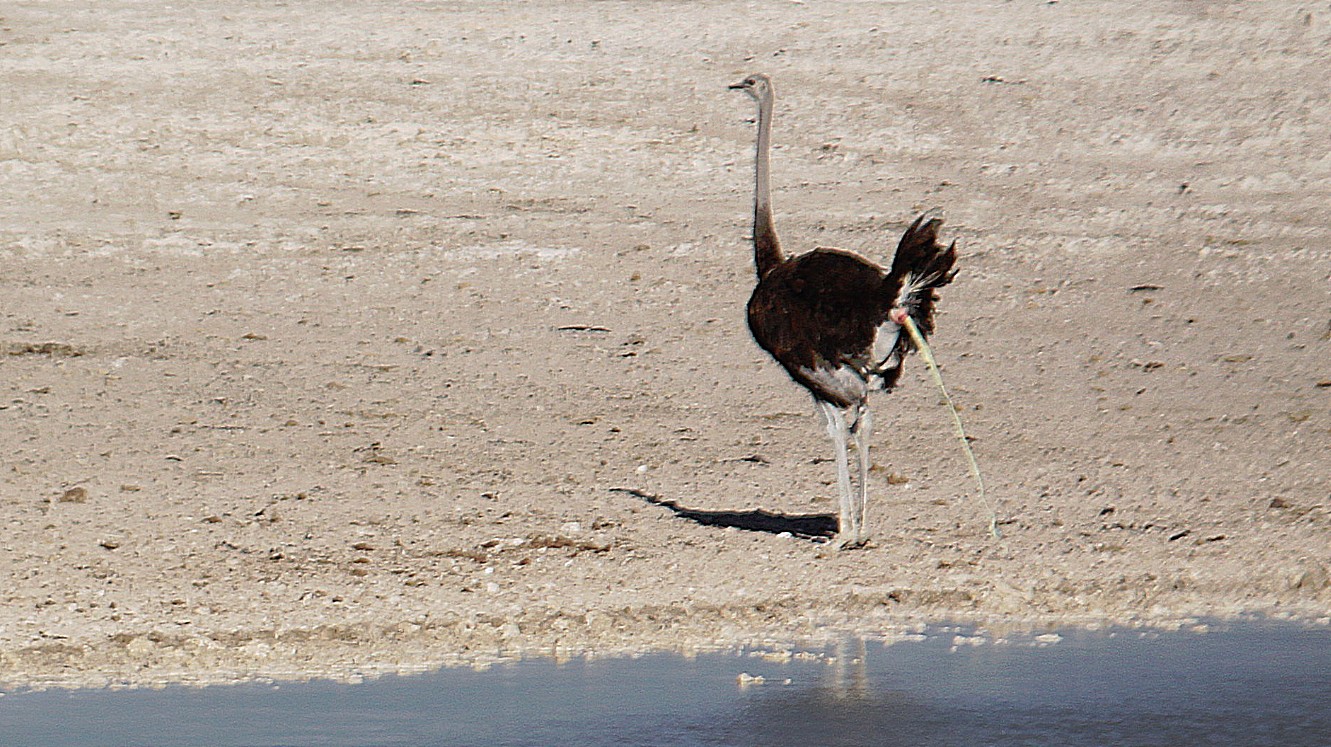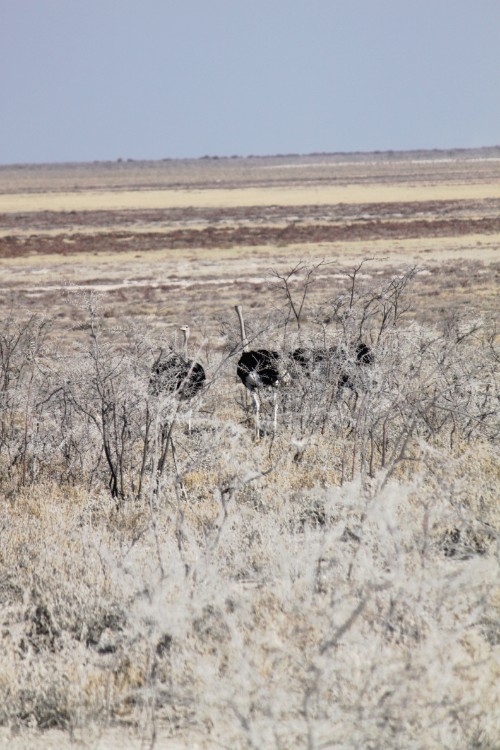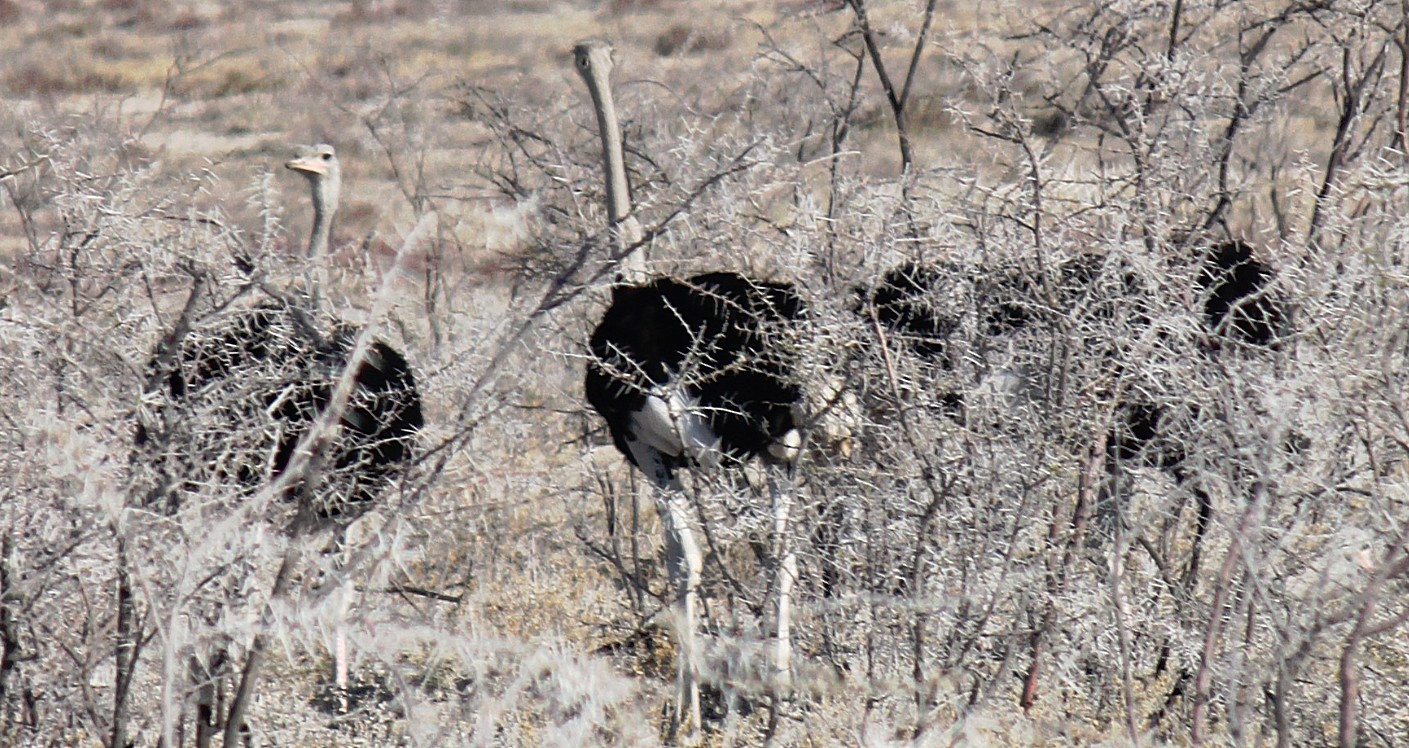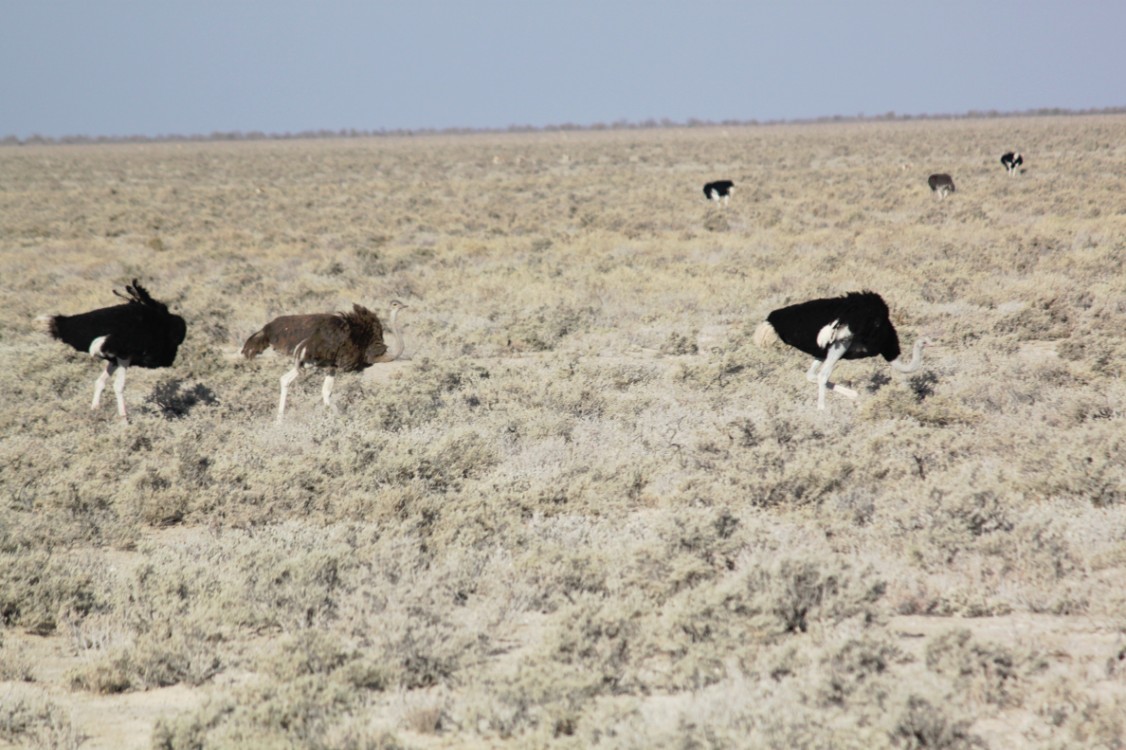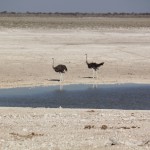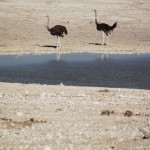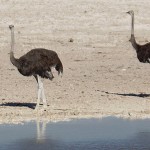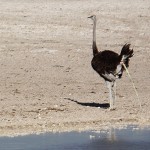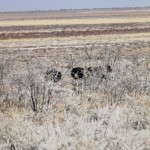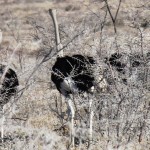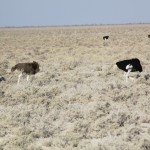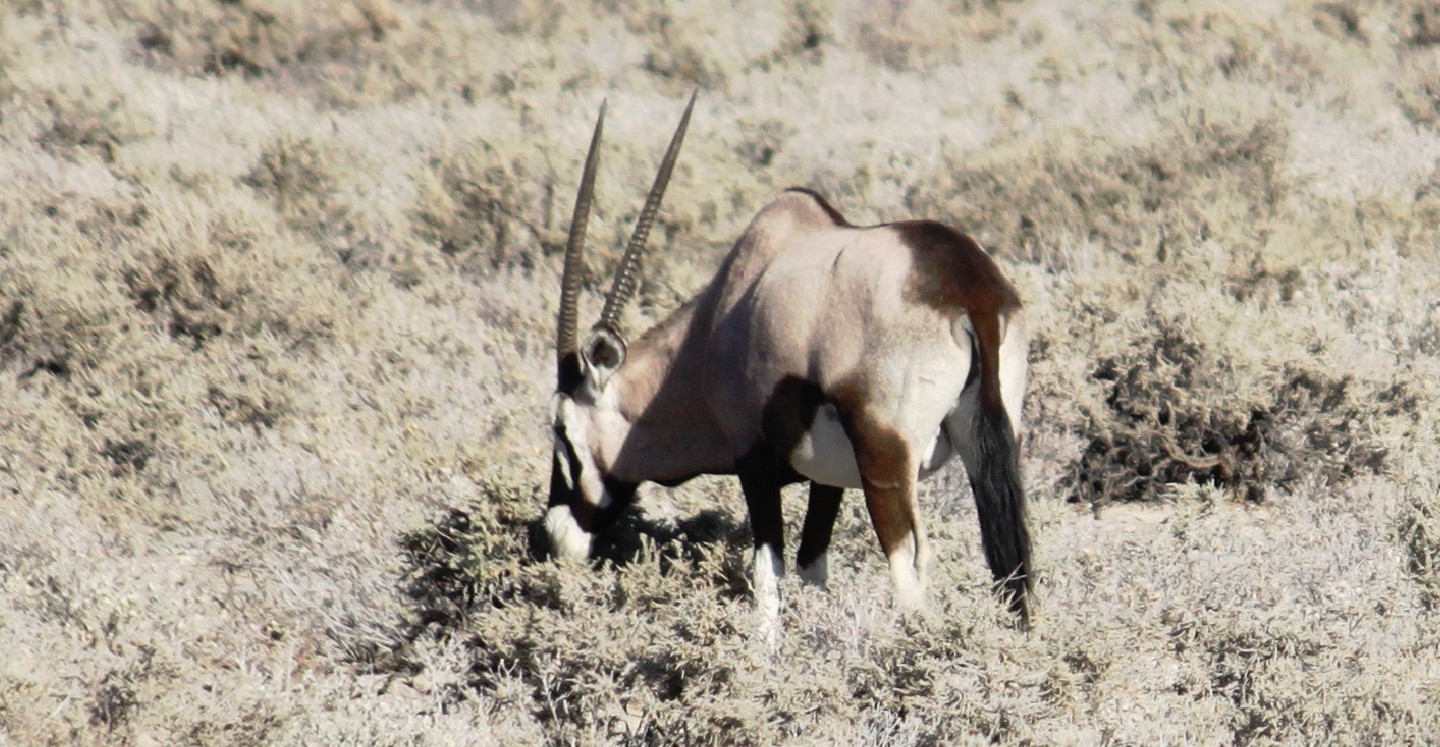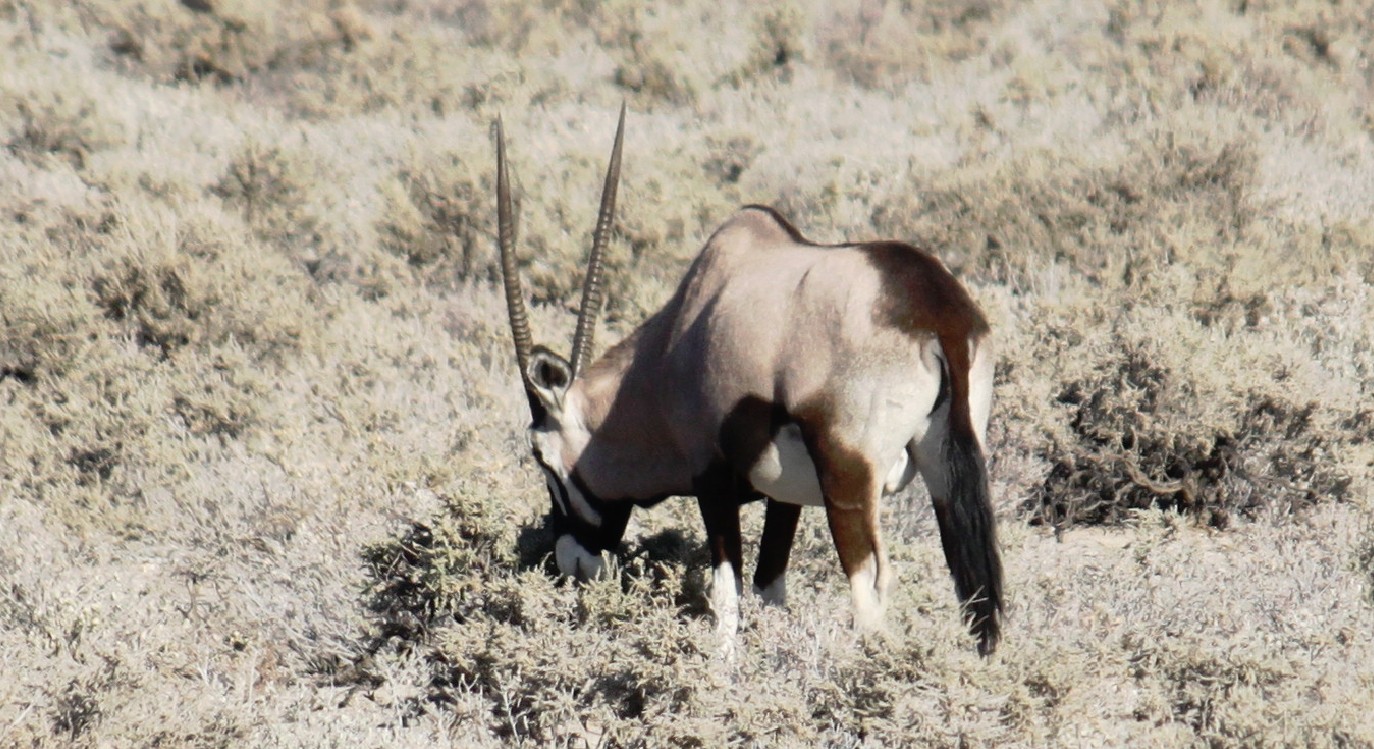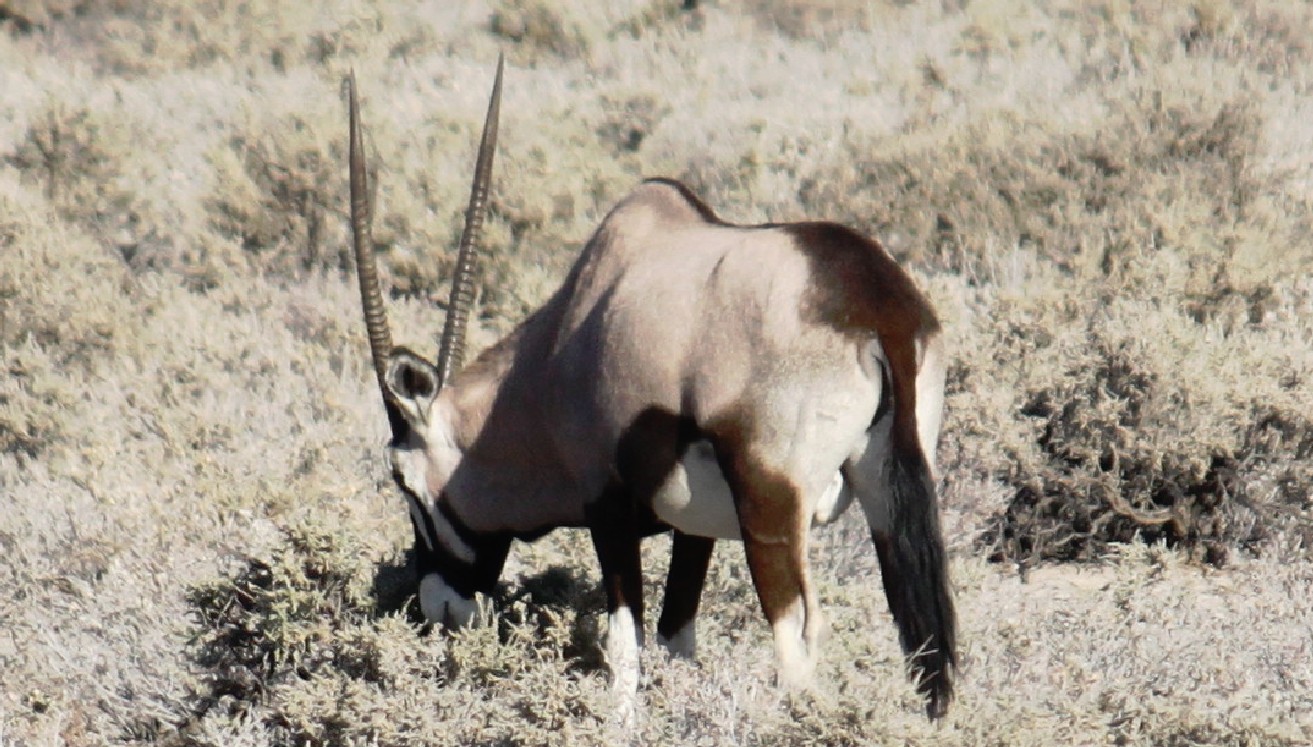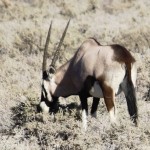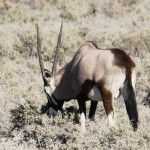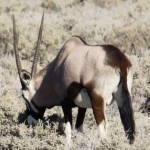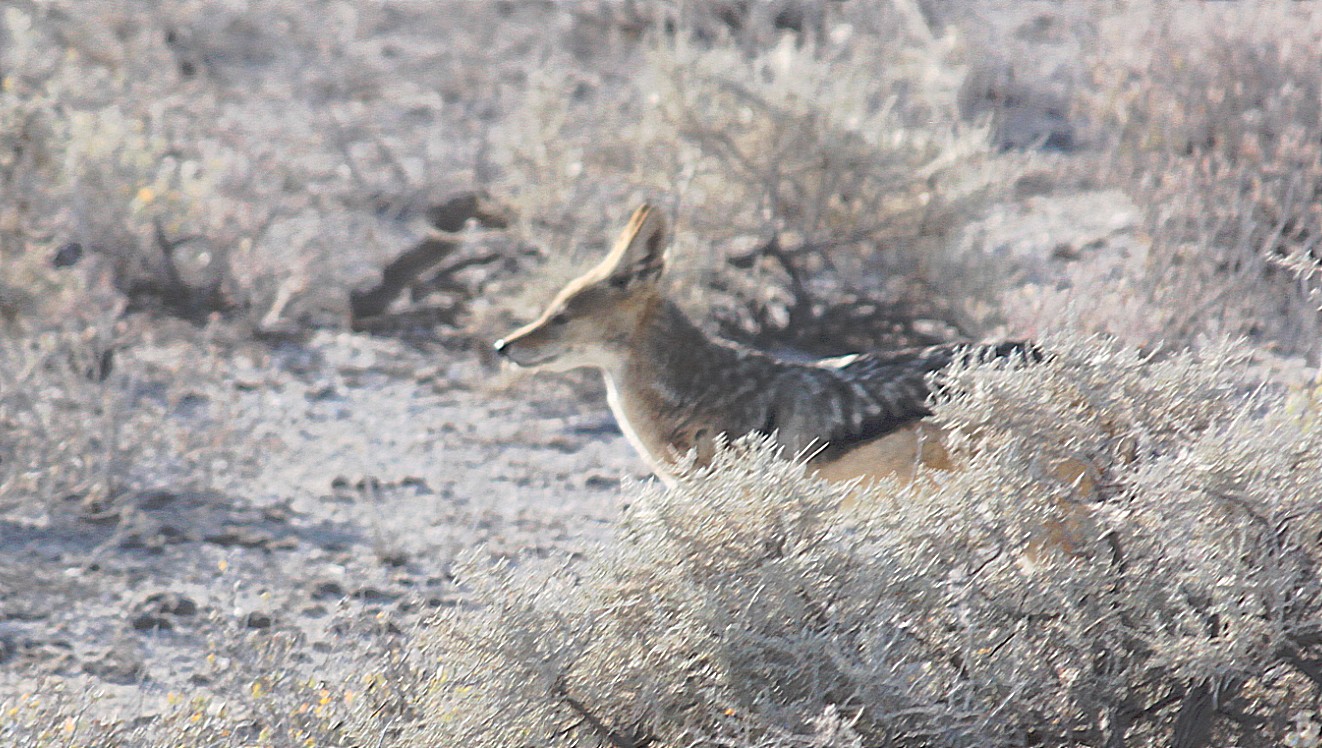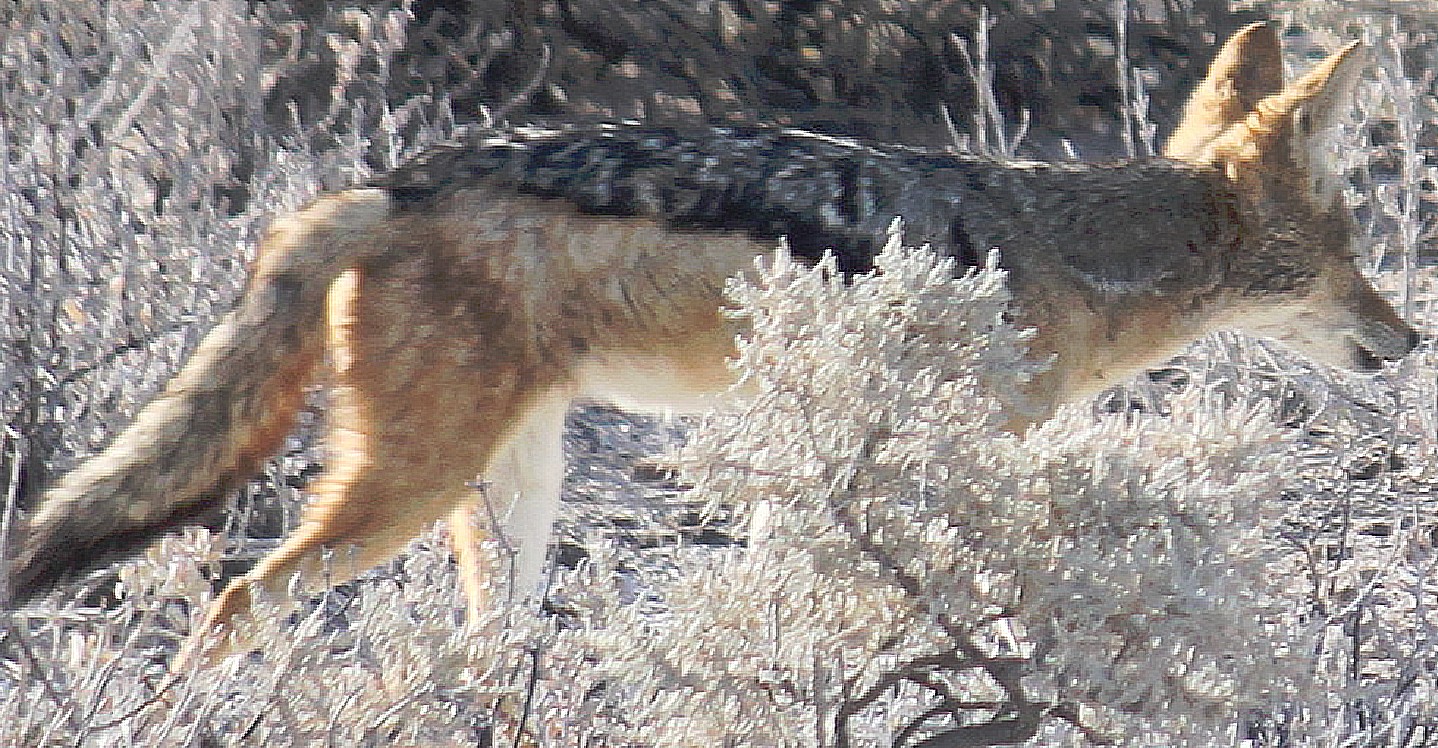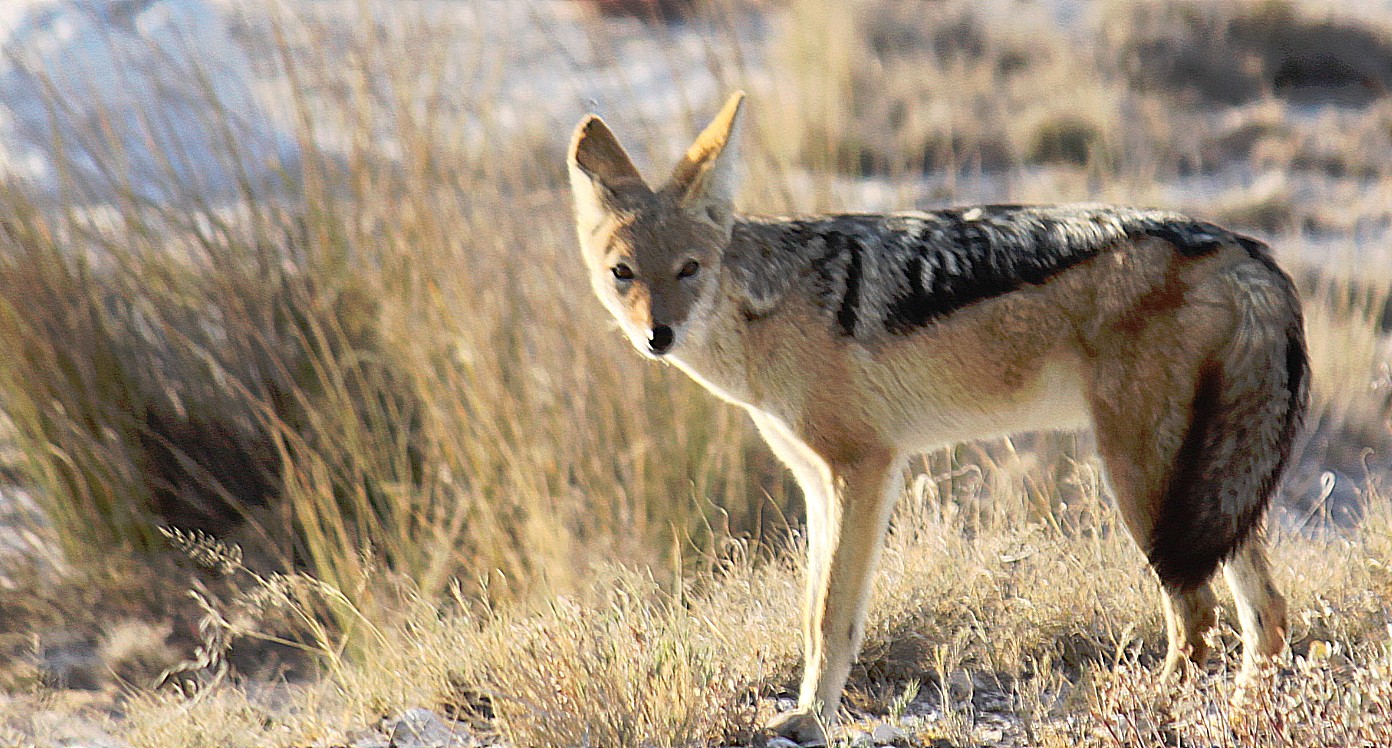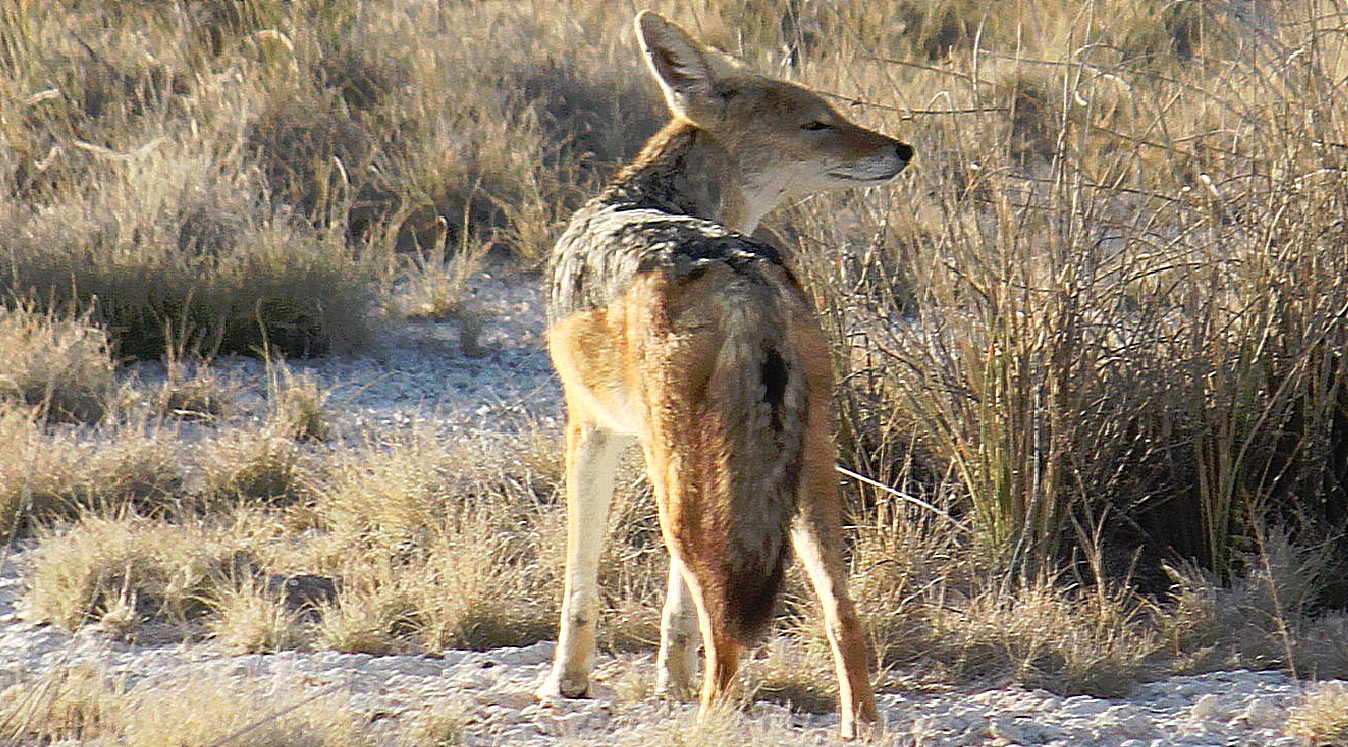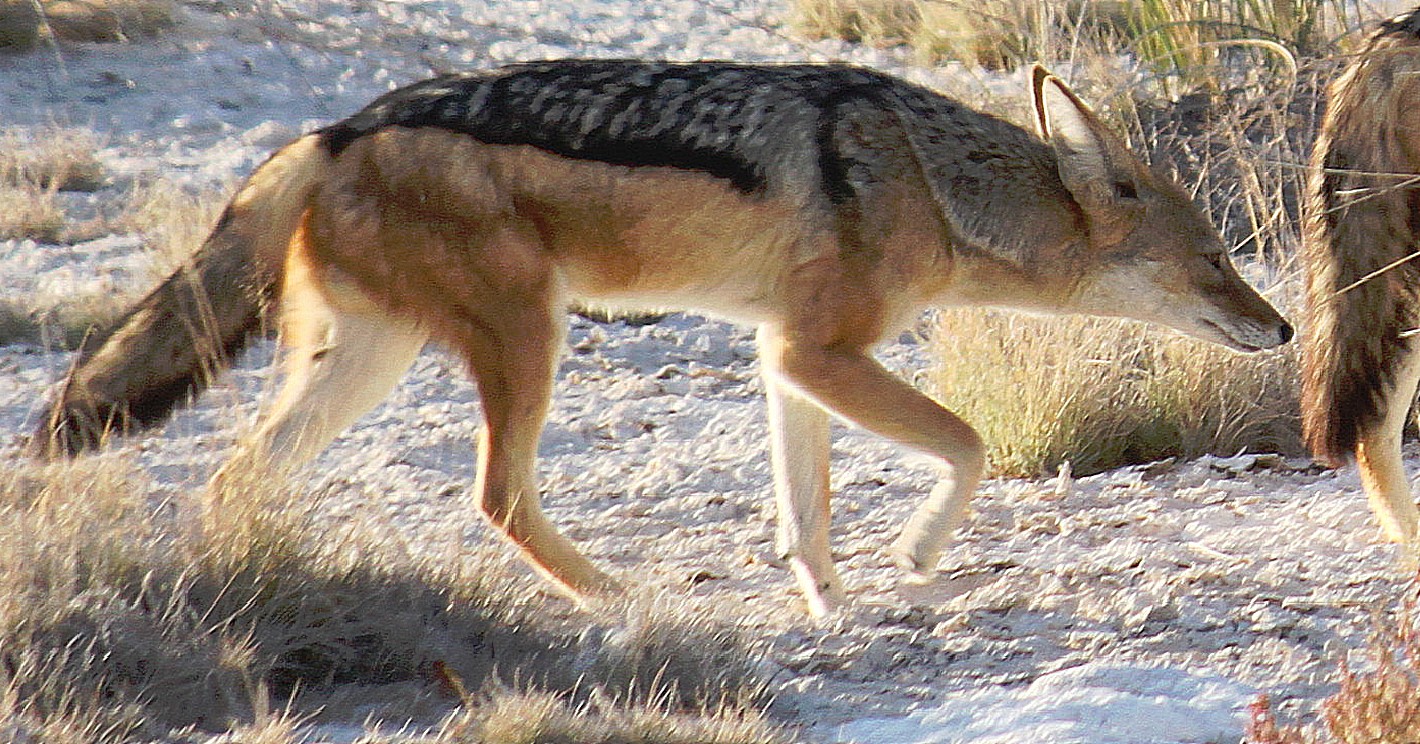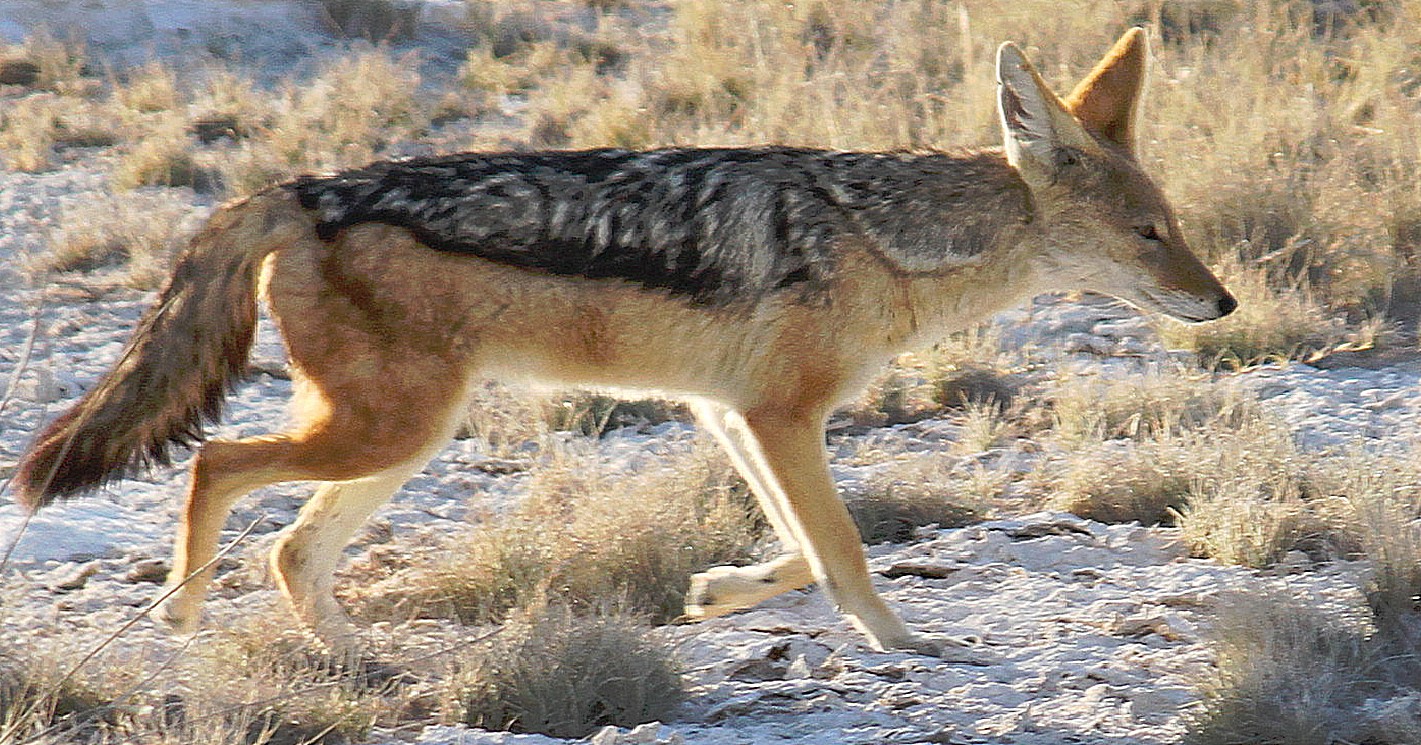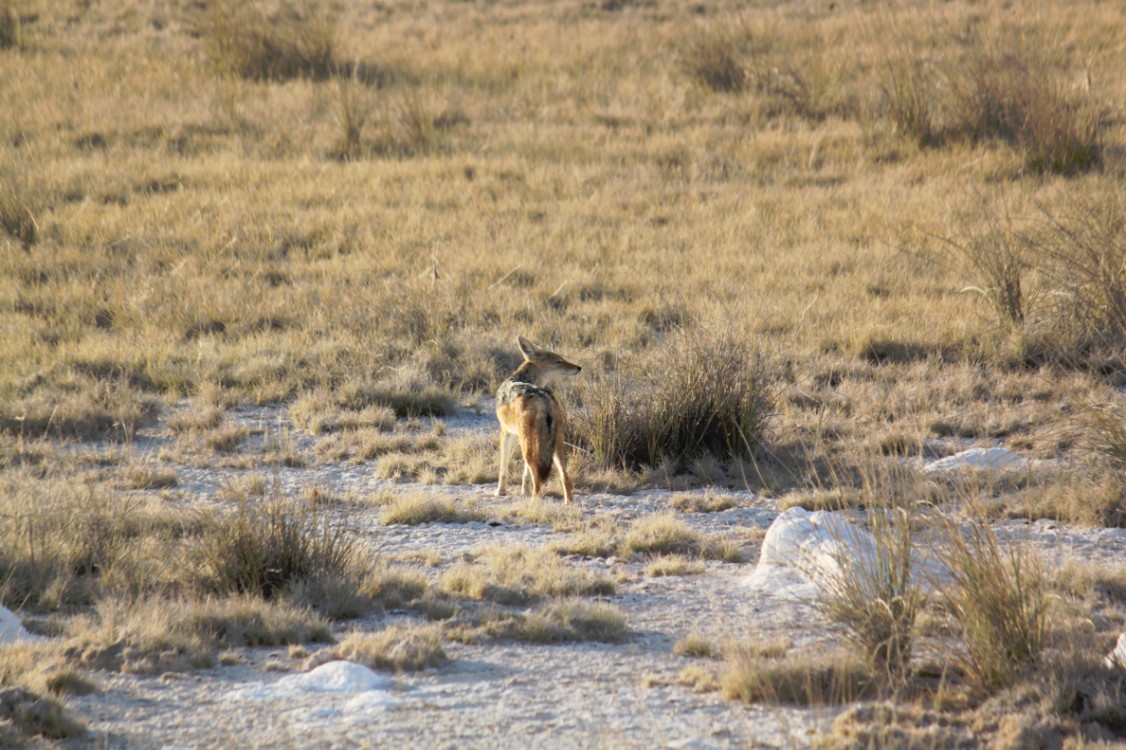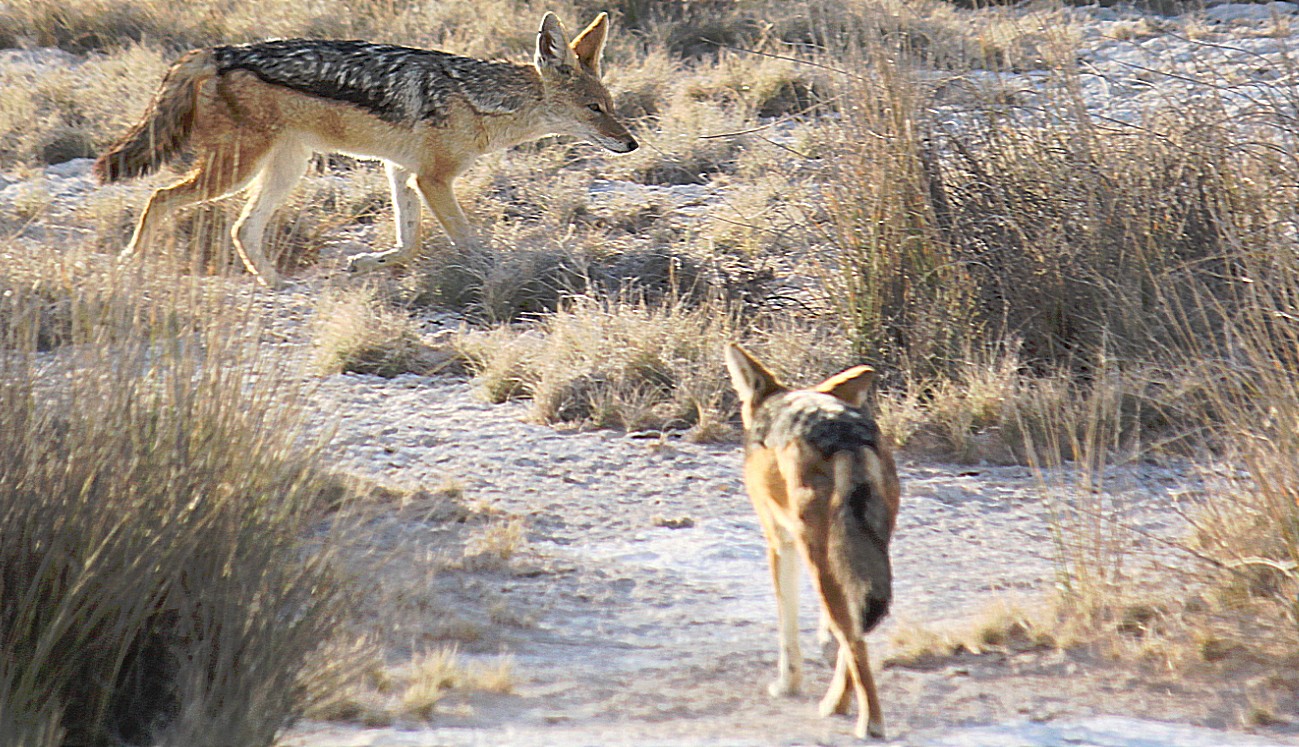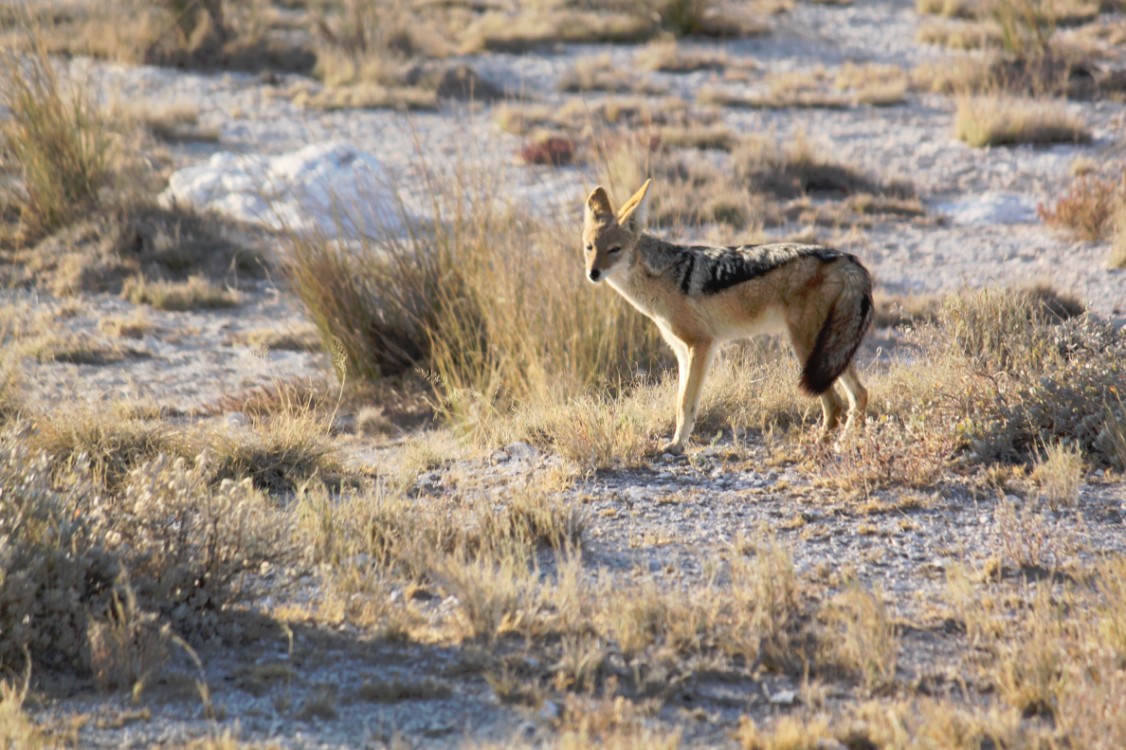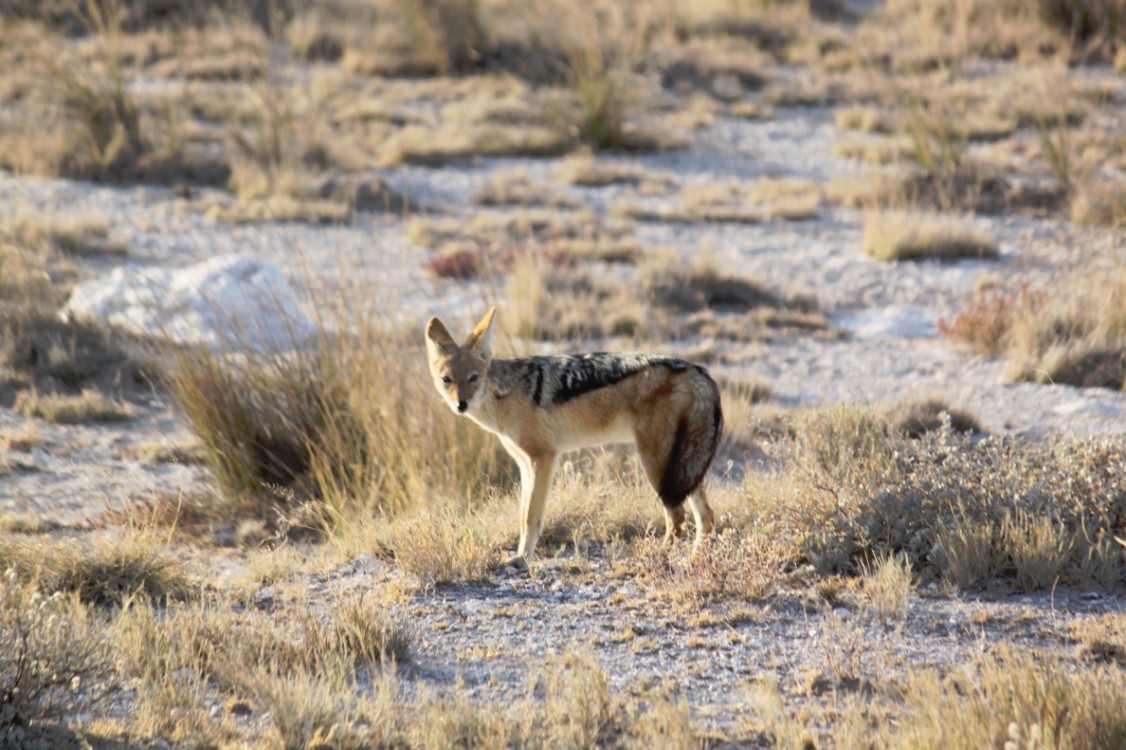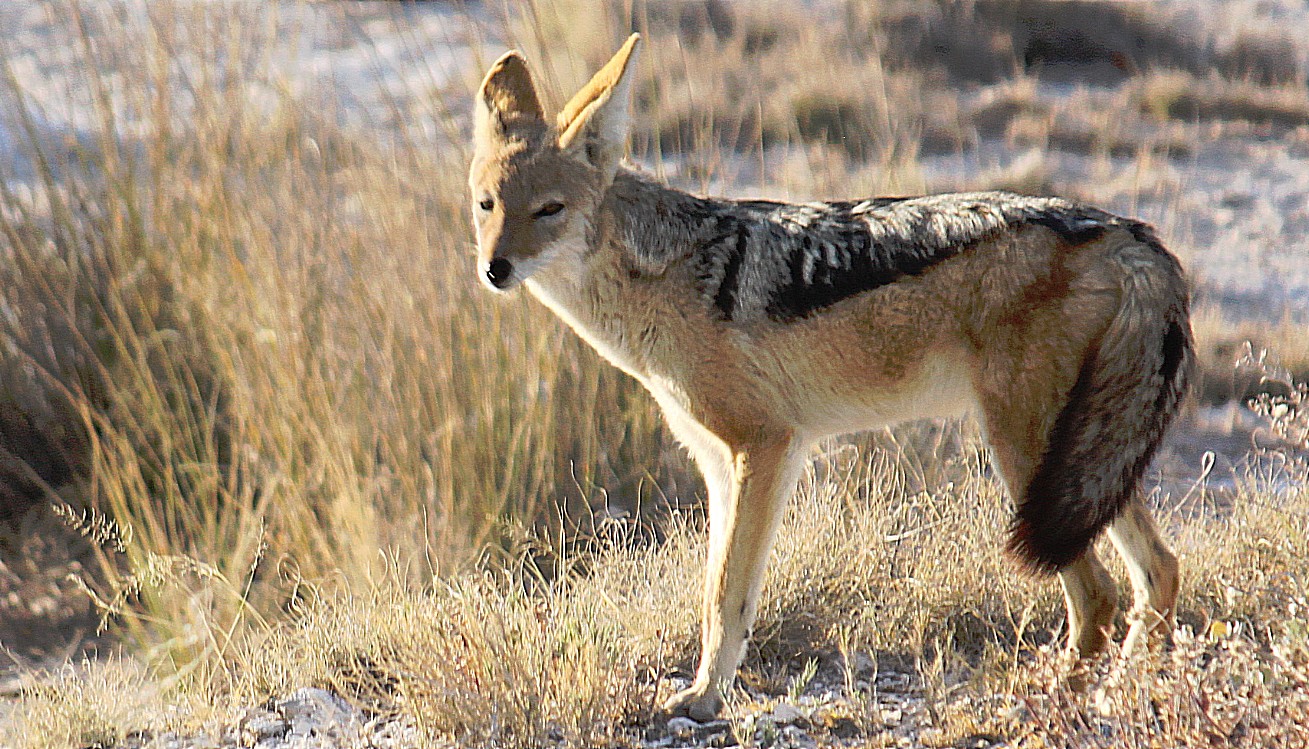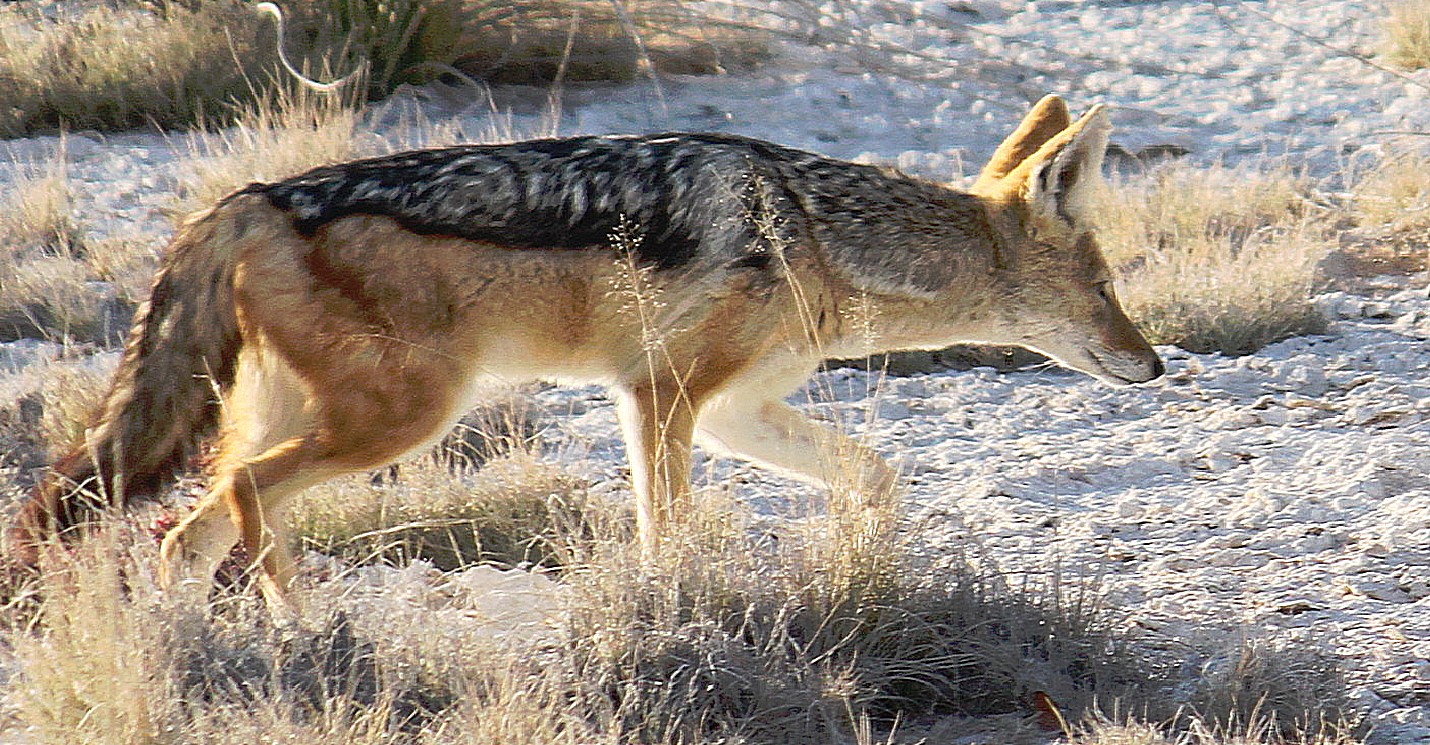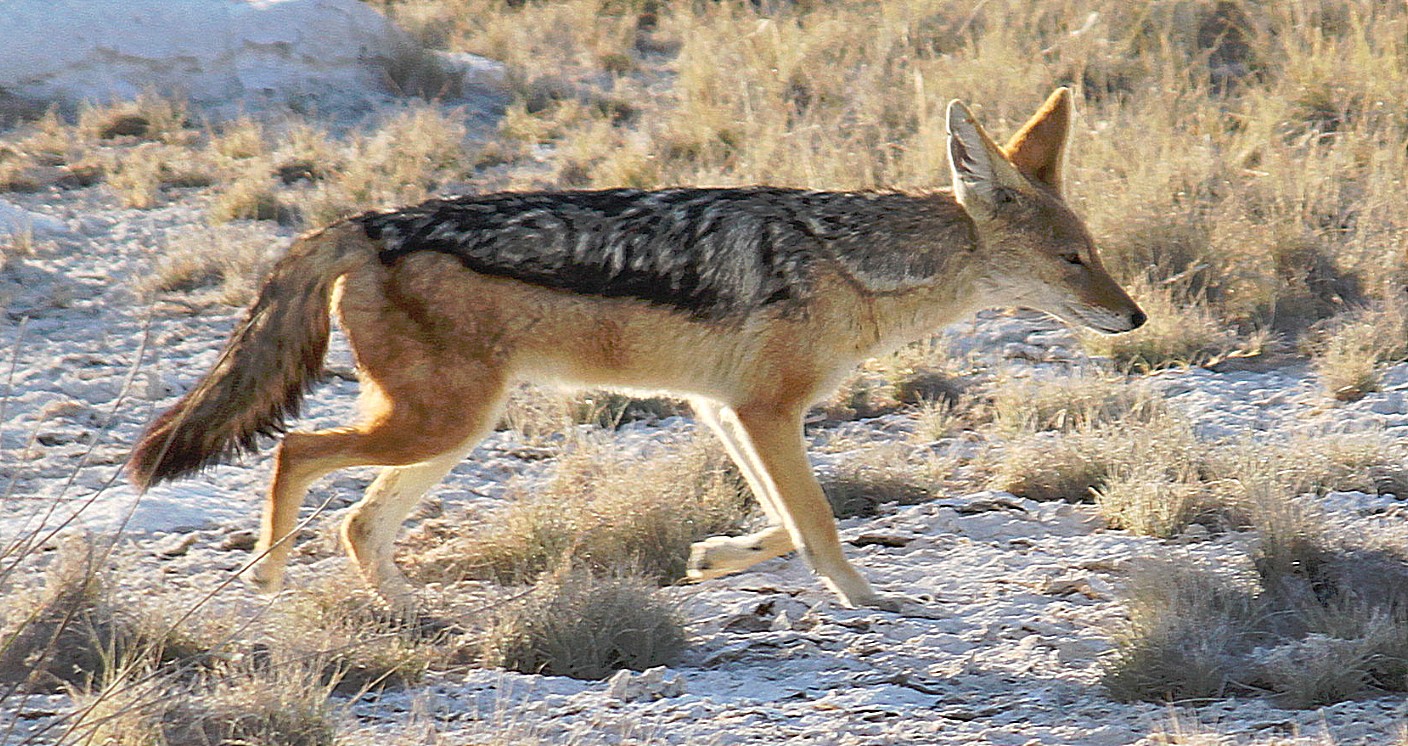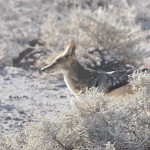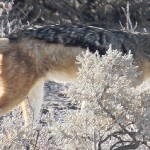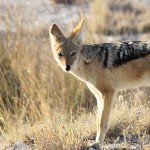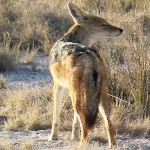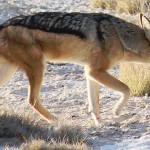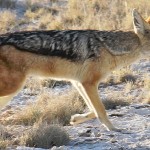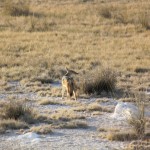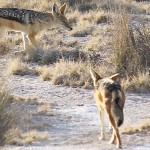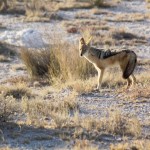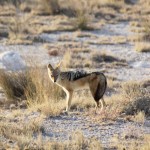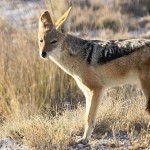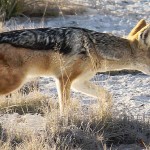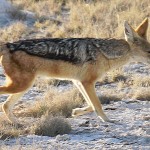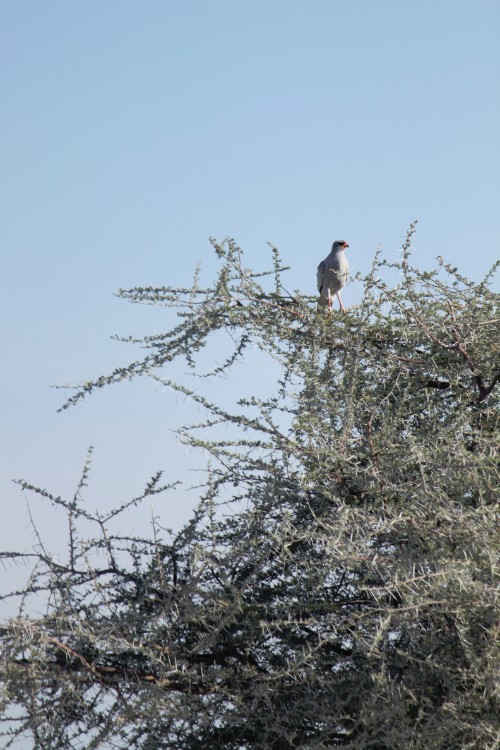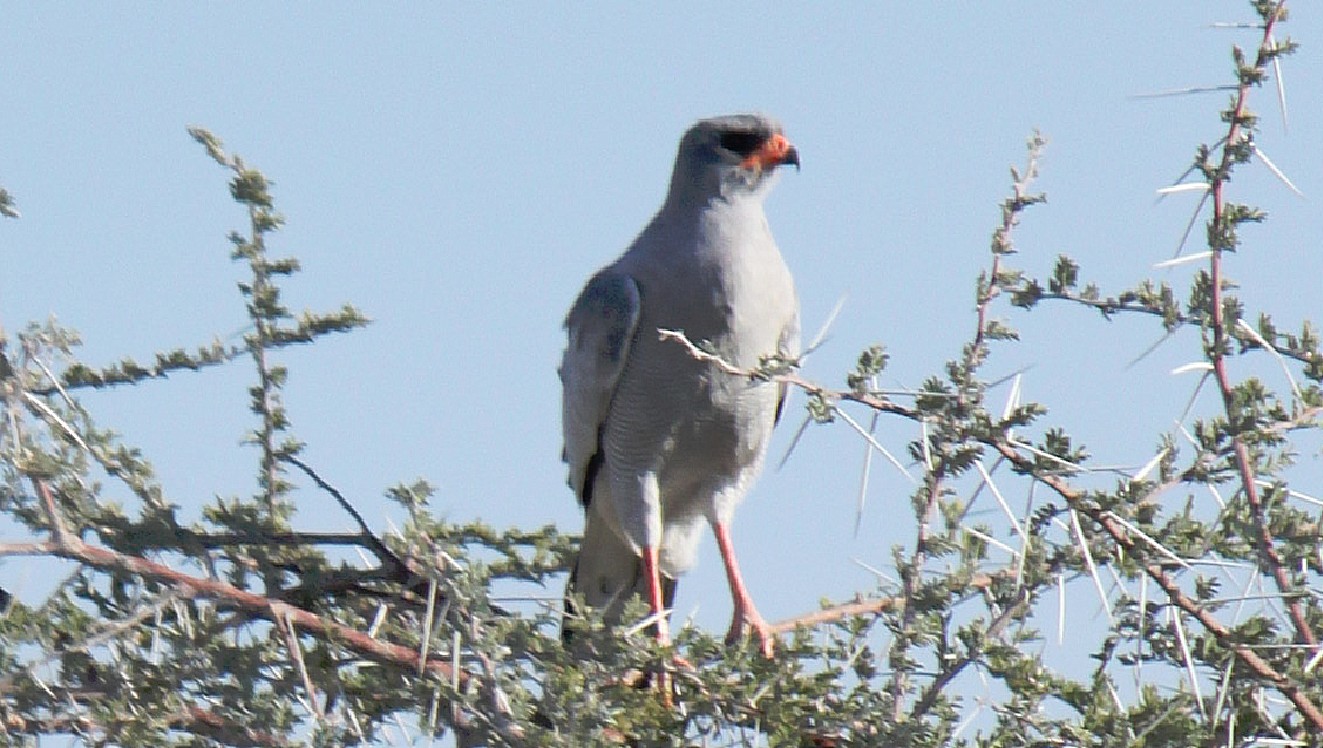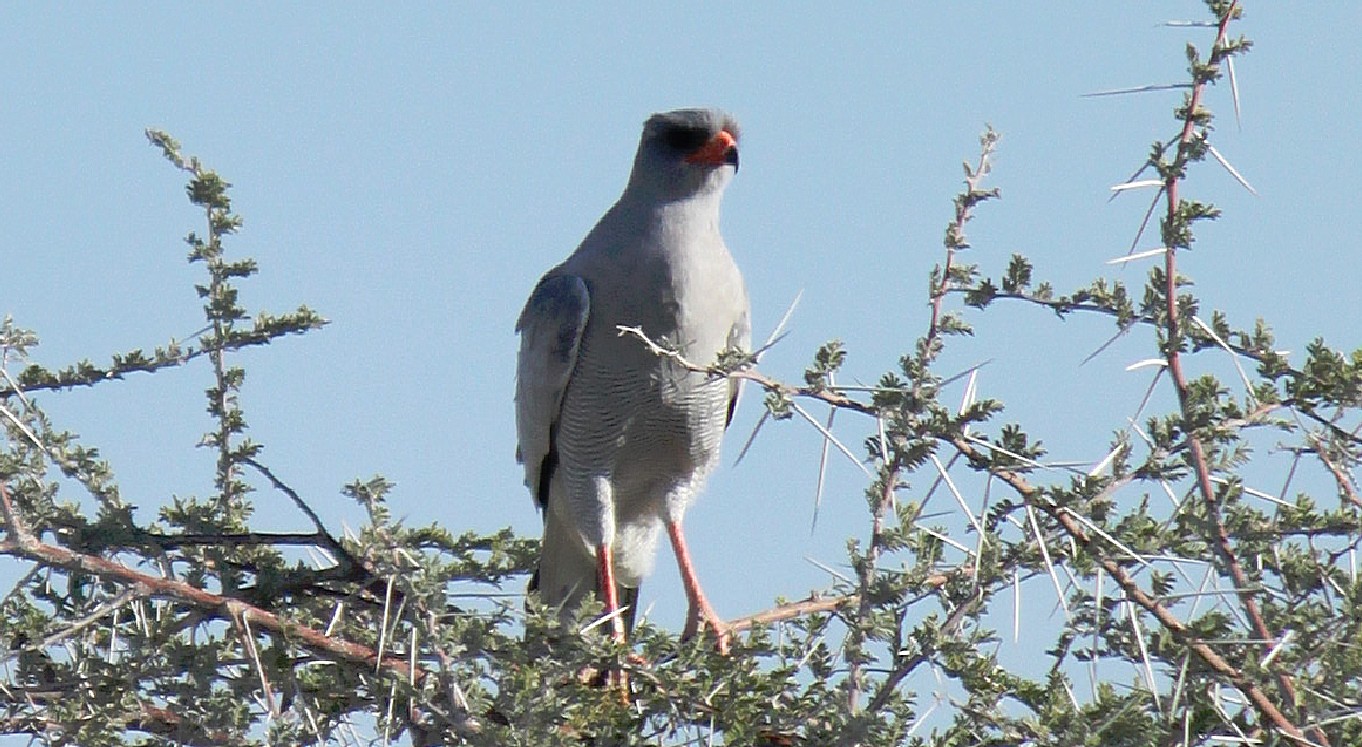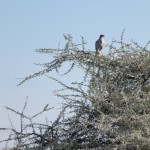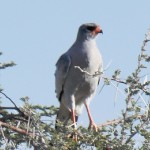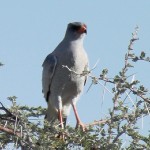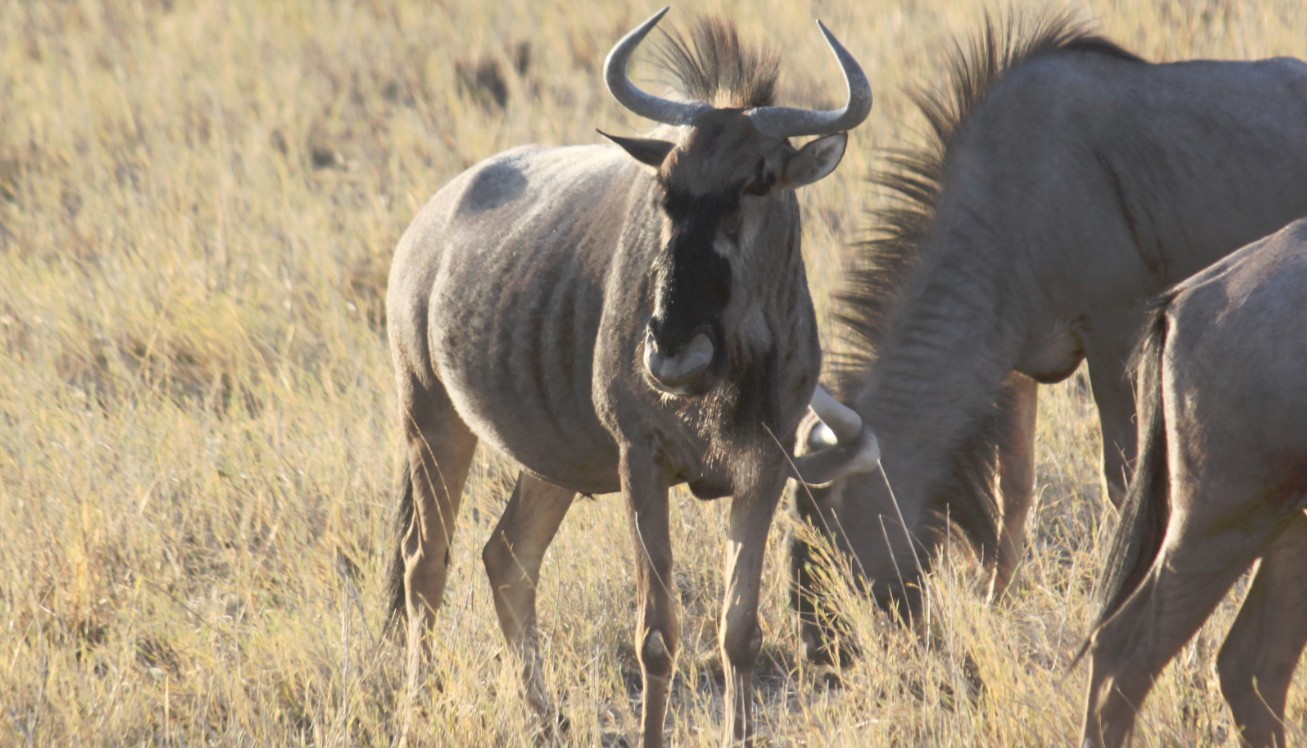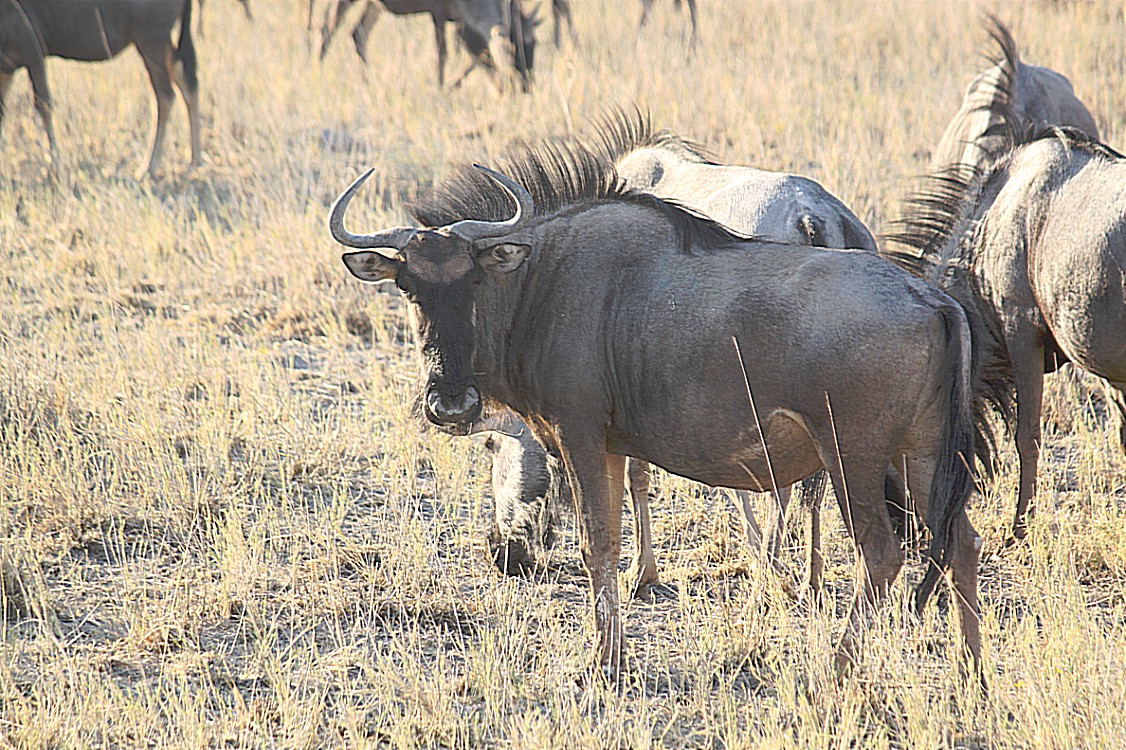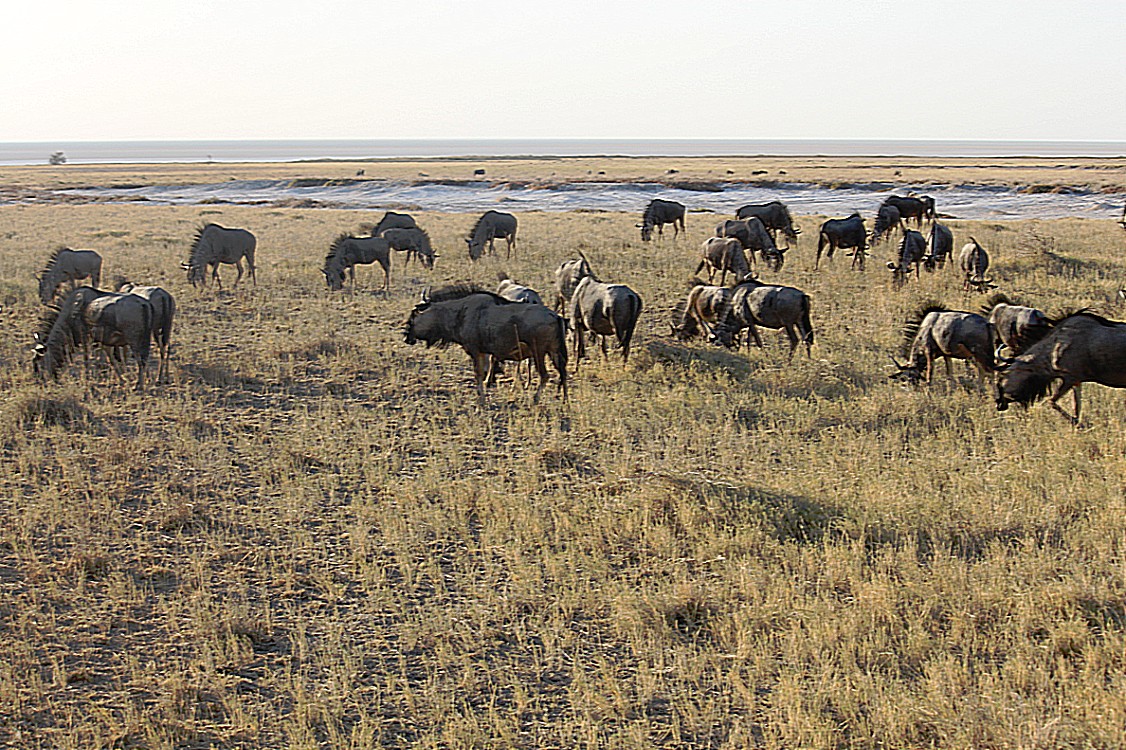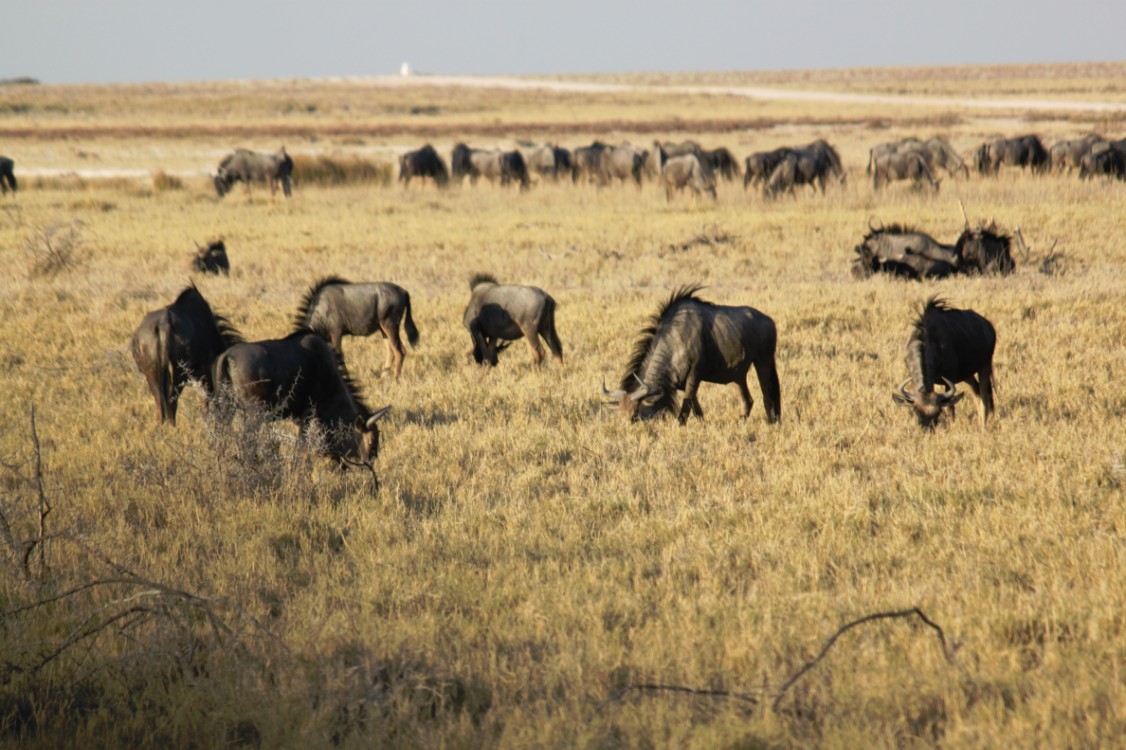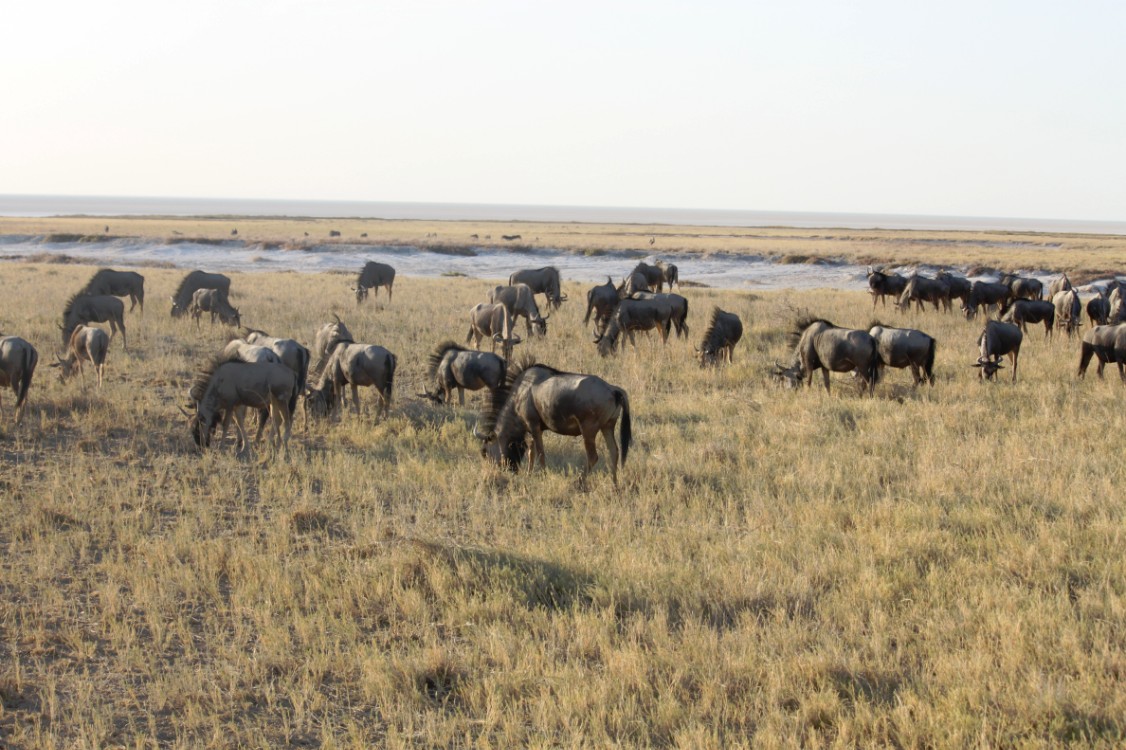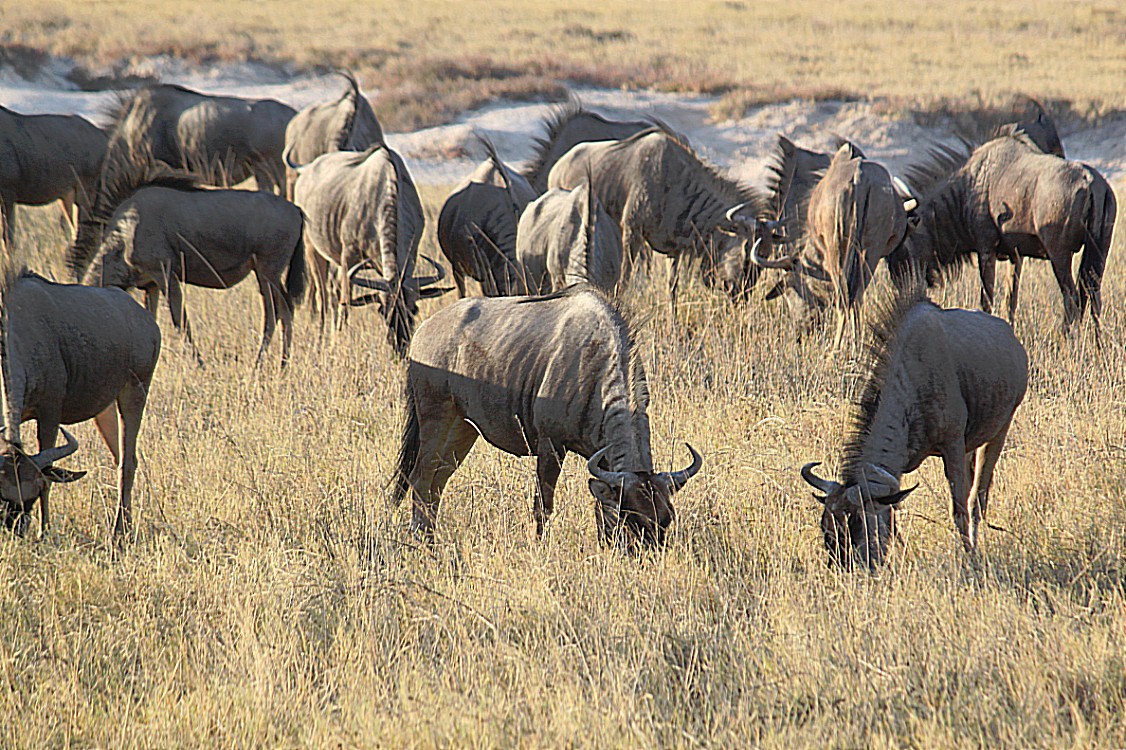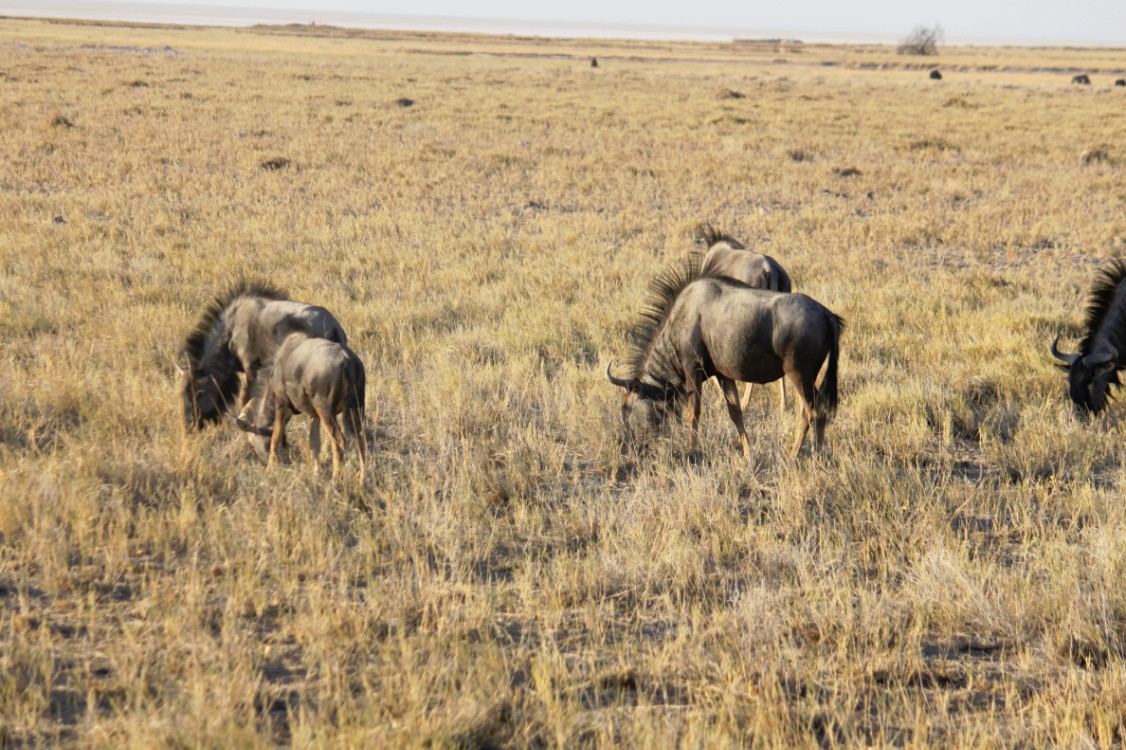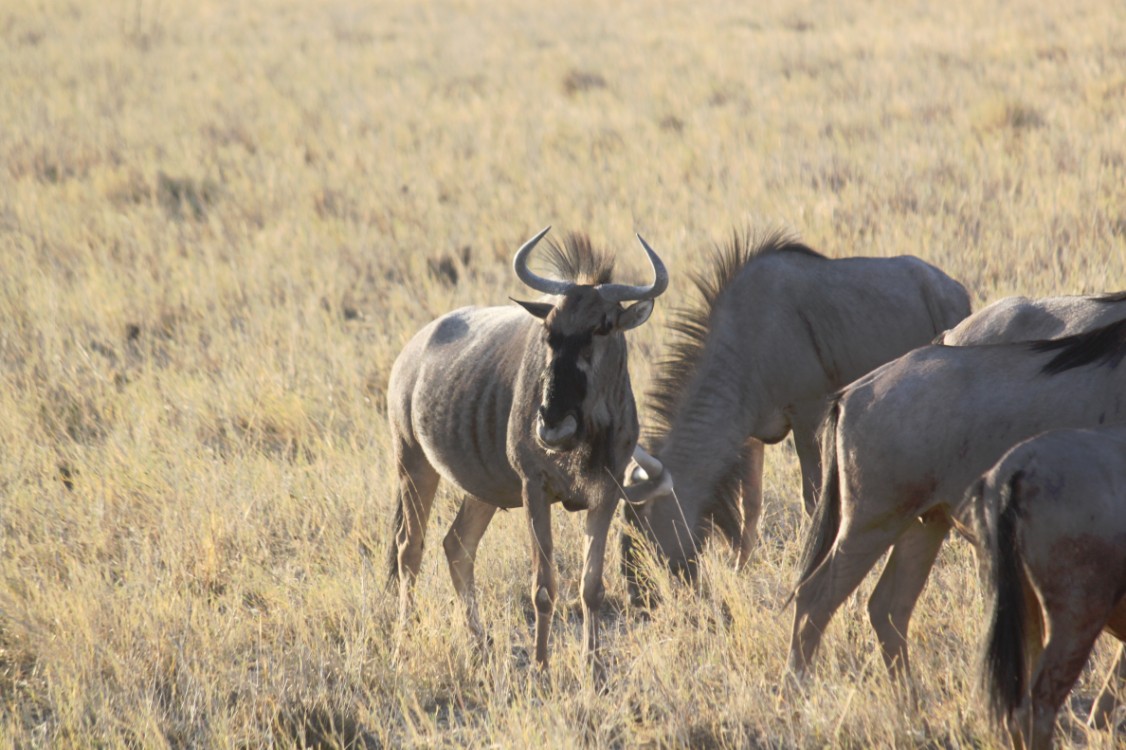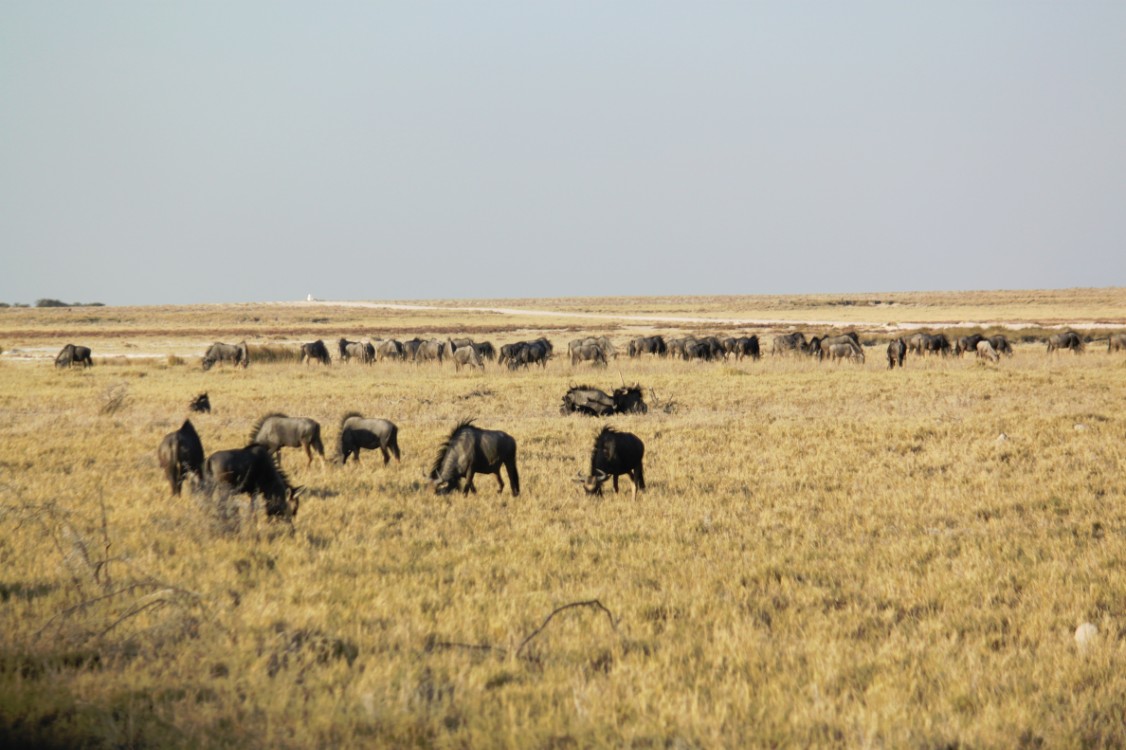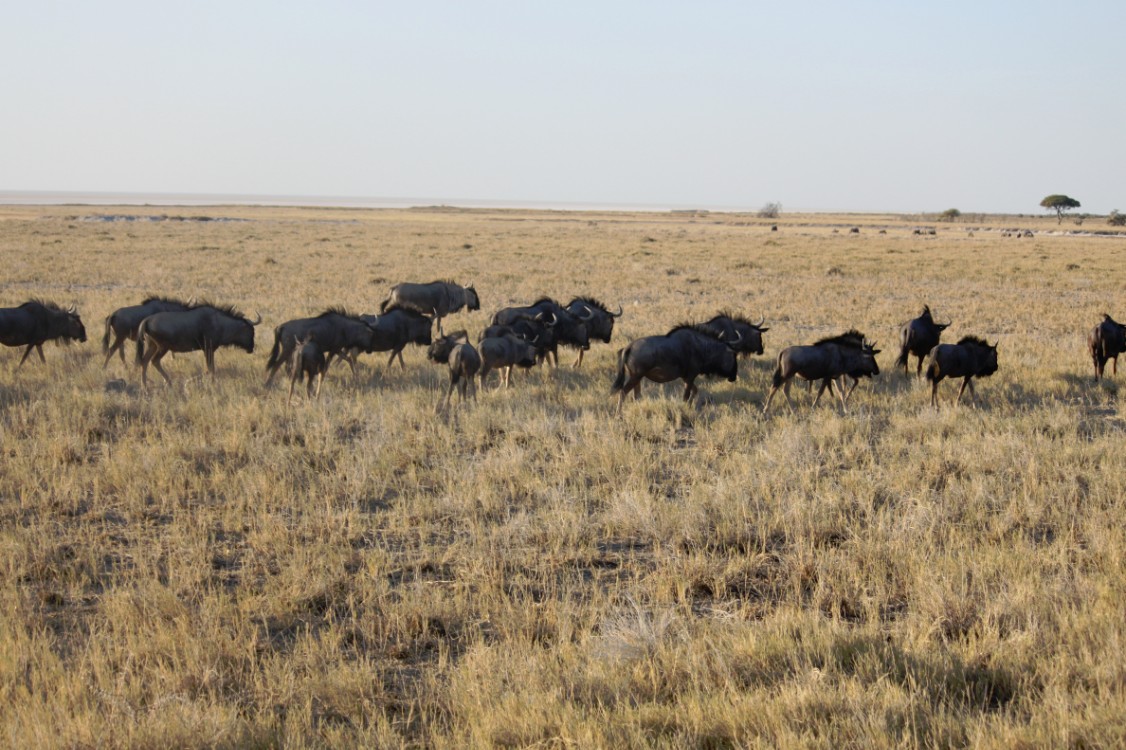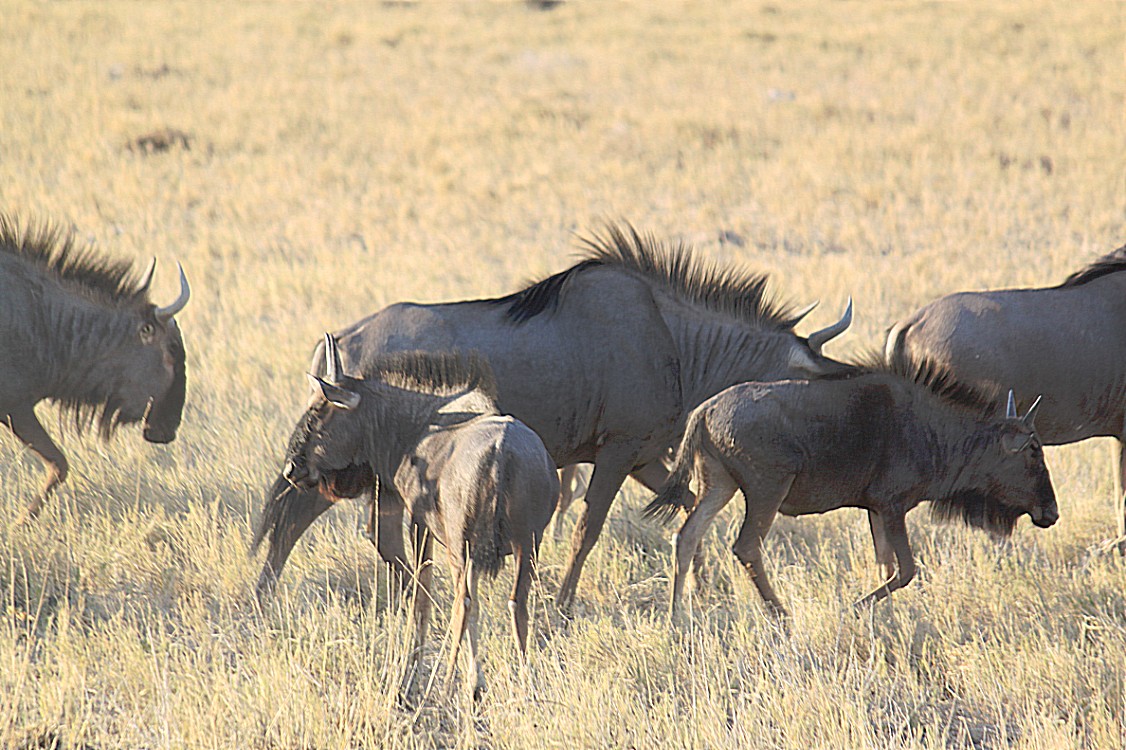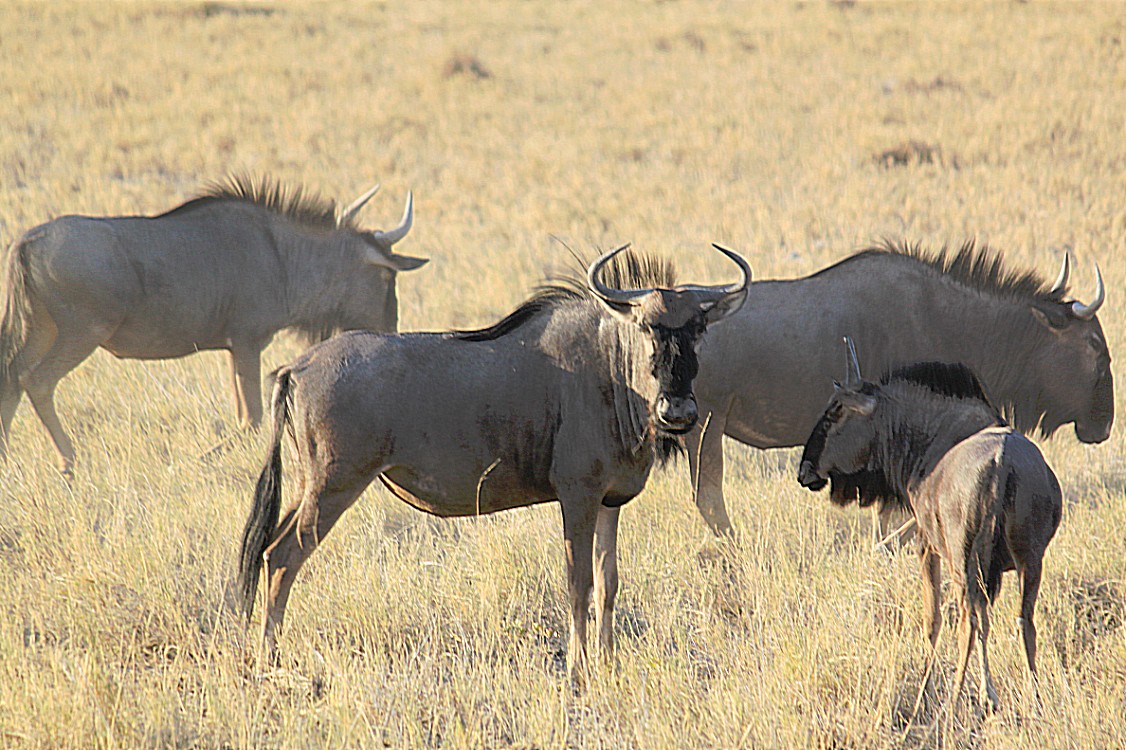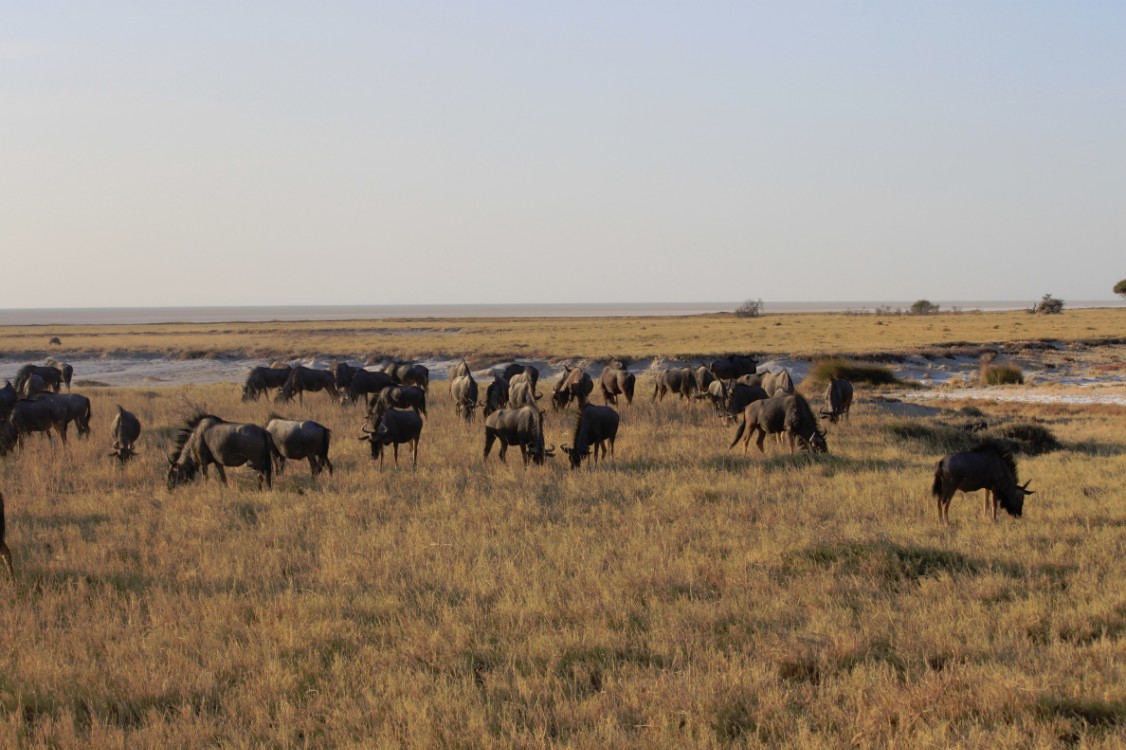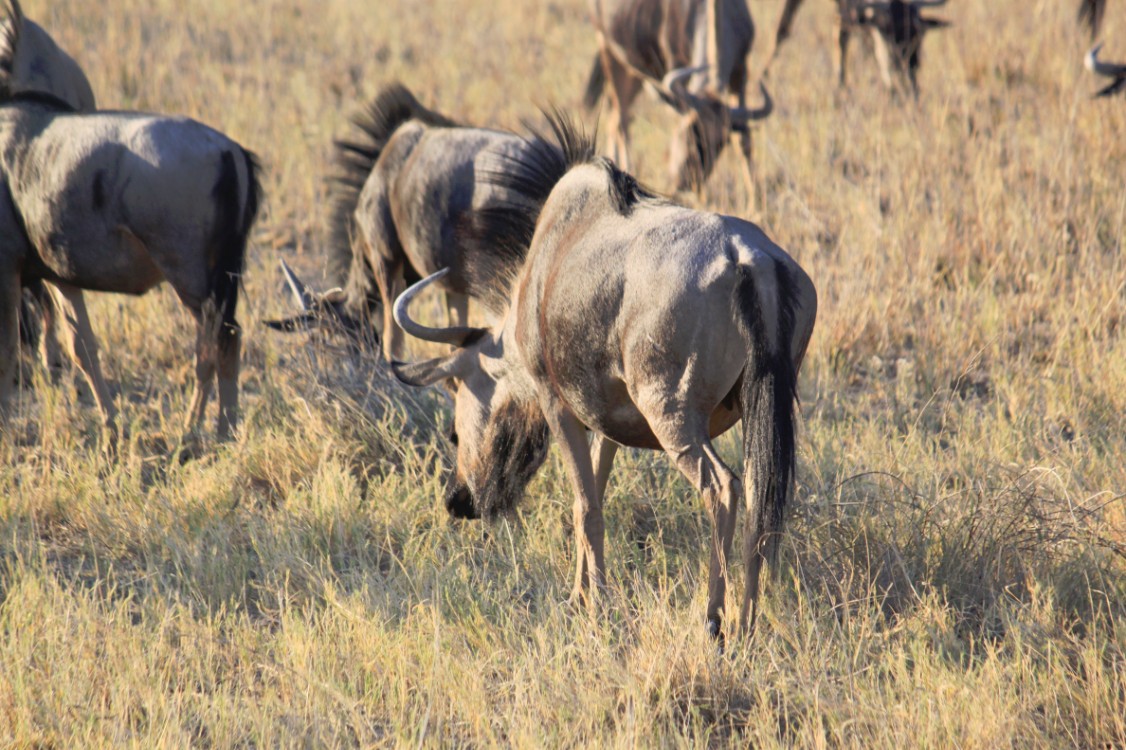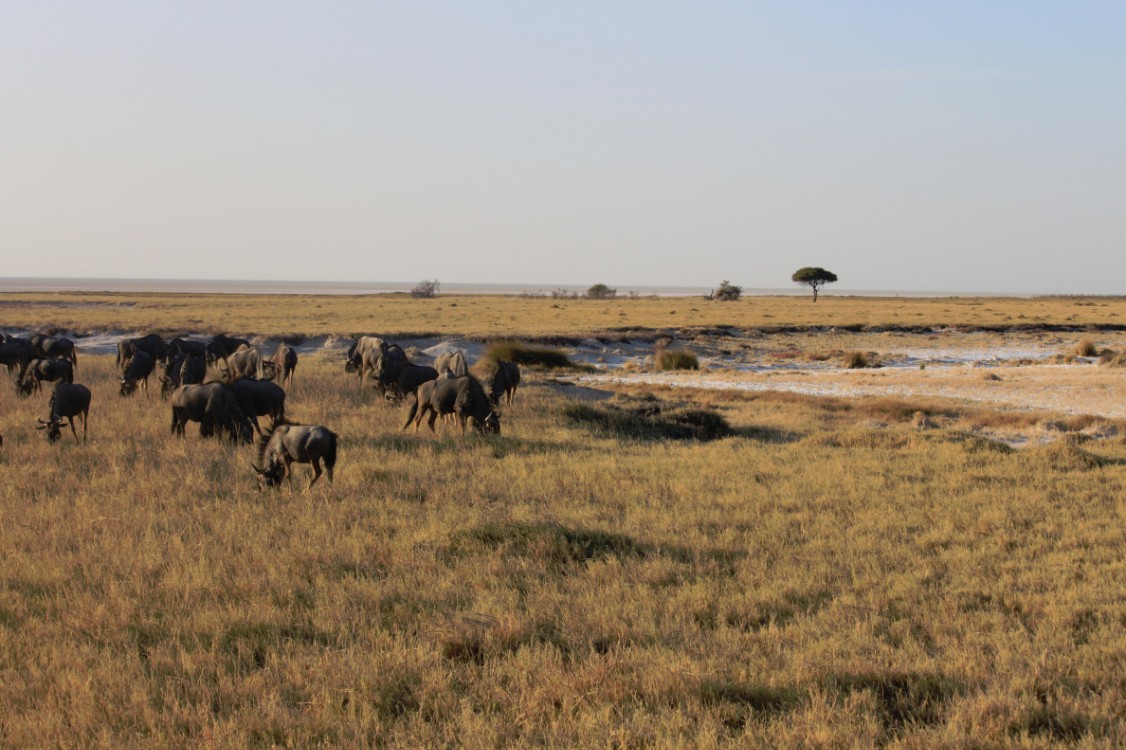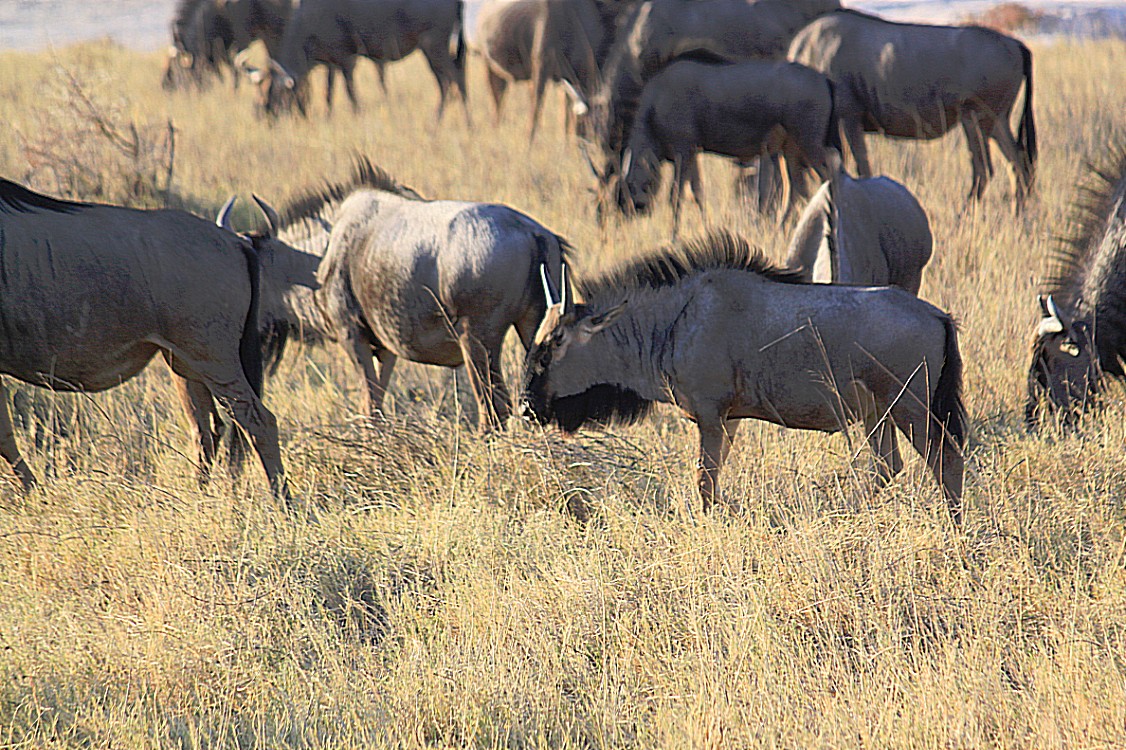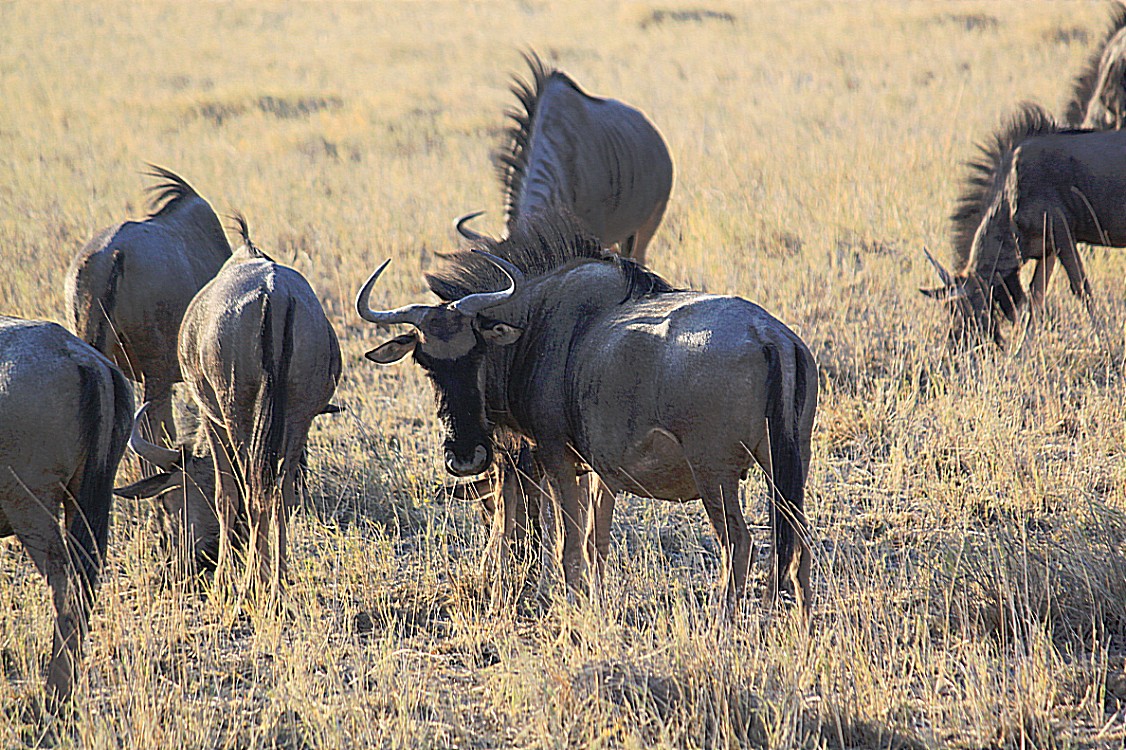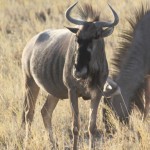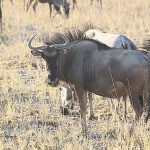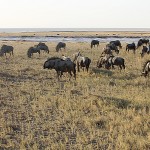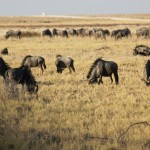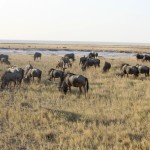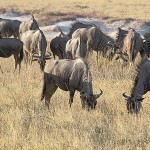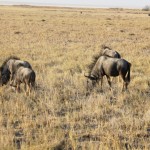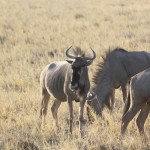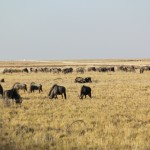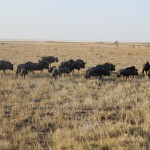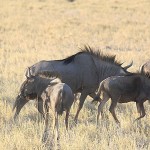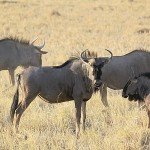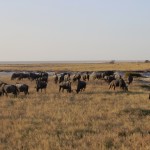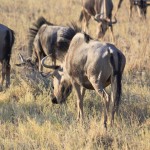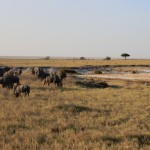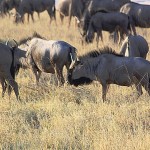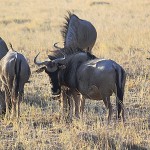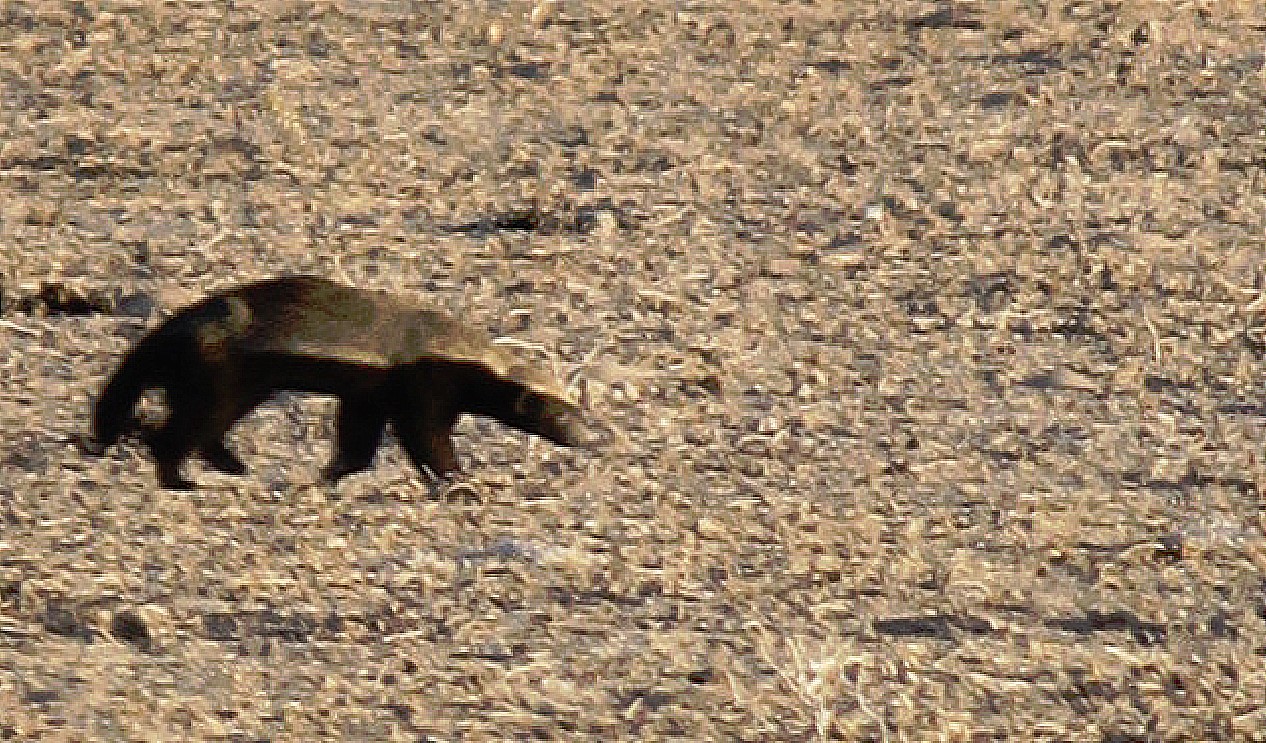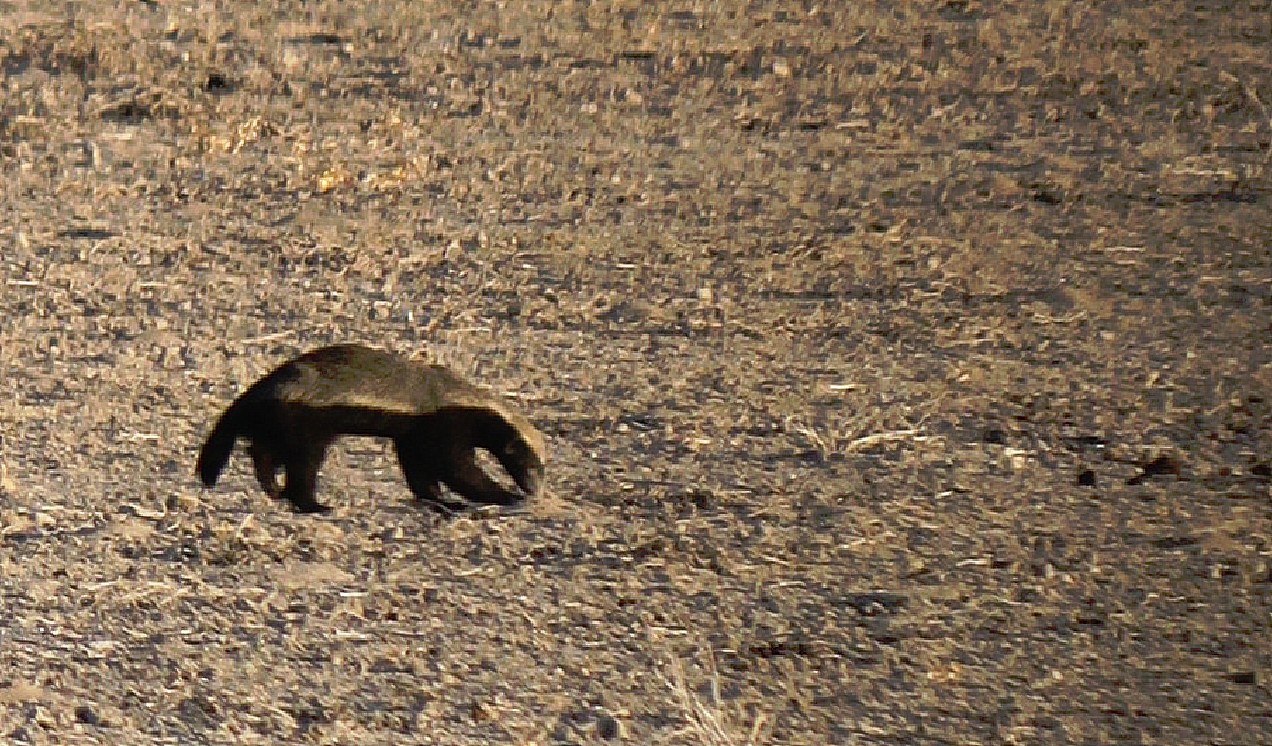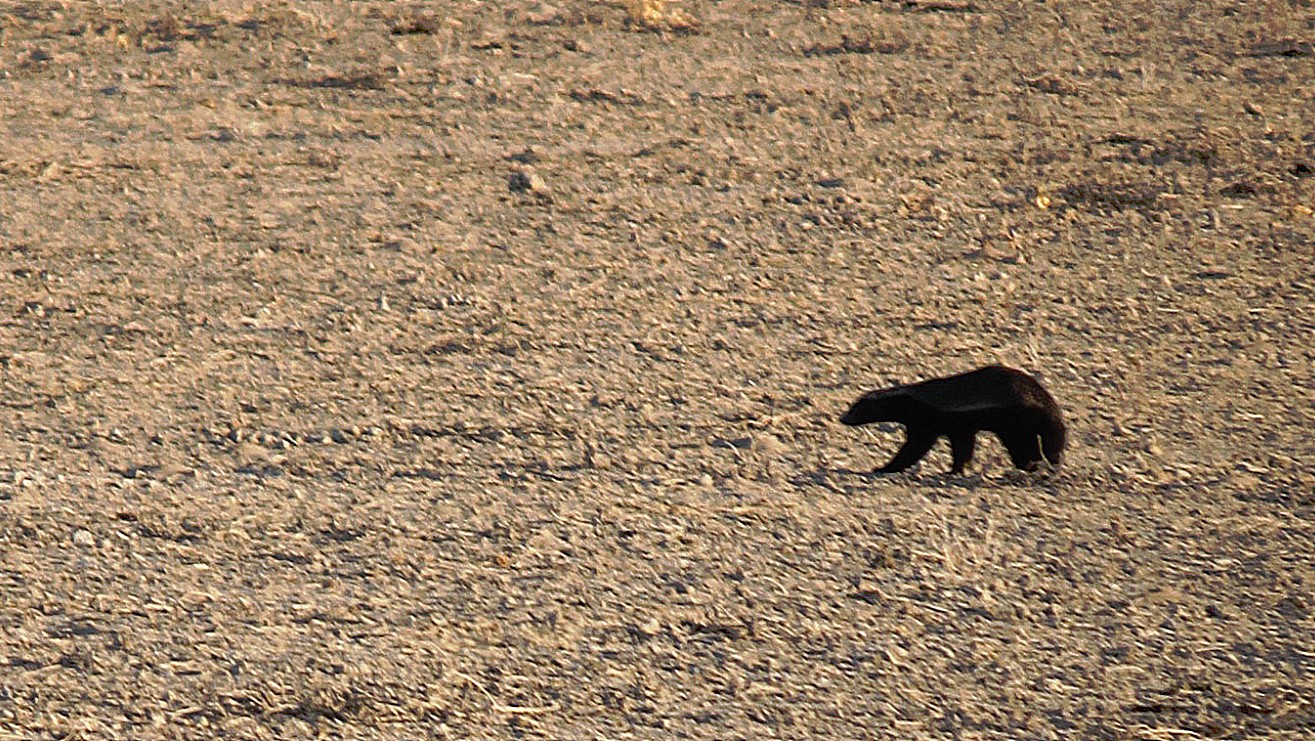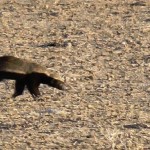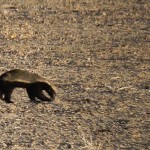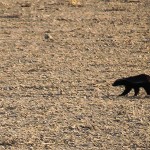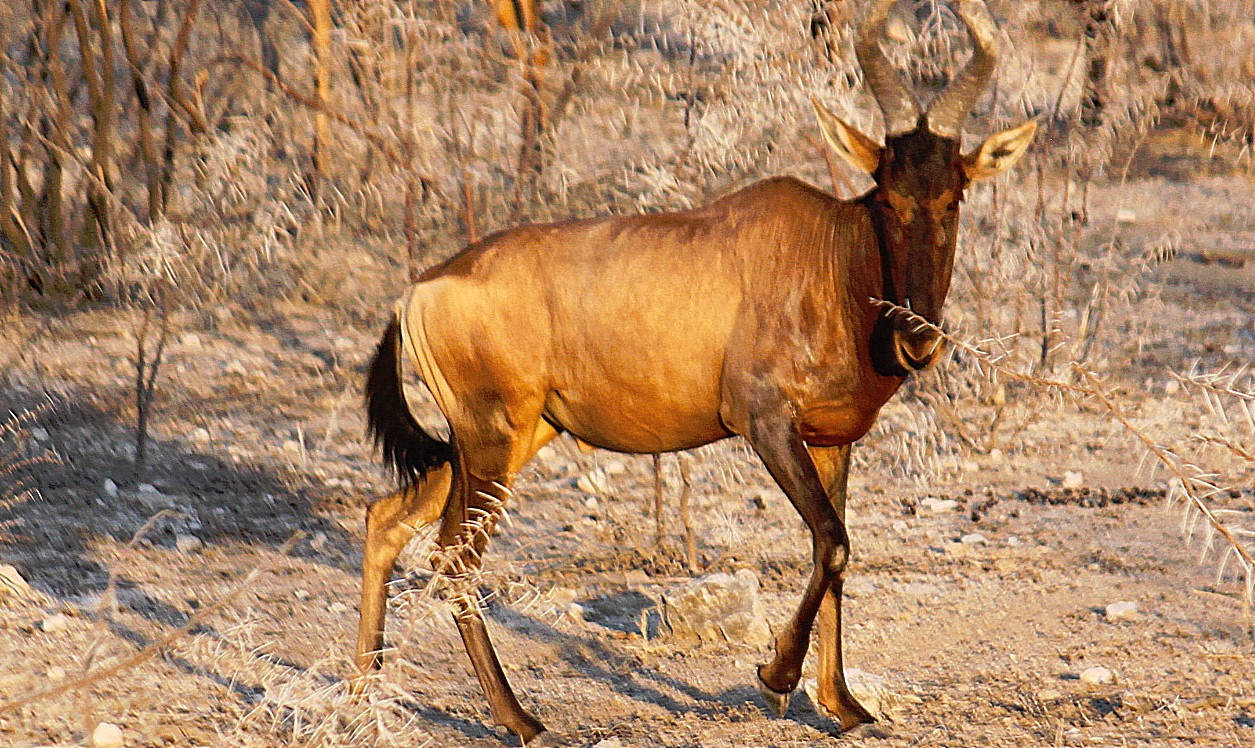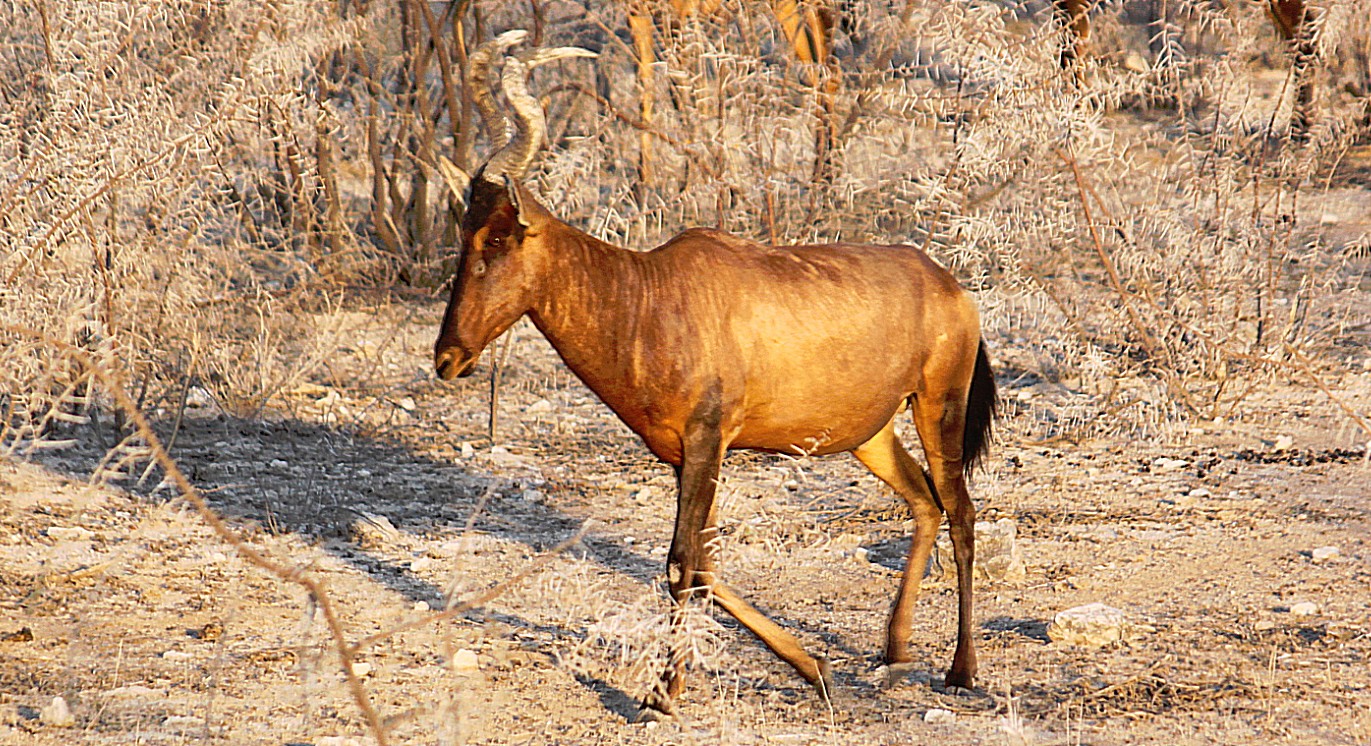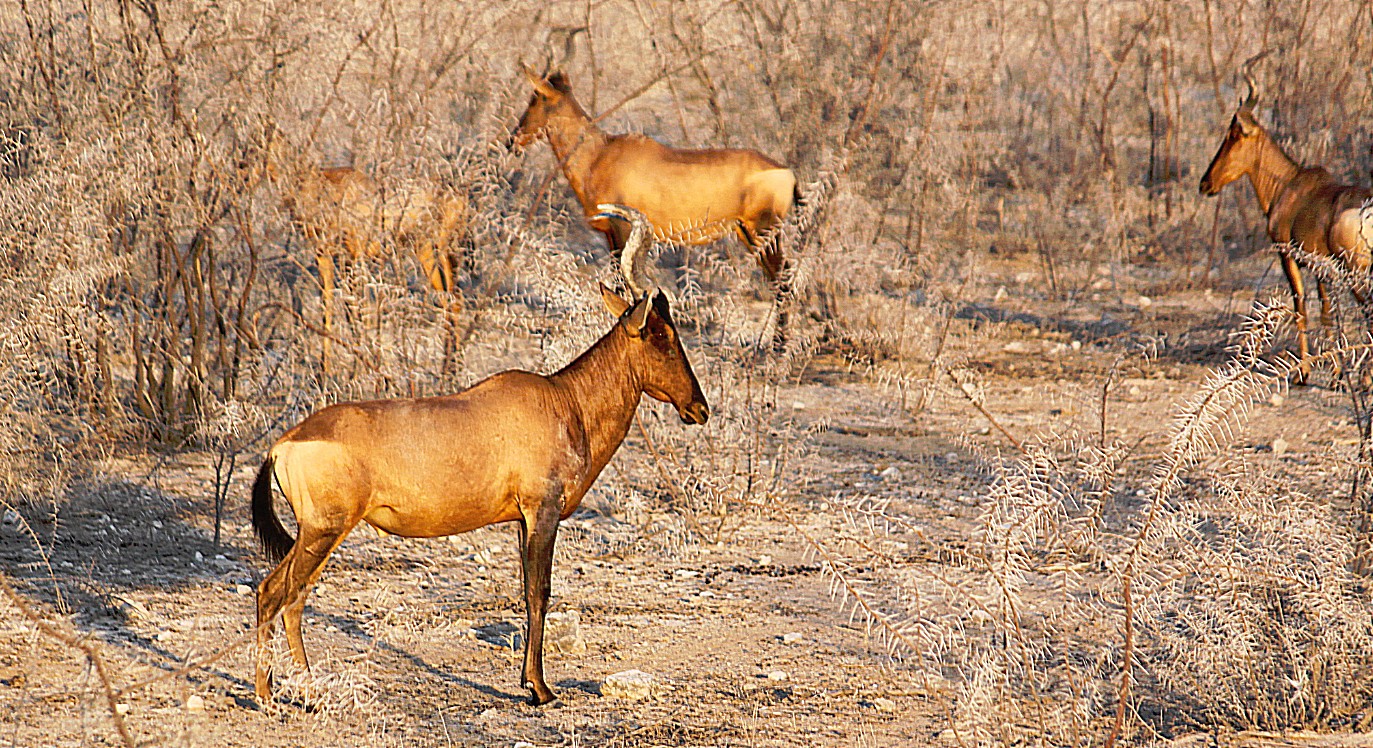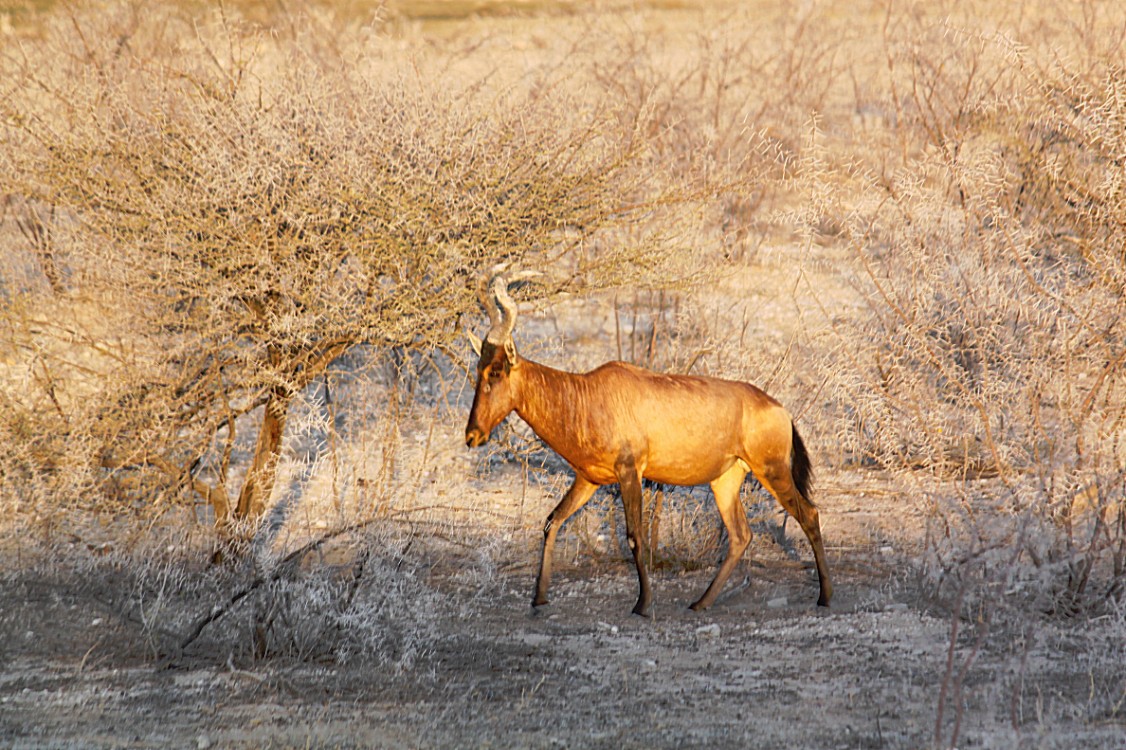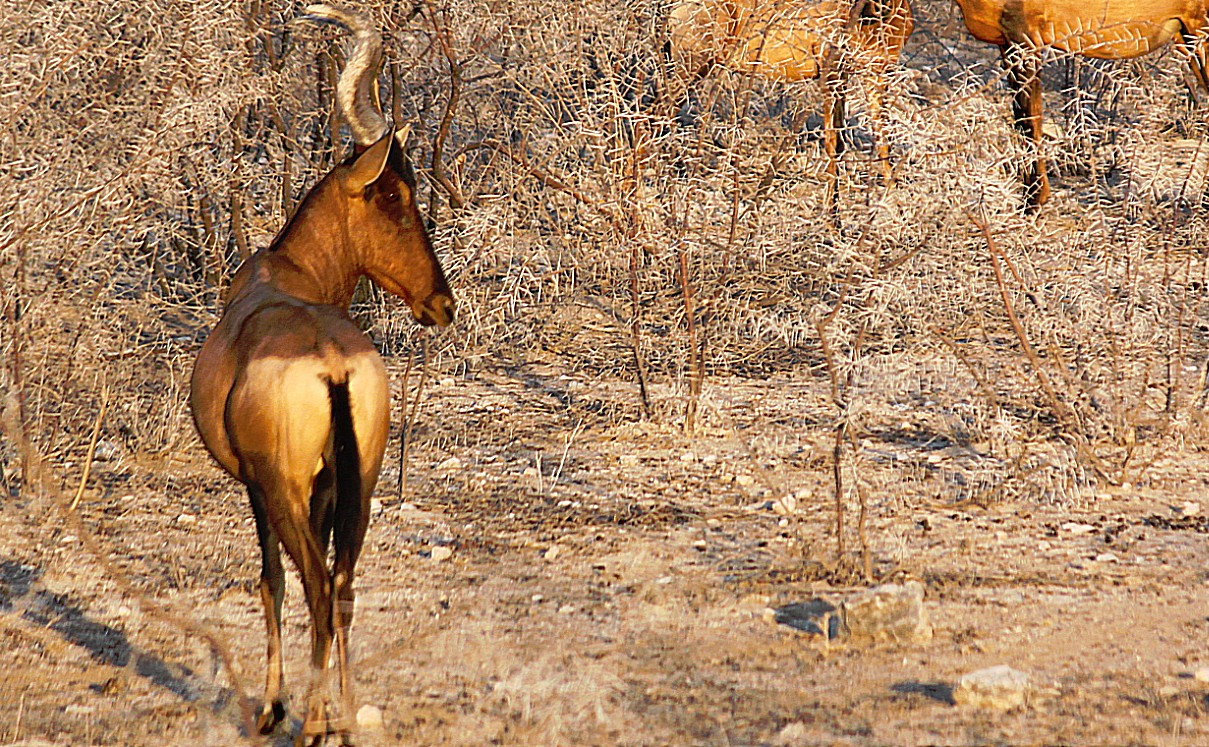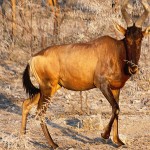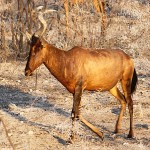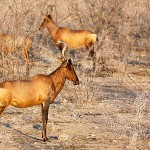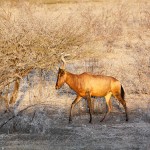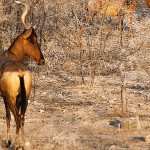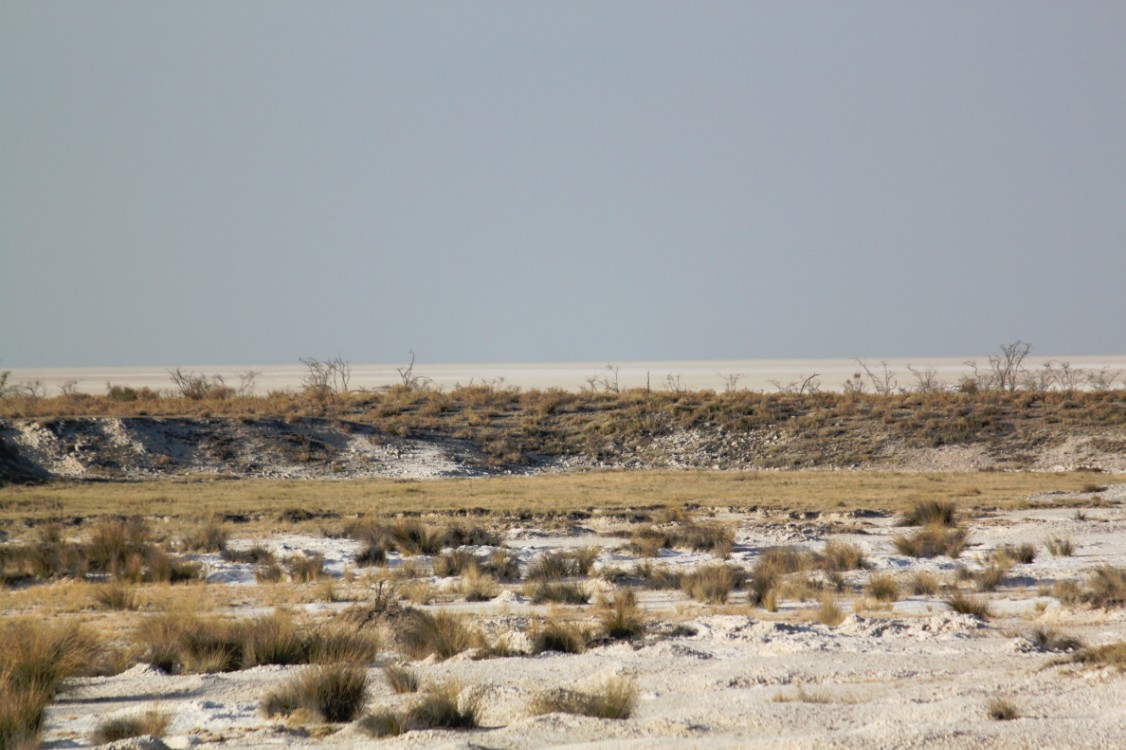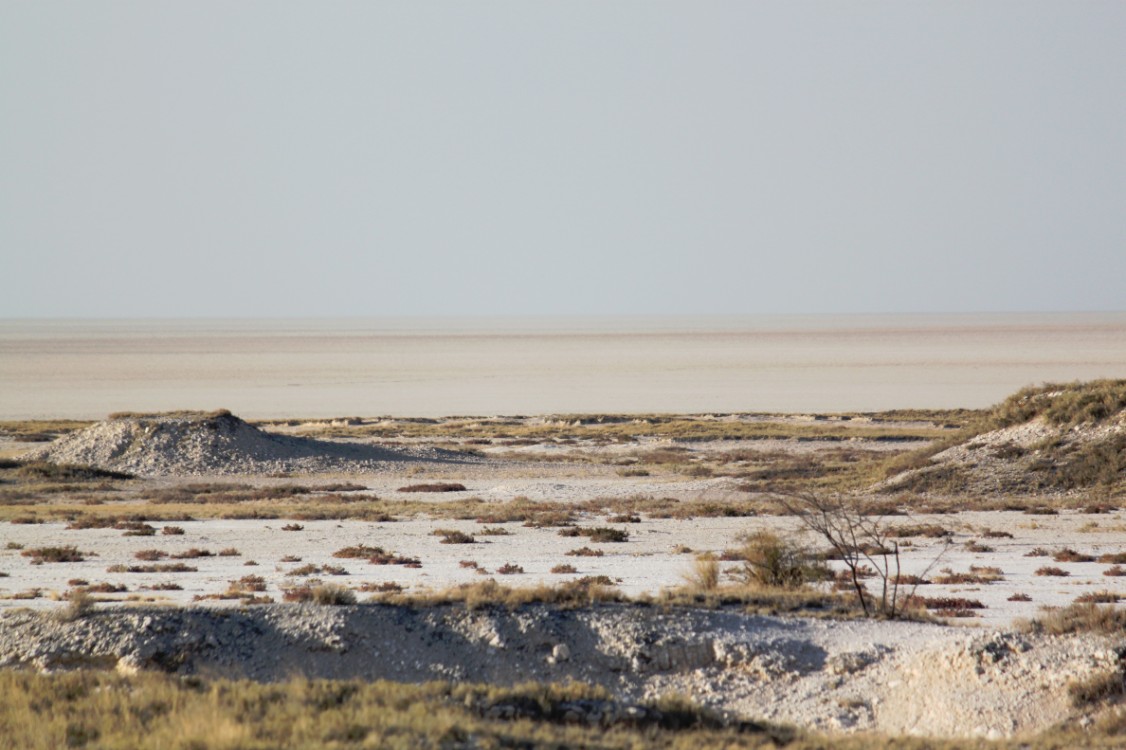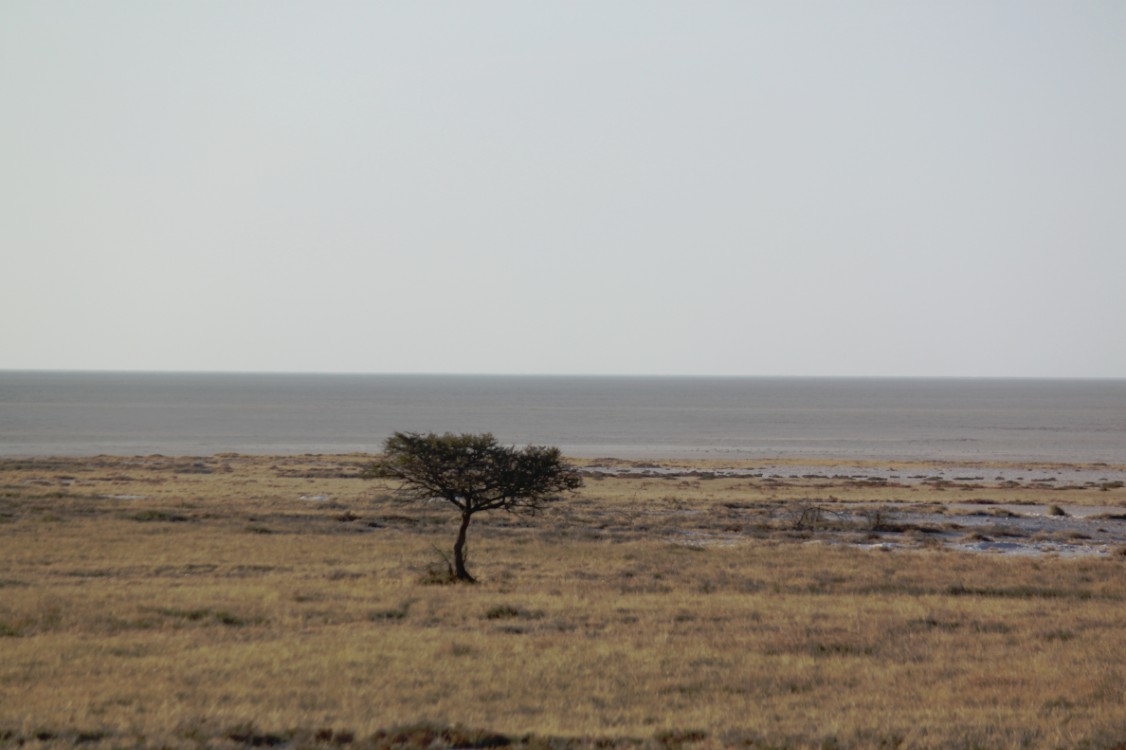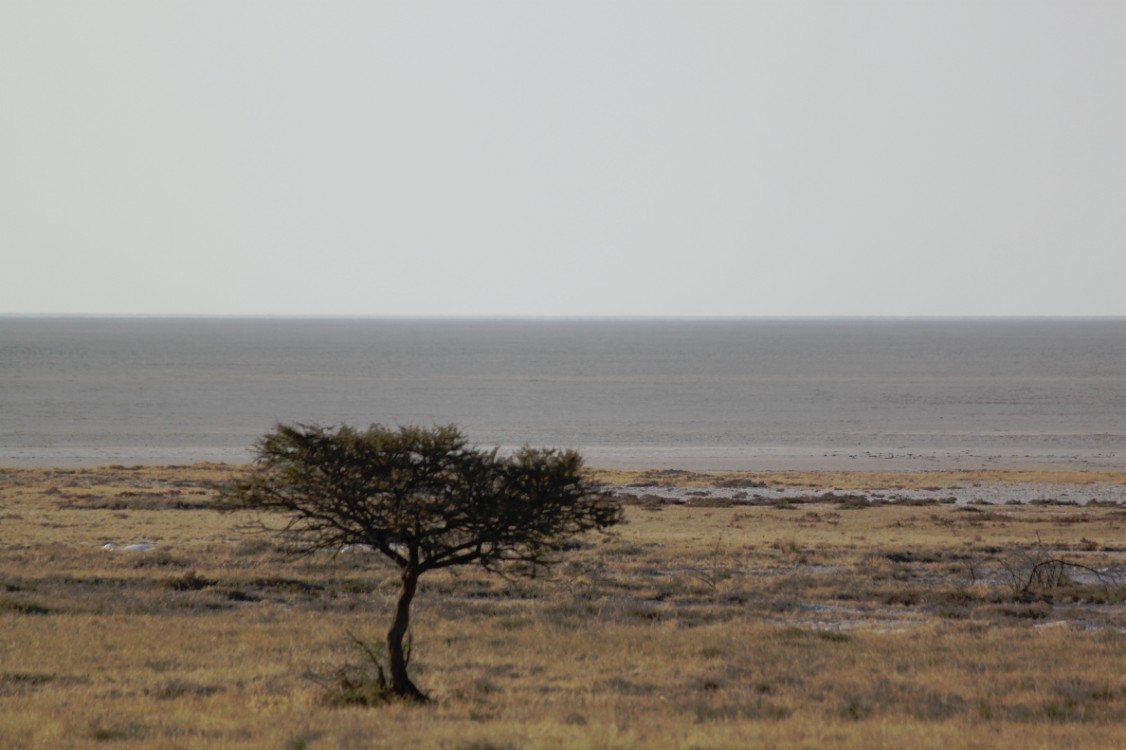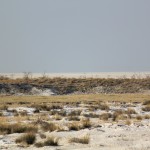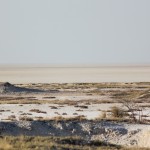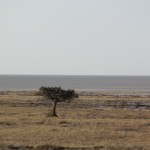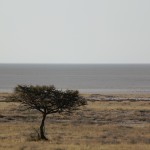11a. Namibia: Etosha National Park (Day 1 of 3) – 2015
Etosha National Park is a national park in northwestern Namibia. The park was proclaimed a game reserve on March 22, 1907 in Ordinance 88 by the Governor of German South West Africa, Dr. Friedrich von Lindequist. It was designated as Wildschutzgebiet Nr. 2 which means Game Reserve Number 2, in numerical order after West Caprivi (Game Reserve No. 1) and preceding Namib Game Reserve (No. 3). In 1958, Game Reserve No. 2 became Etosha Game Park and was elevated to status of National Park in 1967 by an act of parliament of the Republic of South Africa which administered South-West Africa during that time.
Beneath in picture 5 was my 1st shot of a Rhino (although minute in the far distance) 😉 )
Etosha National Park spans an area of 22,270 square kilometres (8,600 sq mi) and gets its name from the large Etosha pan which is almost entirely within the park. The Etosha pan (4,760 square kilometres (1,840 sq mi)) covers 23% of the area of the total area of the Etosha National Park. The park is home to hundreds of species of mammals, birds and reptiles, including several threatened and endangered species such as the black rhinoceros.
The park is located in the Kunene region and shares boundaries with the regions of Oshana, Oshikoto and Otjozondjupa.
Angolan Giraffe
The Angolan giraffe (Giraffa camelopardalis angolensis), also known as Namibian giraffe, is a subspecies of giraffe that is found in northern Namibia, south-western Zambia, Botswana, and western Zimbabwe. A 2009 genetic study on this subspecies suggests the northern Namib Desert and Etosha National Park populations form a separate subspecies.
This subspecies has large brown blotches with edges that are either somewhat notched or have angular extensions. The spotting pattern extends throughout the legs but not the upper part of the face. The neck and rump patches tend to be fairly small. The subspecies also has a white ear patch.
A maximum of 20,000 animals are estimated to remain in the wild; and about 20 are kept in zoos even though they are listed as Least Concern.
Kori Bustard
The kori bustard (Ardeotis kori) is the largest flying bird native to Africa. It is a member of the bustard family, which all belong to the order Gruiformes and are restricted in distribution to the Old World. It is one of the four species (ranging from Africa to India to Australia) in the large-bodied Ardeotis genus. In fact, the male kori bustard may be the heaviest living animal capable of flight.
This species, like most bustards, is a ground-dwelling bird and an opportunistic omnivore. Male kori bustards, which can be more than twice as heavy as the female, attempt to breed with as many females as possible and then take no part in the raising of the young. The nest is a shallow hollow in the earth, often disguised by nearby obstructive objects such as trees. The specific epithet kori is derived from the Tswana name for this bird – Kgori.
OkauKuejo
Common Ostrich
The ostrich or common ostrich (Struthio camelus) is either one or two species of large flightless birds native to Africa, the only living member(s) of the genus Struthio, which is in the ratite family. Starting in 2014, the Somali ostrich is now considered a full species separate from the common ostrich.
The ostrich shares the order Struthioniformes with the kiwis, emus, rheas and cassowaries. However, phylogenetic studies have shown that it is the basal extant member of Palaeognathae and is thus equally closely related to flighted tinamous. It is distinctive in its appearance, with a long neck and legs, and can run at up to about 70 km/h (19 m/s; 43 mph), the fastest land speed of any bird. The ostrich is the largest living species of bird and lays the largest eggs of any living bird (extinct elephant birds of Madagascar and the giant moa of New Zealand laid larger eggs).
The ostrich’s diet consists mainly of plant matter, though it also eats invertebrates. It lives in nomadic groups of 5 to 50 birds. When threatened, the ostrich will either hide itself by lying flat against the ground, or run away. If cornered, it can attack with a kick of its powerful legs. Mating patterns differ by geographical region, but territorial males fight for a harem of two to seven females.
The ostrich is farmed around the world, particularly for its feathers, which are decorative and are also used as feather dusters. Its skin is used for leather products and its meat is marketed commercially, with its leanness a common marketing point.
Oryx
Oryx is a genus consisting of four large antelope species. Three of them are native to arid parts of Africa, and the fourth to the Arabian Peninsula. Their fur is pale with contrasting dark markings in the face and on the legs, and their long horns are almost straight. The exception is the scimitar oryx, which lacks dark markings on the legs, only has faint dark markings on the head, has an ochre neck, and horns that are clearly decurved.
The Arabian oryx was only saved from extinction through a captive breeding program and reintroduction to the wild. The scimitar oryx, which is now listed as Extinct in the Wild, also relies on a captive breeding program for its survival. Small populations of several oryx species, such as the Scimitar Oryx, exist in Texas and New Mexico (USA) in wild game ranches. Gemsboks were released at the White Sands Missile Range and have become an invasive species of concern at the adjacent White Sands National Monument.
Blackbacked Jackal
The black-backed jackal (Canis mesomelas) is a canid native to two areas of Africa, separated by roughly 900 km.
One region includes the southernmost tip of the continent, including South Africa, Namibia, Botswana, and Zimbabwe. The other area is along the eastern coastline, including Kenya, Somalia, Djibouti and Ethiopia. It is listed by the IUCN as least concern, due to its widespread range and adaptability, although it is still persecuted as a livestock predator and rabies vector.
Compared to other members of the genus Canis, the black-backed jackal is a very ancient species, and has changed little since the Pleistocene, being the most basal canine alongside the closely related side-striped jackal. It is a fox-like canid with a reddish coat and a black saddle that extends from the shoulders to the base of the tail. It is a monogamous animal, whose young may remain with the family to help raise new generations of pups. The black-backed jackal is not a fussy eater, and will feed on small to medium-sized animals, as well as plant matter and human refuse.
(Southern) Pale Chanting Goshawk
The (southern) pale chanting goshawk (Melierax canorus) is a bird of prey in the family Accipitridae. This hawk breeds in southern Africa. It is a resident species of dry, open semi-desert with 75 cm or less annual rainfall. It is commonly seen perched on roadside telephone poles.
This species is 56–65 cm long. The adult has grey upperparts with a white rump. The central tail feathers are black tipped with white, and the outer feathers are barred grey and white. The head and upper breast are pale grey; the rest of the underparts are finely barred in dark grey and white. Its eyes are yellow, the bill is mostly orange, and it has long orange legs. It is paler than the grey-rumped dark chanting goshawk, Melierax metabates.
In flight, the adult has black primary flight feathers, very pale grey (white from a distance) secondaries, and grey forewings. The wingspan is about 105 cm.
Immatures have brown upperparts, with a white rump and black bars on the tail. From below, the flight feathers and tail are white with black barring, the throat is dark-streaked white, and the rest of the underparts are rufous.
The pale chanting goshawk eats a variety of vertebrate prey, mainly lizards, but also small mammals and birds, and large insects. It often walks on the ground.
Blue Wildebeast
This is generally a rather quiet bird, but during the breeding season the male makes a series of tuneful whistling calls kleeuu, kleeuu-ku-ku-ku from a tree-top perch.
Normally a female mates with a single male, but in “broken veld” vegetation, a female and two males may form a polyandrous trio.
The relatively small stick nest is built in an acacia at a height of 3 to 10 m. The female lays and incubates one or two pale bluish or greenish white, unmarked eggs. Only one chick is normally reared from a nest of two. The breeding cycle begins in midwinter and takes over 115 days. The young after leaving the nest may be found near it for some months and in the following year may even display in the same area. Some pairs and especially trios raise a second brood, starting about 24 days after the first brood fledges.
Honey badger
The honey badger (Mellivora capensis), also known as the ratel (/ˈreɪtəl/ or /ˈrɑːtəl/), is the only species in the mustelid subfamily Mellivorinae and its only genus Mellivora. It is native to Africa, Southwest Asia, and the Indian subcontinent. Despite its name, the honey badger does not closely resemble other badger species; instead, it bears more anatomical similarities to weasels. It is classed as Least Concern by the IUCN owing to its extensive range and general environmental adaptations. It is primarily a carnivorous species and has few natural predators because of its thick skin and ferocious defensive abilities.
Red Hartebeest
The red hartebeest (Alcelaphus buselaphus caama or A. caama) is a species of even-toed ungulate in the family Bovidae found in Southern Africa. More than 130,000 individuals live in the wild. The red hartebeest is closely related to the tsessebe and the topi.
Alcelaphus buselaphus caama is a large African antelope of the family Bovidae, one of ten subspecies; it is sometimes treated as a separate species, A. caama. Commonly known as the red hartebeest, it is the most colorful hartbeest, with black markings contrasting against its white abdomen and behind. It has a longer face that other subspecies, with complex curving horns joined at the base. The average weight of a male is about 150 kg, and female is 120 kg. Their average shoulder height is 135 cm, and horns are 60 cm long. The life expectancy of a red hartebeest is around 19 years. Little sexual dimorphism is noted between males and females, showing no distinct identifiable physical features, but body size is slightly affected. Horn size, however, expresses more dimorphism between males and females, as males fight and defend themselves for sexual selection. Thus, male skull weight and circumference is slightly greater than that of the female. Hartebeests have an excellent sense of hearing and smell, although their sense of sight is poor. When alarmed, hartebeests elude confusion before running, by which they can reach a maximum speed of 55 km/h. Their evasion tactic is to run in a zigzag pattern, making it difficult for predators to catch them.
Plains (Burchell’s) Zebra
The Etosha Pan
The Etosha pan is a large endorheic salt pan, forming part of the Kalahari Basin in the north of Namibia. The 120-kilometre-long (75-mile-long) dry lakebed and its surroundings are protected as Etosha National Park, one of Namibia’s largest wildlife parks. The pan is mostly dry but after a heavy rain it will acquire a thin layer of water, which is heavily salted by the mineral deposits on the surface of the pan, which most of the year is dry mud coated with salt.
Location and description
Etosha, meaning ‘Great White Place’ is made of a large mineral pan. The area exhibits a characteristic white and greenish surface, which spreads over 4,800[1] km2. The pan developed through tectonic plate activity over about ten million years. Around 16,000 years ago, when ice sheets were melting across the land masses of the Northern Hemisphere, a wet climate phase in southern Africa filled Etosha Lake. Today however the Etosha Pan is mostly dry clay mud split into hexagonal shapes as it dries and cracks, and is seldom seen with even a thin sheet of water covering it.
It is assumed that the Cunene River fed the lake at that time, but tectonic plate movements over time caused a change in river direction, resulting in the lake running dry and leaving a salt pan. Now the Ekuma River is the sole source of water for the lake. Typically, little river water or sediment reaches the dry lake because water seeps into the riverbed along its 250-kilometre (160 mi) course, reducing discharge along the way.
History
In the colonial era, the first non-Africans to explore this area were the Europeans Charles John Andersson and Francis Galton in 1851. The American commercial traveller McKeirnan visited the Etosha area in 1876.
Flora and fauna
The surrounding area is dense mopane woodland which is occupied by herds of elephants on the south side of the lake. Mopane trees are common throughout south-central Africa, and host the mopane worm, which is the larval form of the moth Gonimbrasia belina, and an important source of protein for rural communities.
The salt desert supports very little plant life except for the blue-green algae that gives the Etosha its characteristic colouring, and grasses like Sporobolus spicatus which quickly grow in the wet mud following a rain. Away from the lake there is grassland that supports grazing animals.
This harsh dry land with little vegetation and small amounts of salty water, when it is present at all, supports little wildlife all year round but is used by a large number of migratory birds. The hypersaline pan supports brine shrimp and a number of extremophile micro-organisms tolerant of the high saline conditions.(C.Michael Hogan. 2010.) In particularly rainy years the Etosha pan becomes a lake approximately 10 cm in depth and becomes a breeding ground for flamingos, which arrive in their thousands, and great white pelican (Pelecanus onocrotalus).
The surrounding savanna is home to a number of mammals that will visit the pan and surrounding waterholes when there is water. These include quite large numbers of zebra (Equus quagga), blue wildebeest (Connocheatus taurinus), gemsbok, eland and springbok (Antidorcas marsupialis) as well as black rhinoceros, elephants, lions, leopards, and giraffe.
Threats and protection
The Etosha pan is completely within the national park and is designated as a Ramsar wetland of international importance and a World Wildlife Fund ecoregion (Etosha Pan halophytics).

